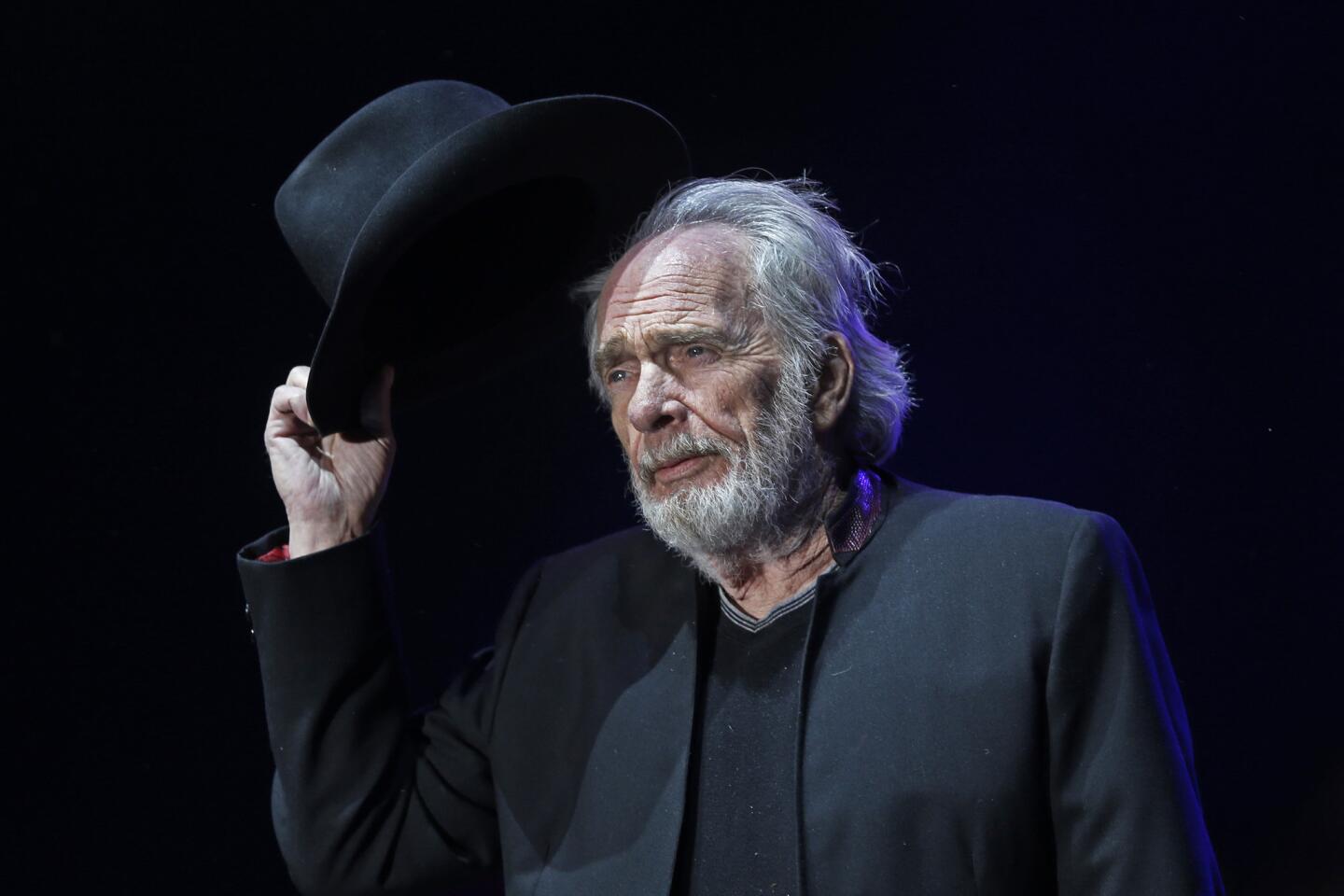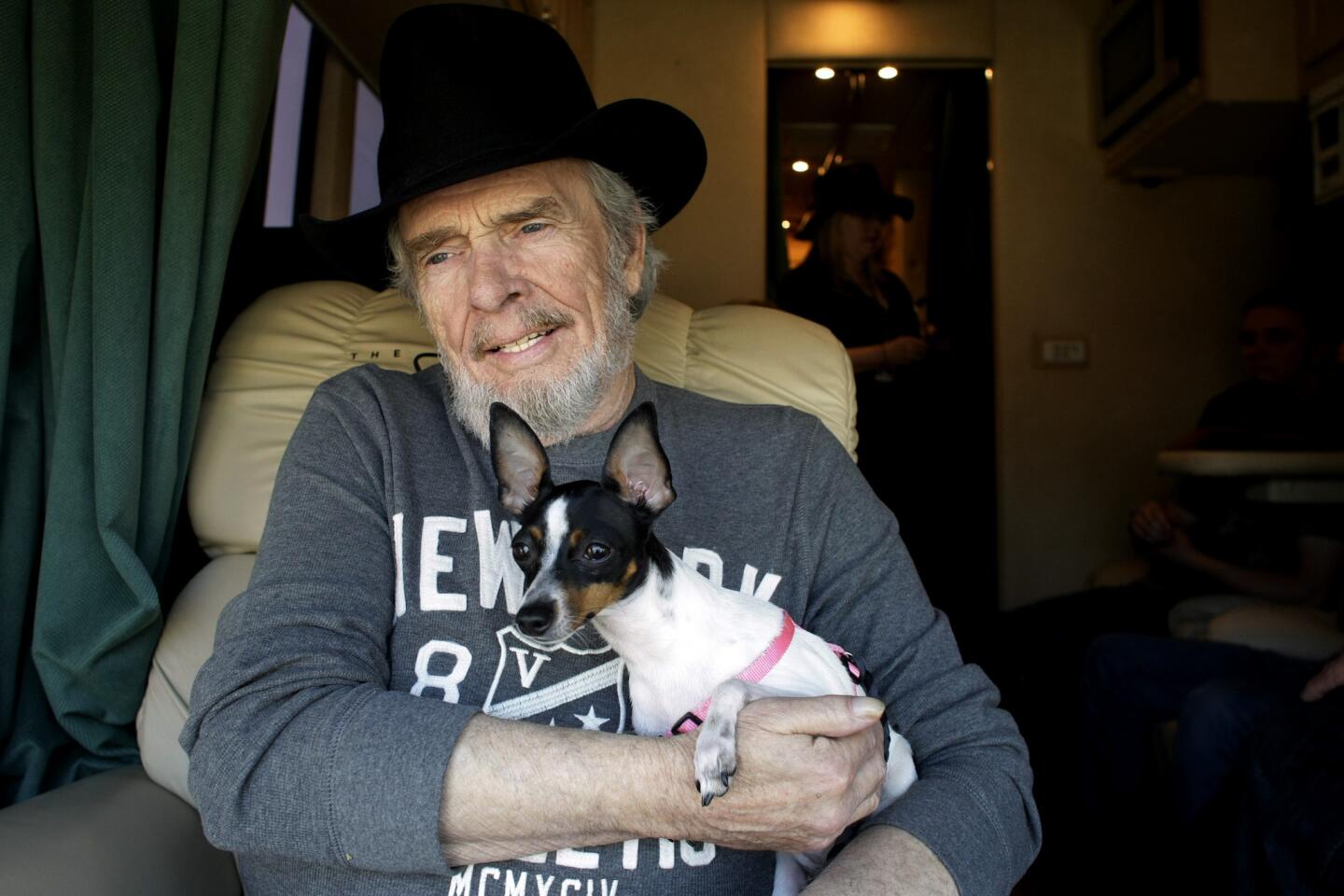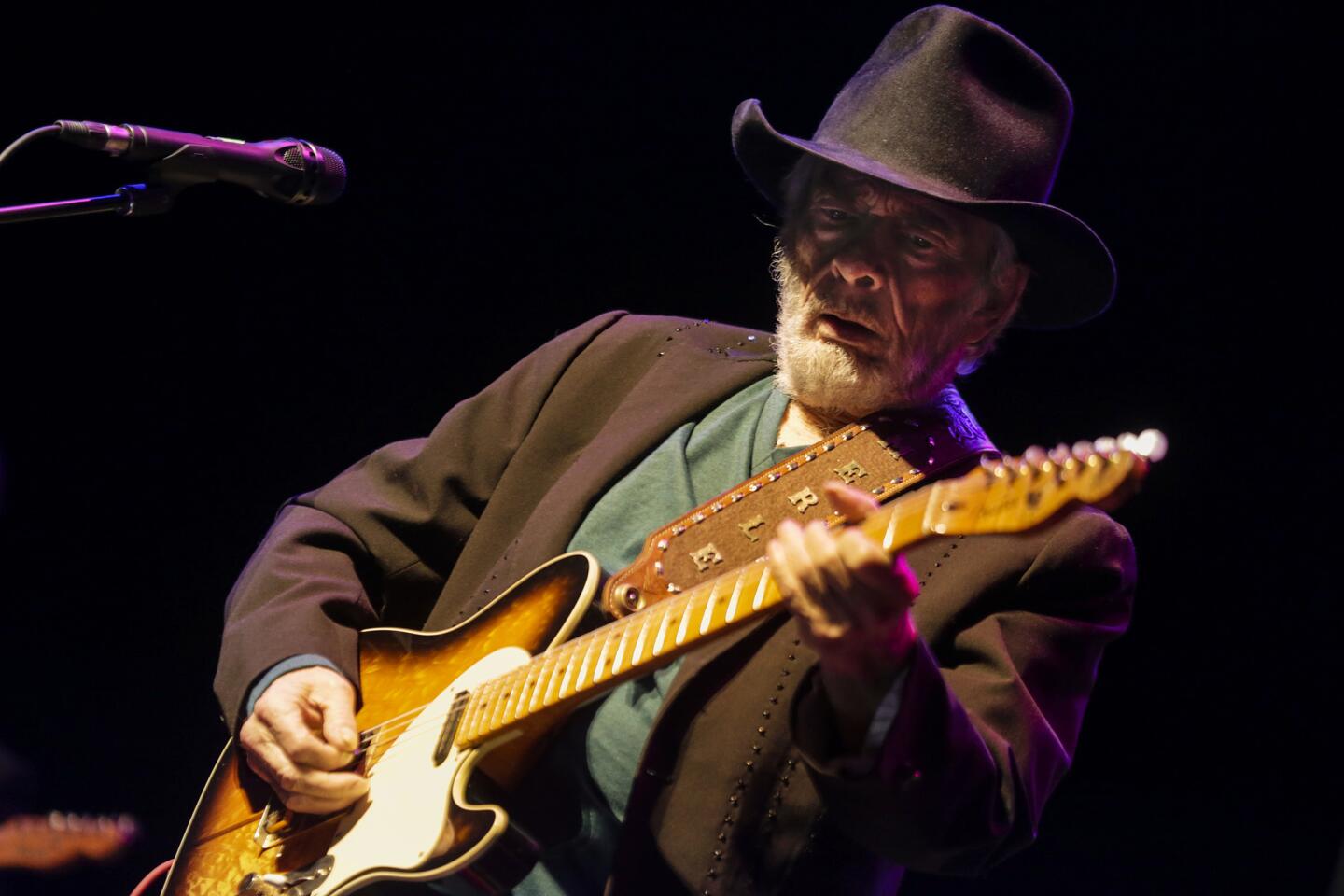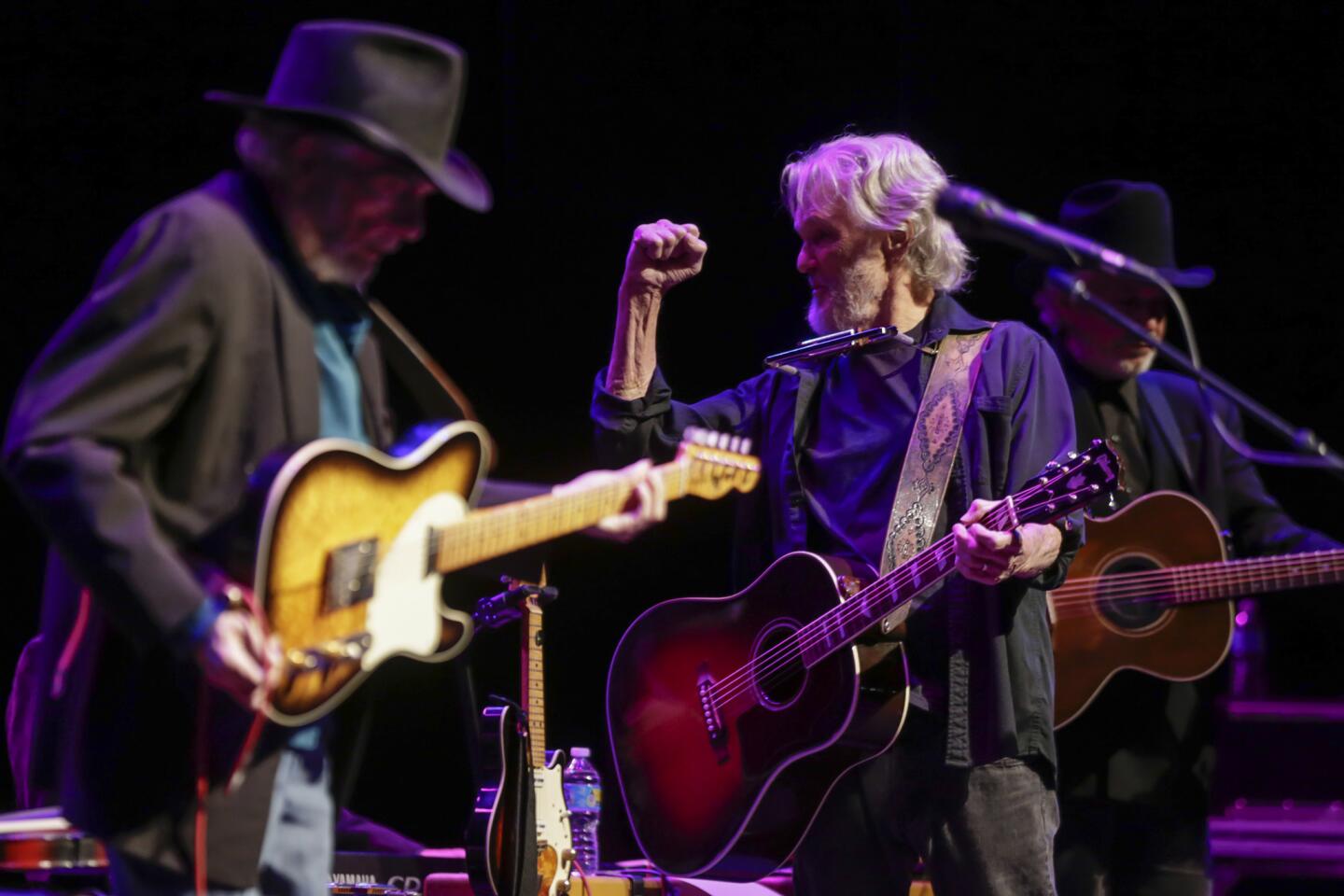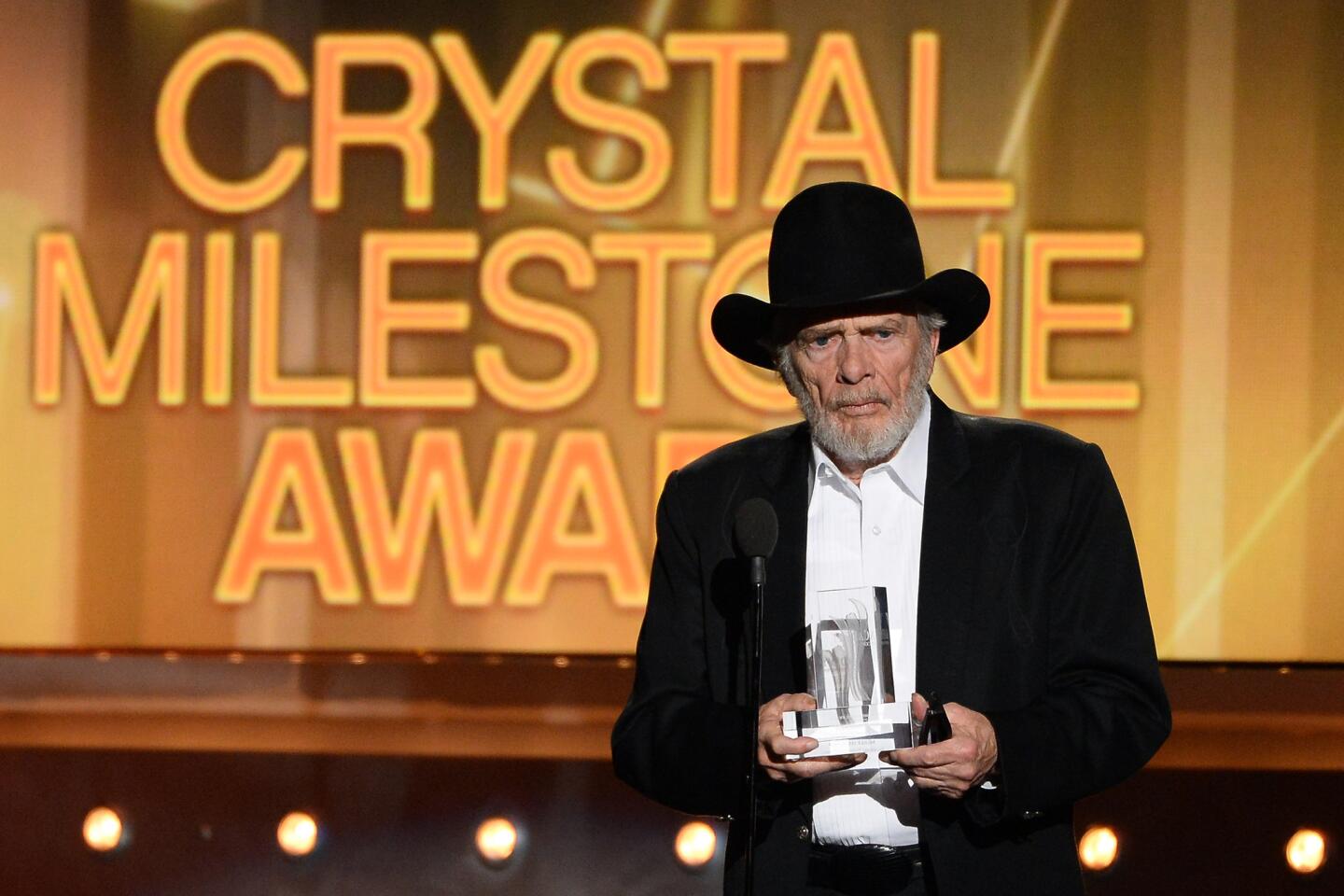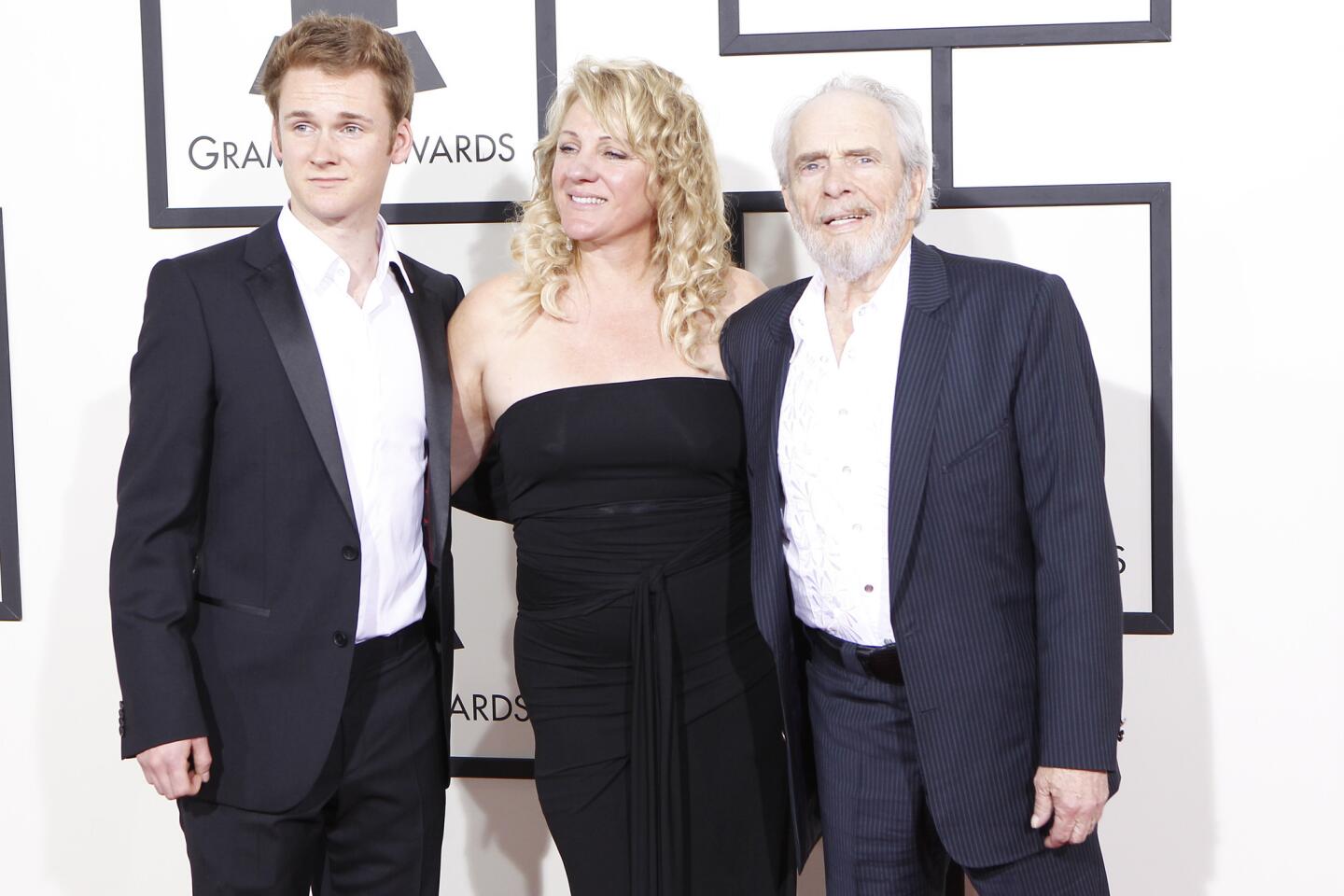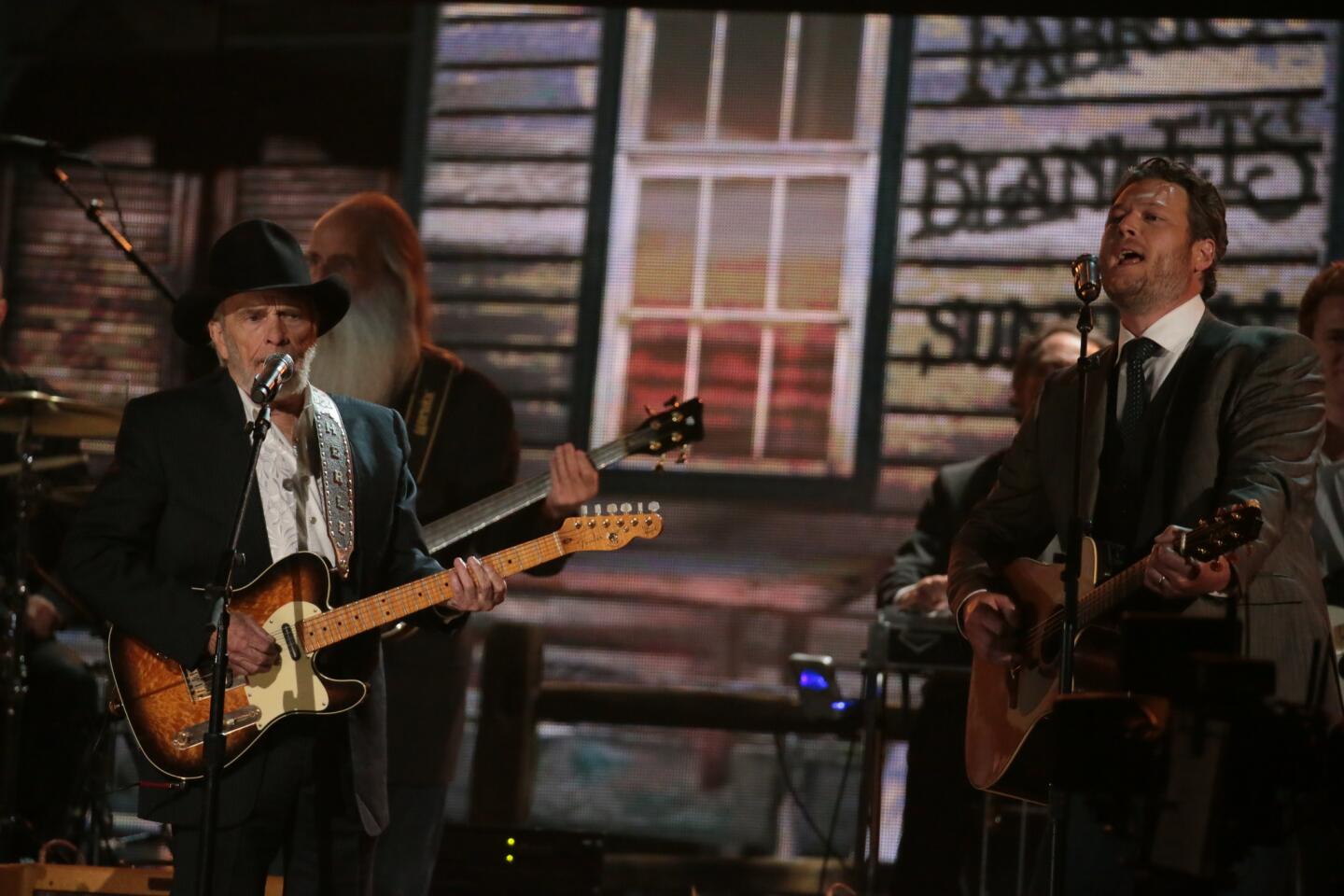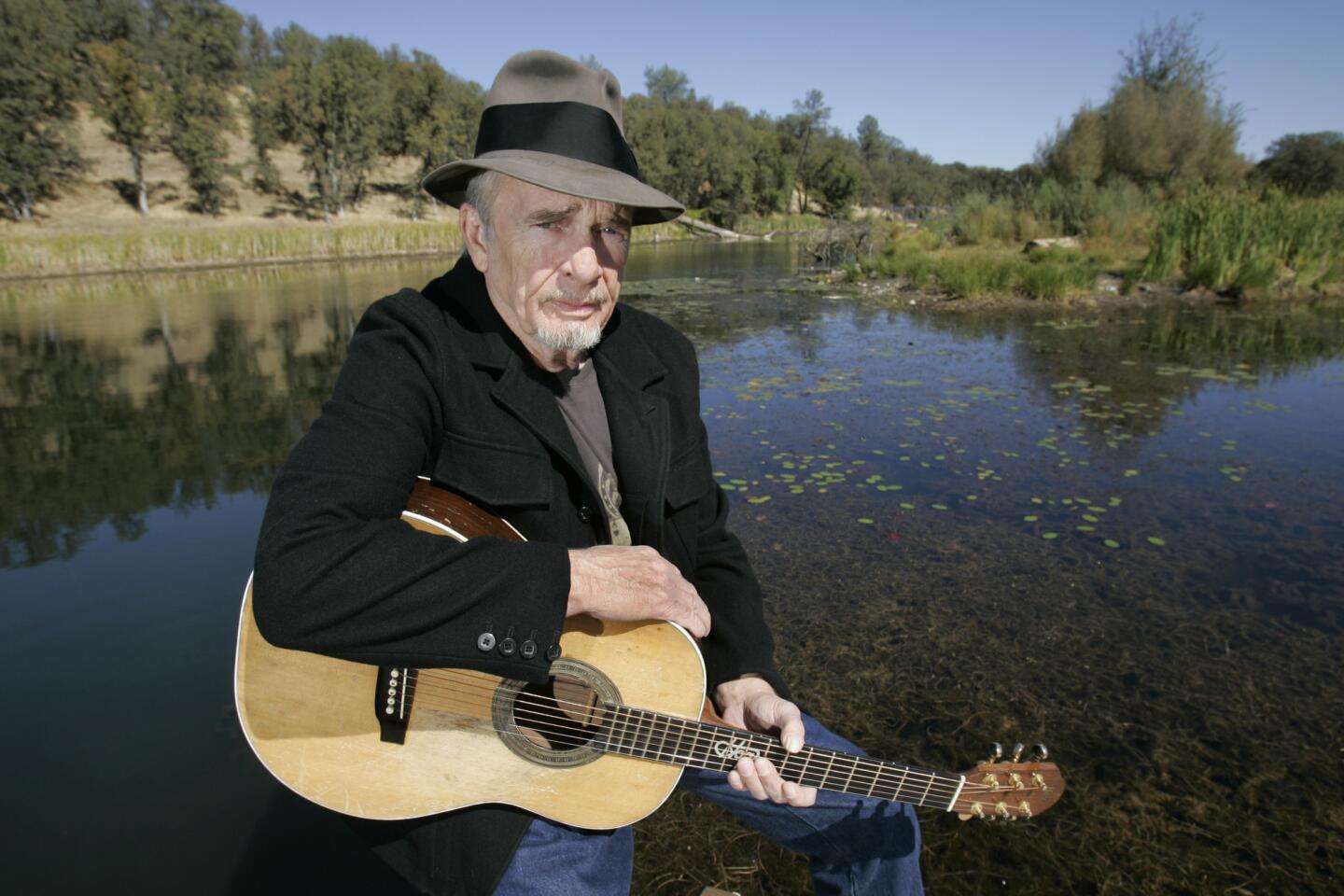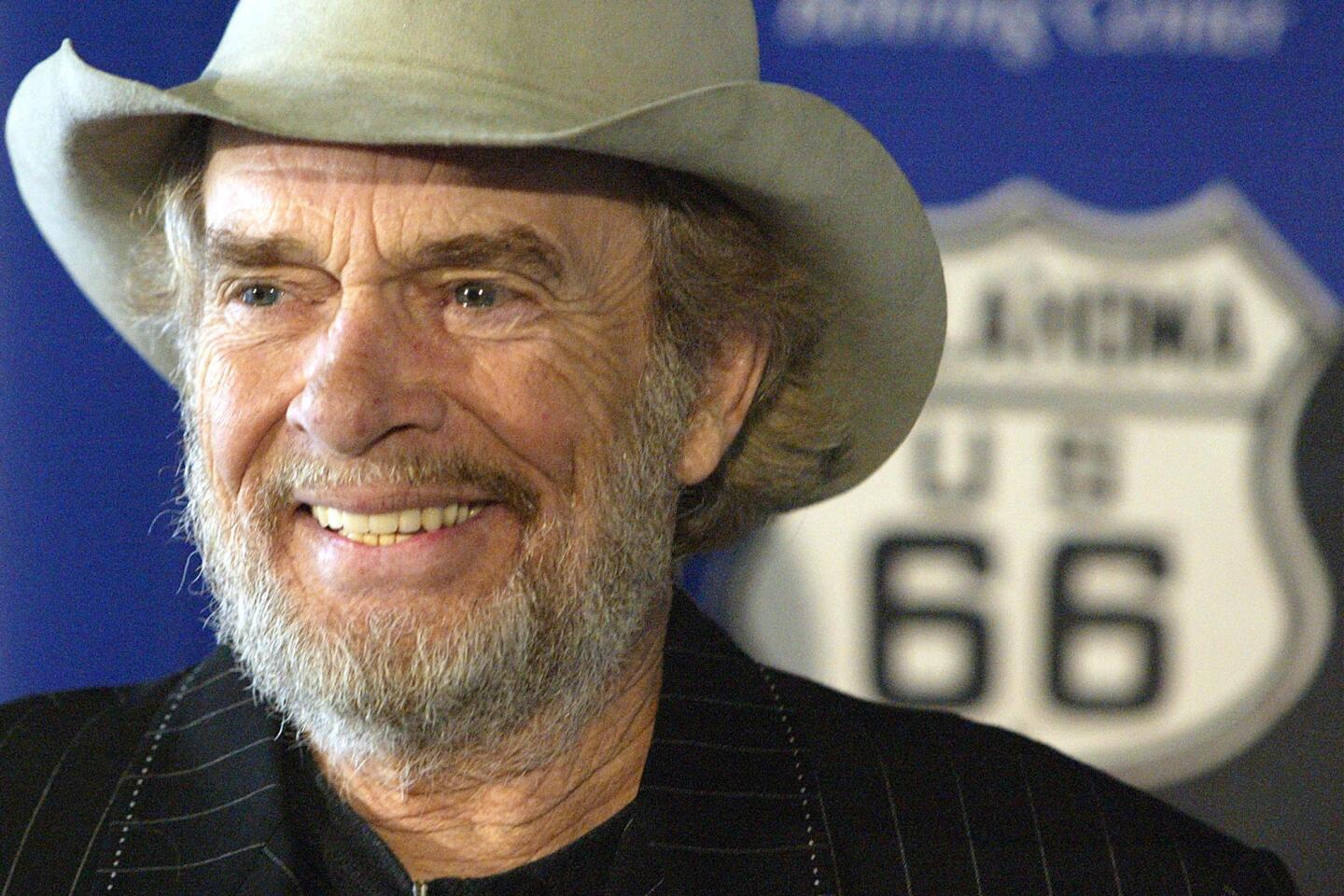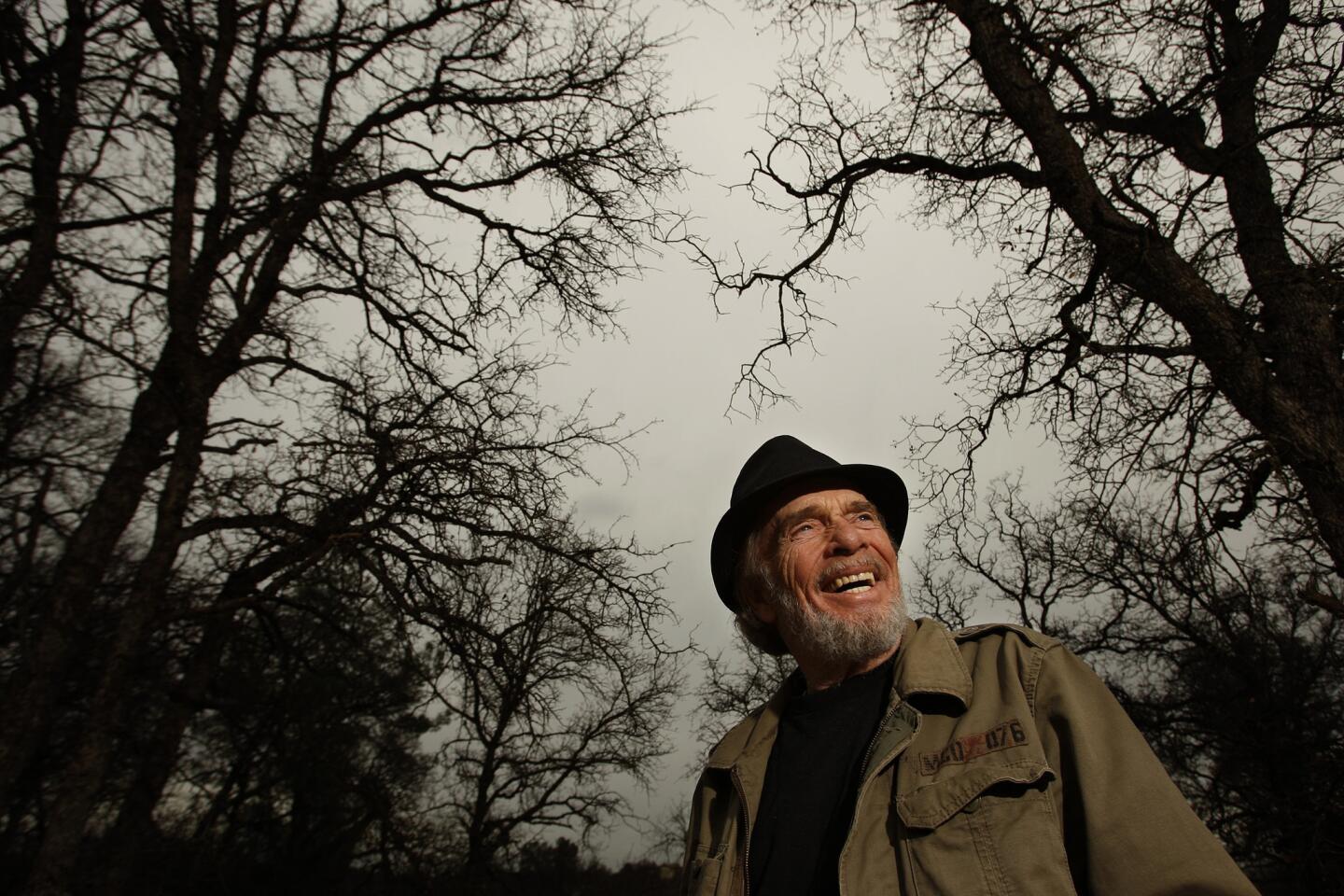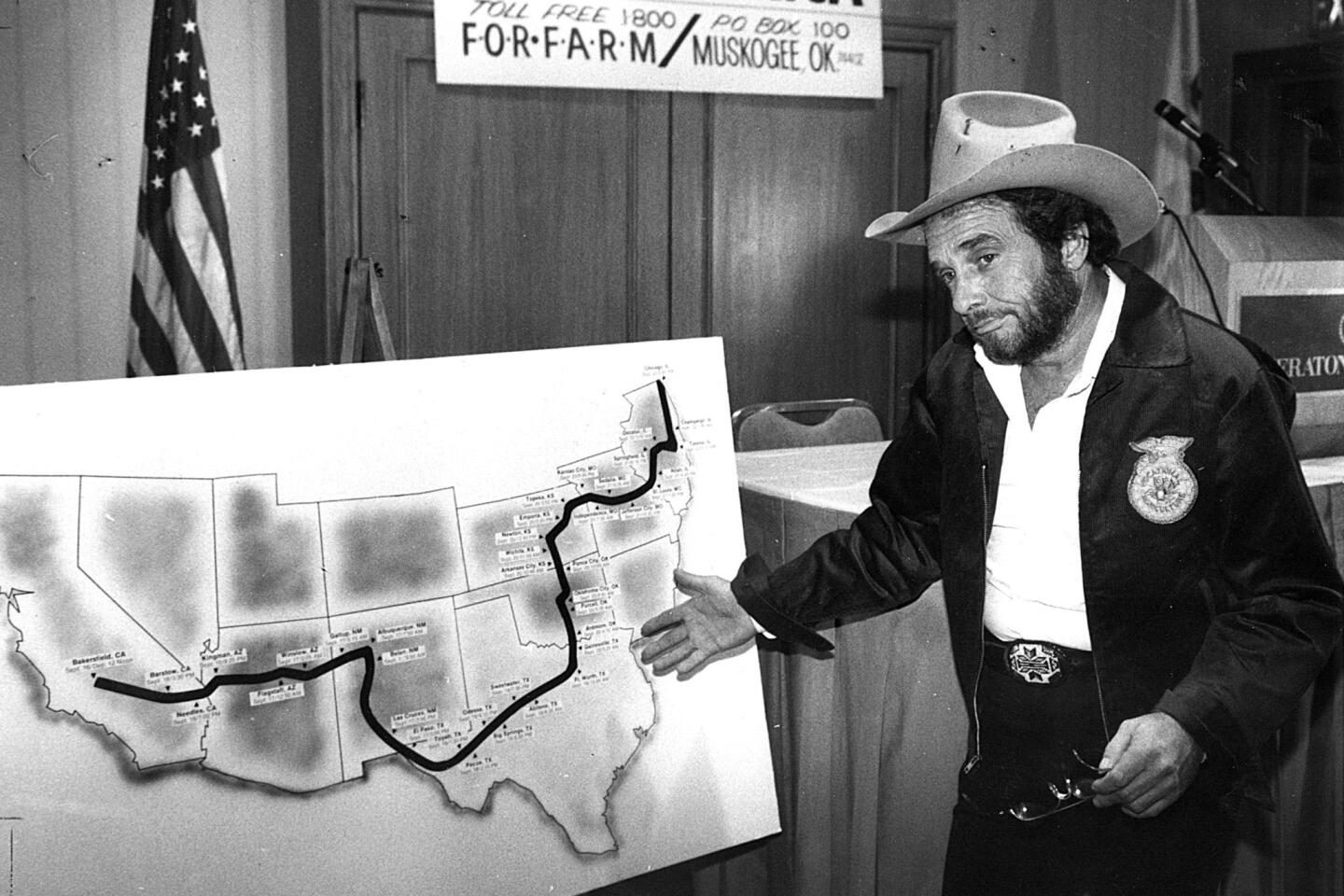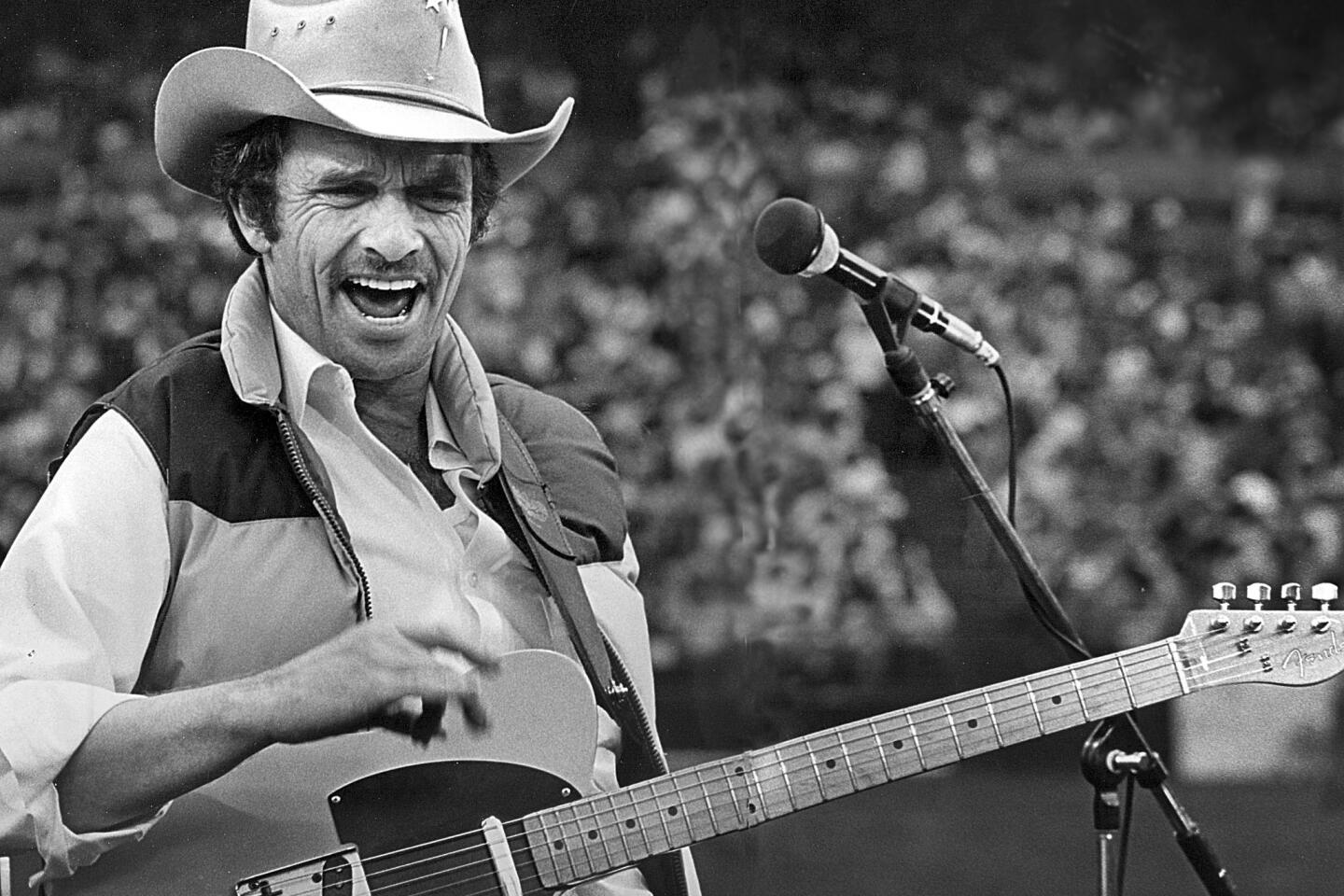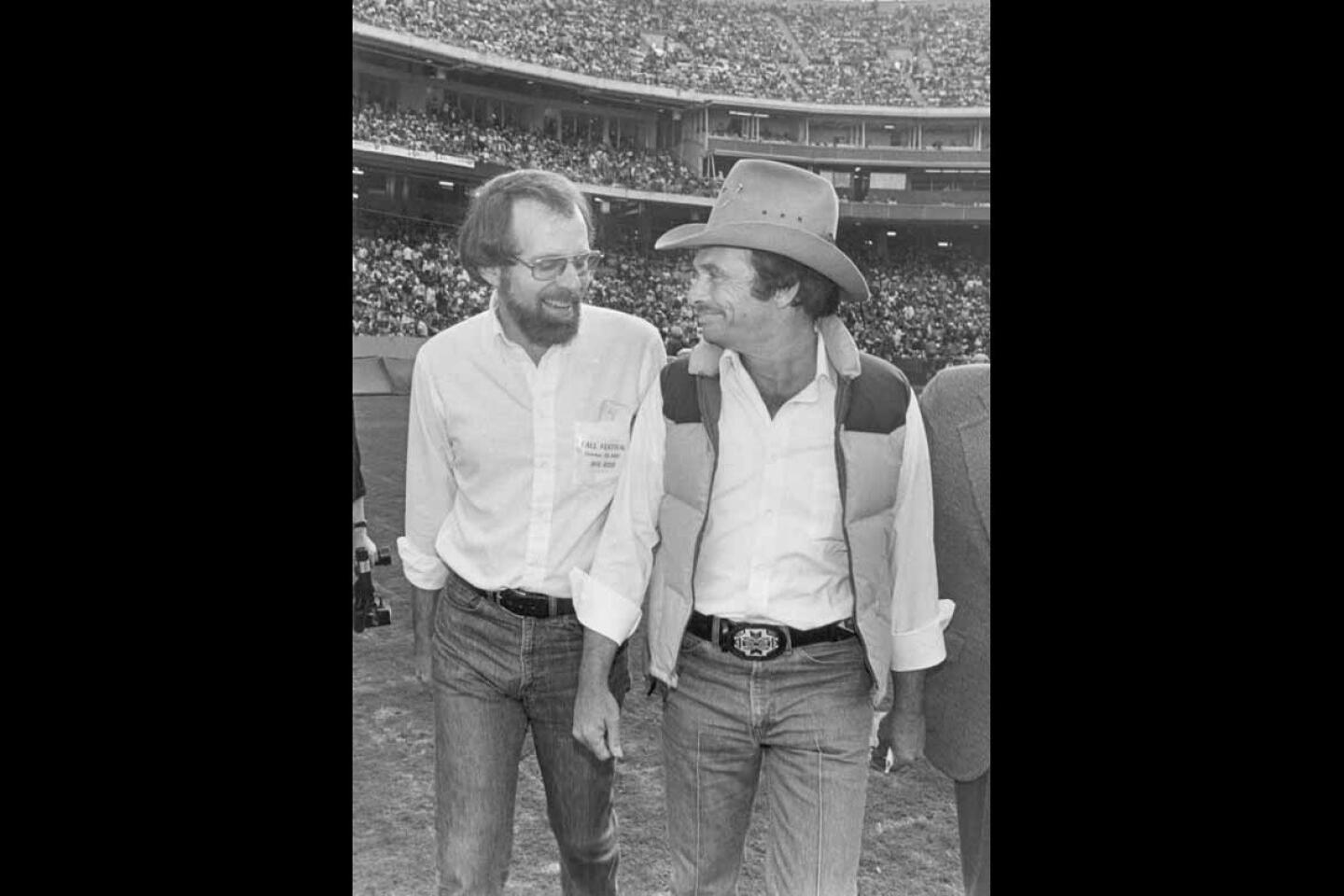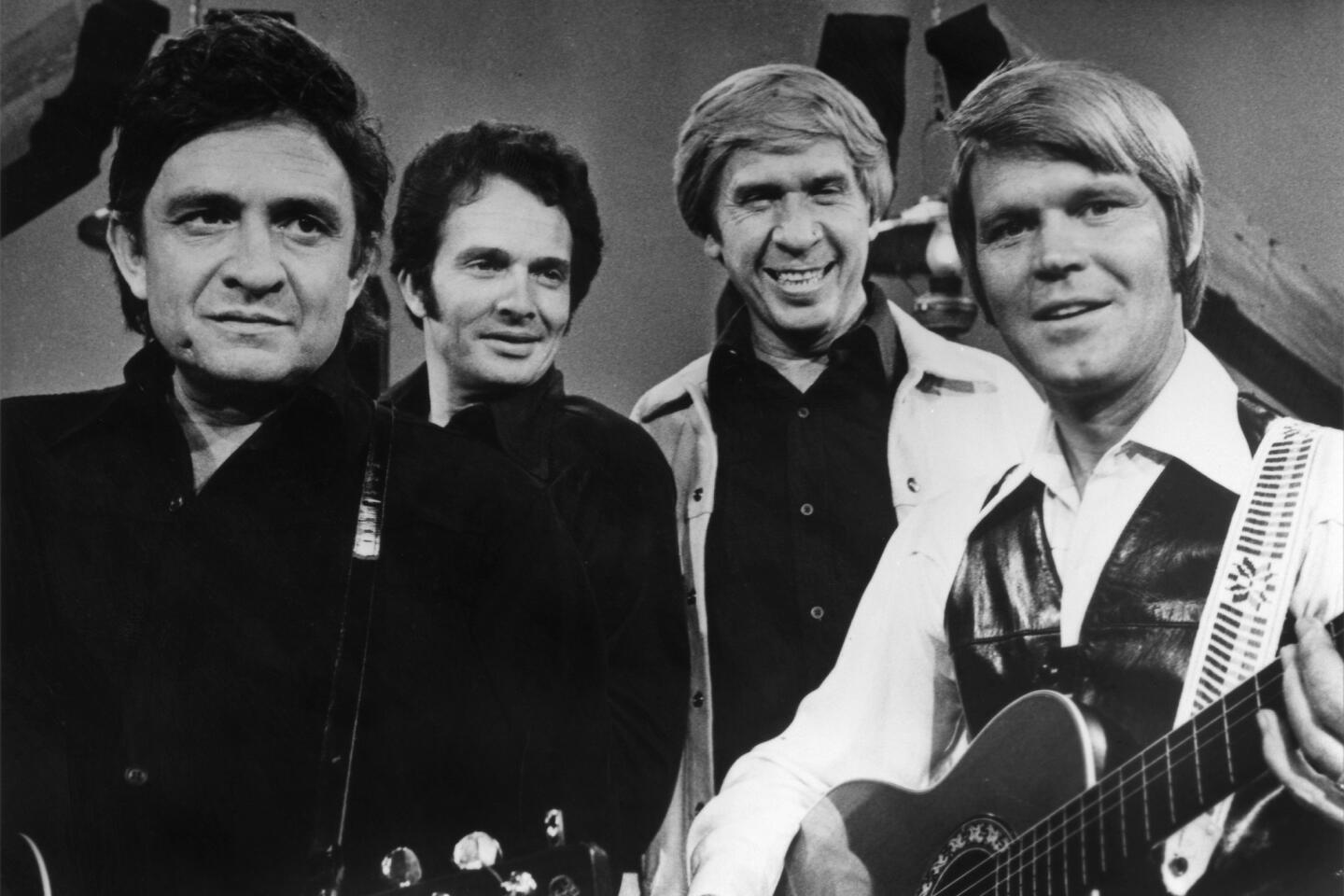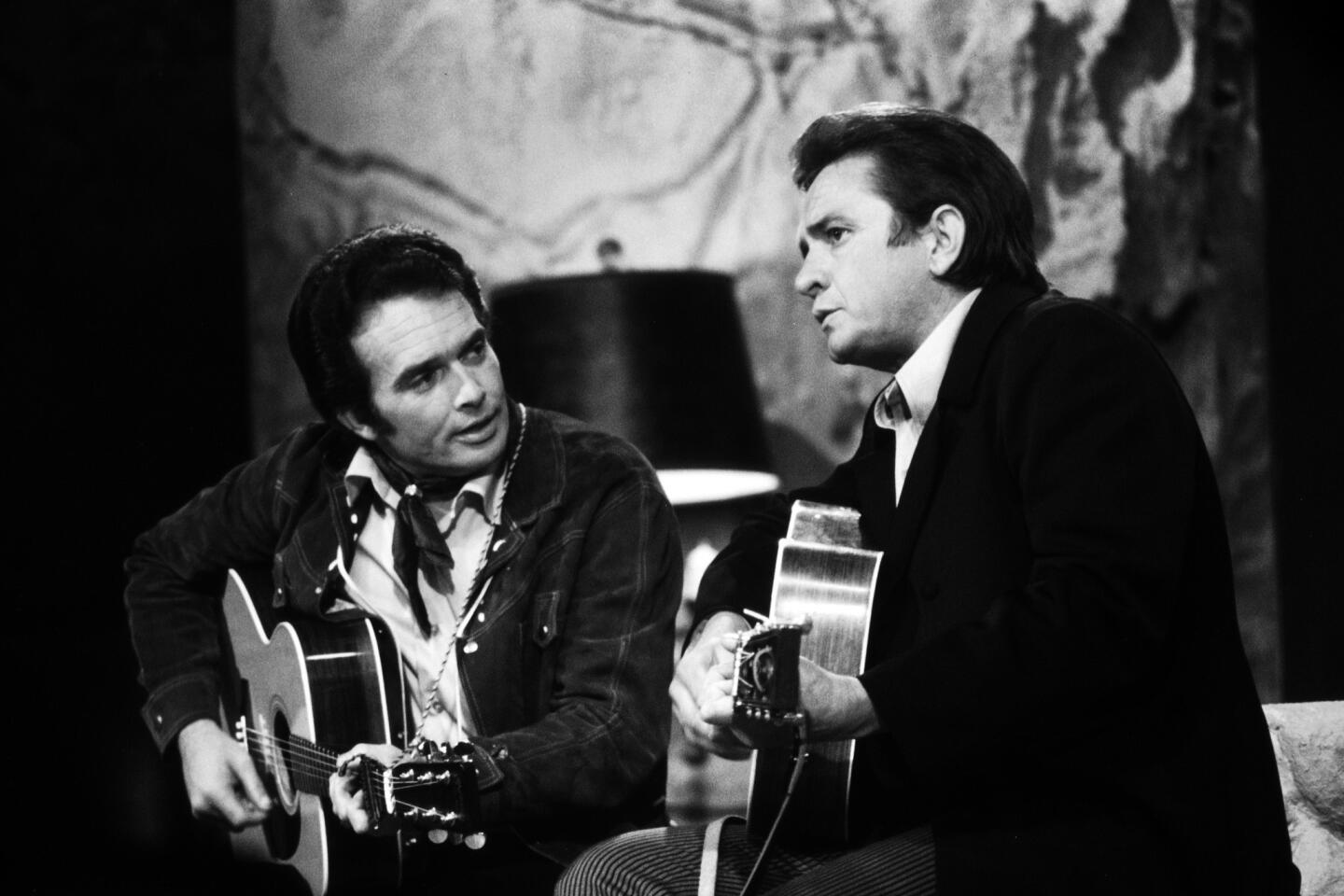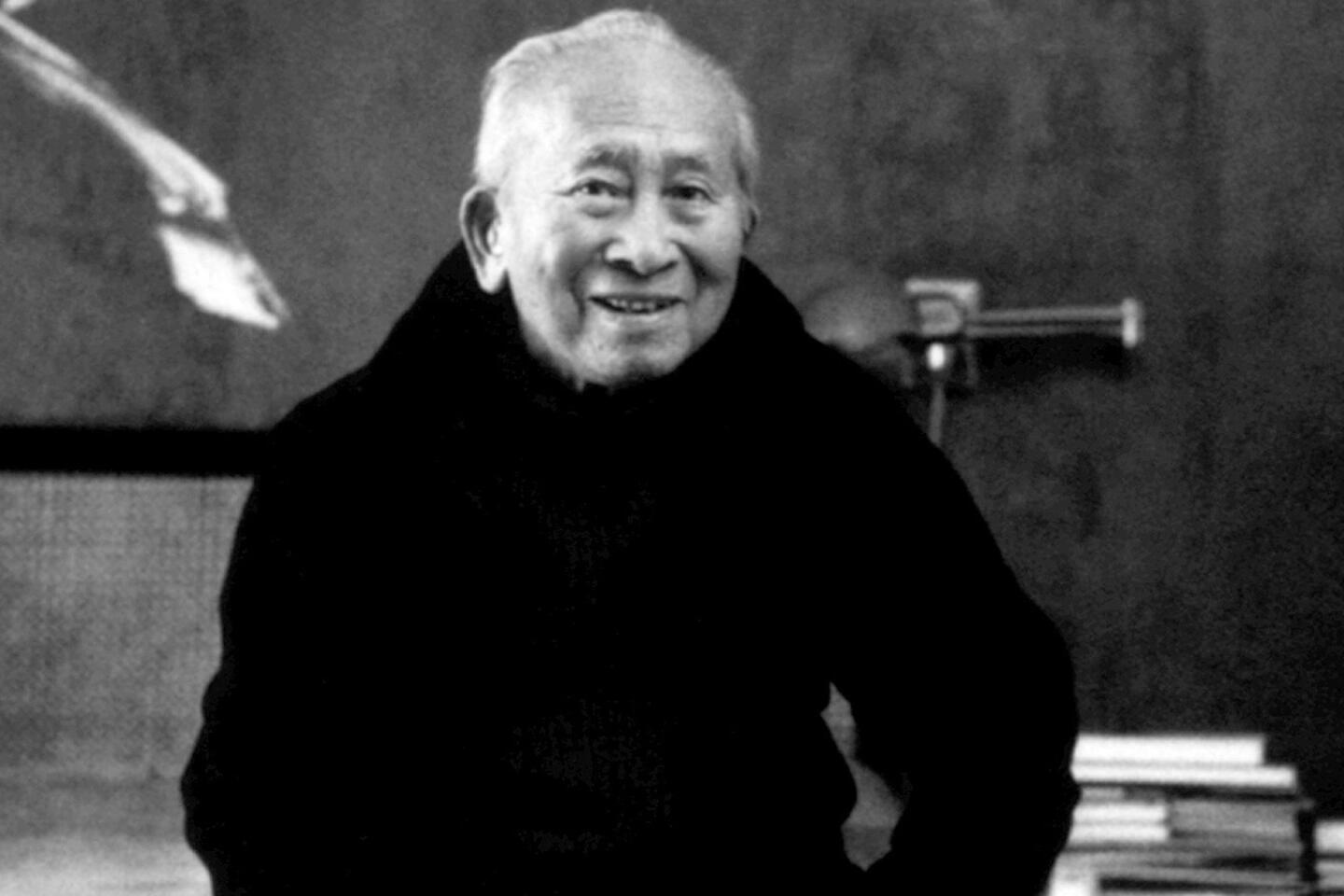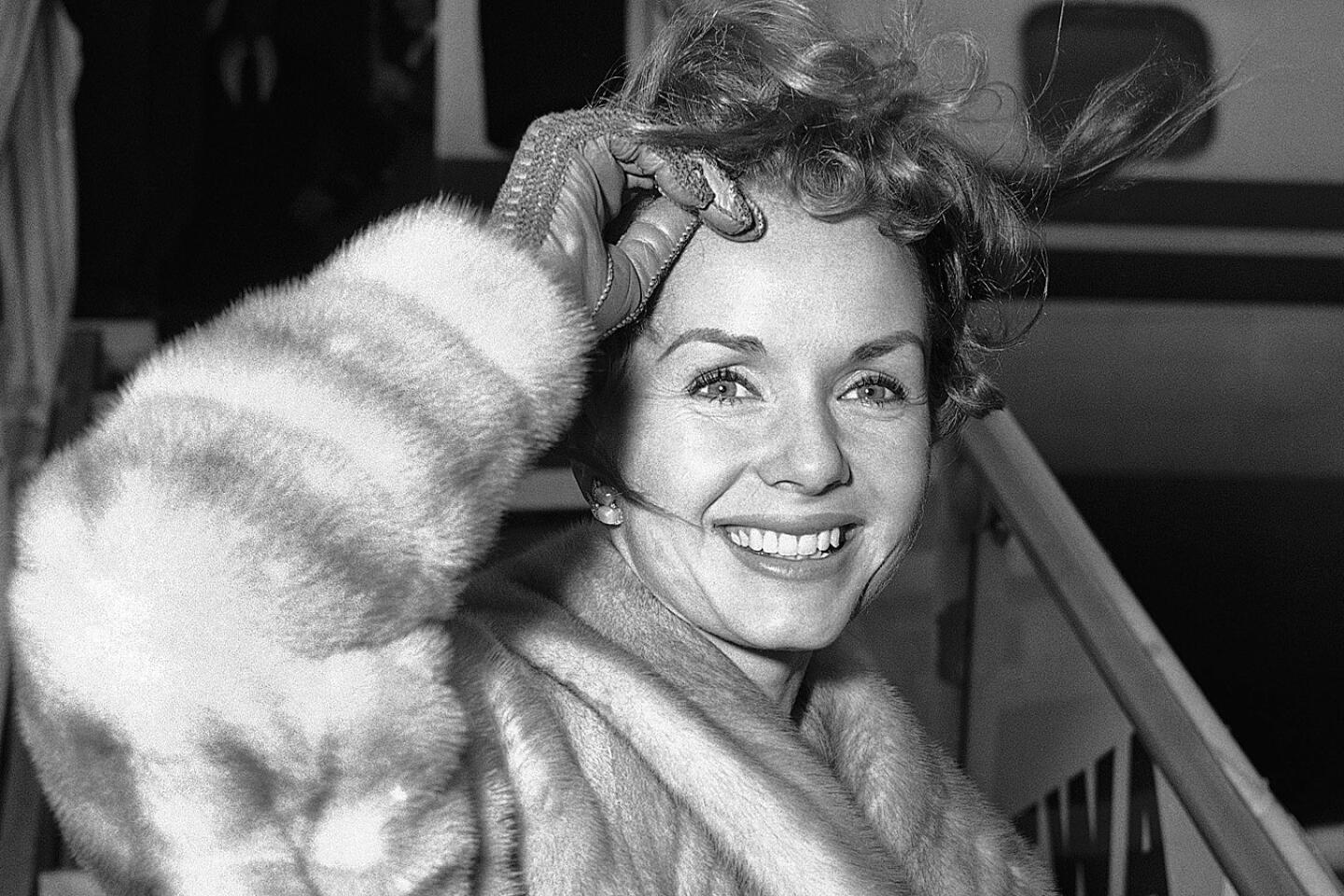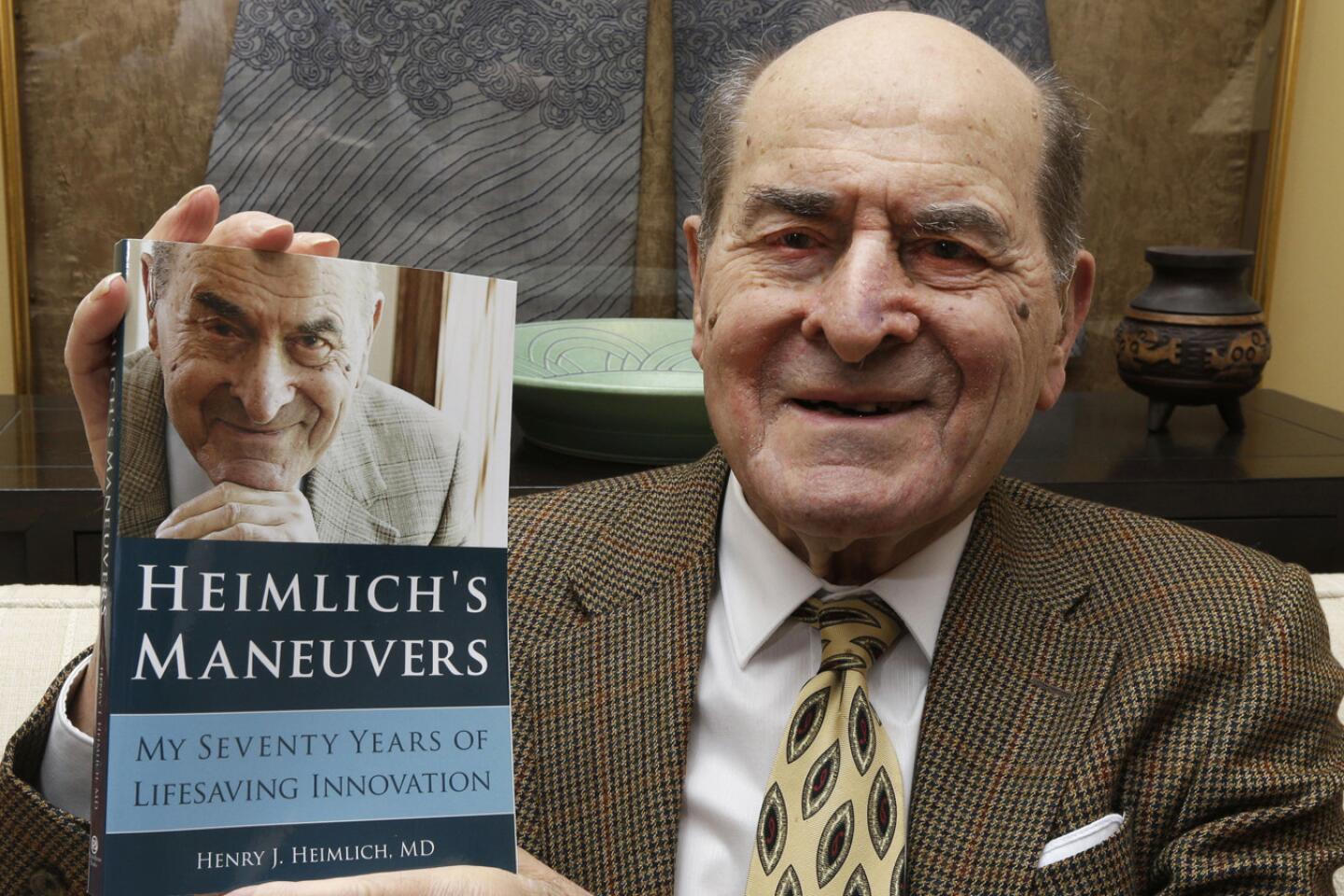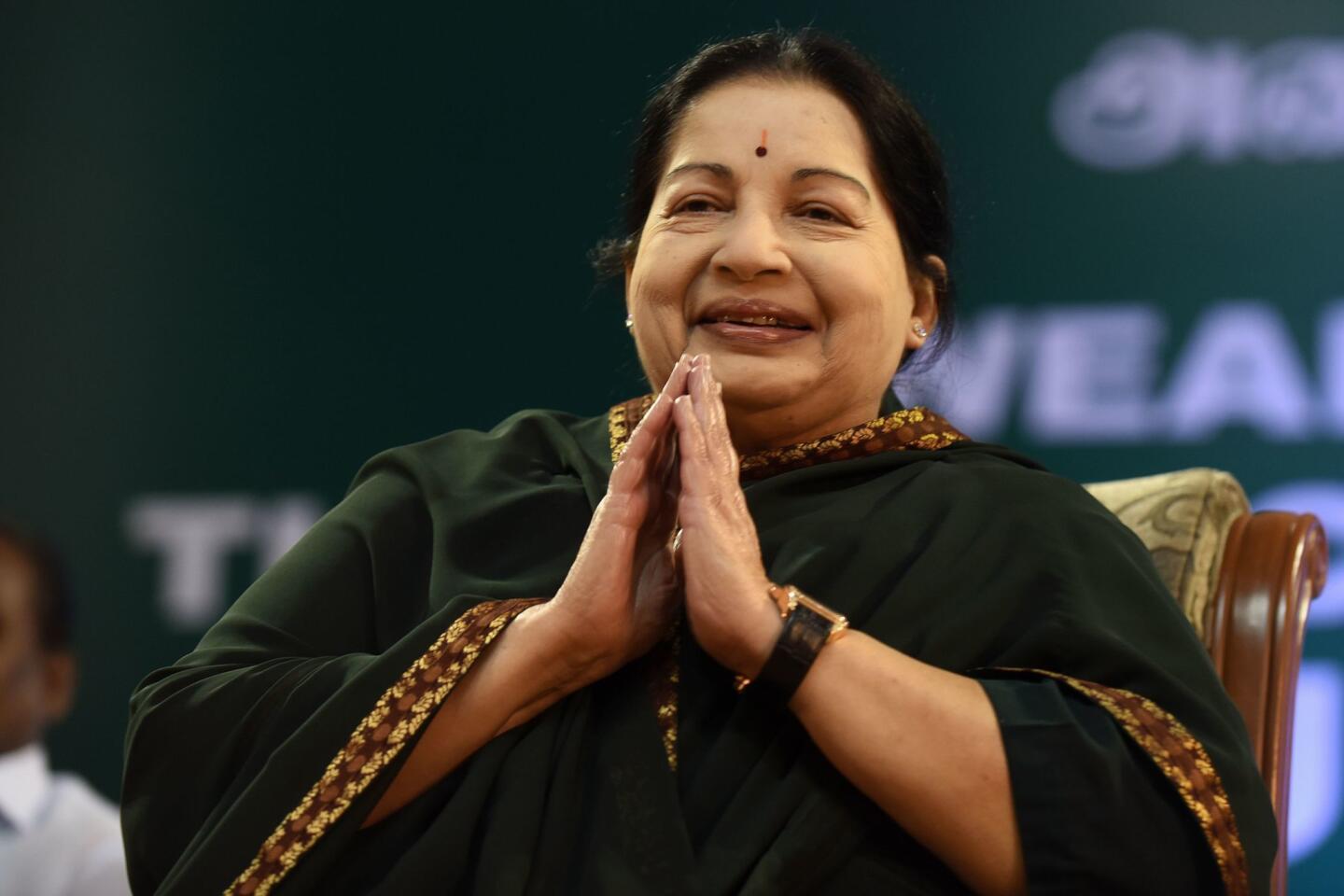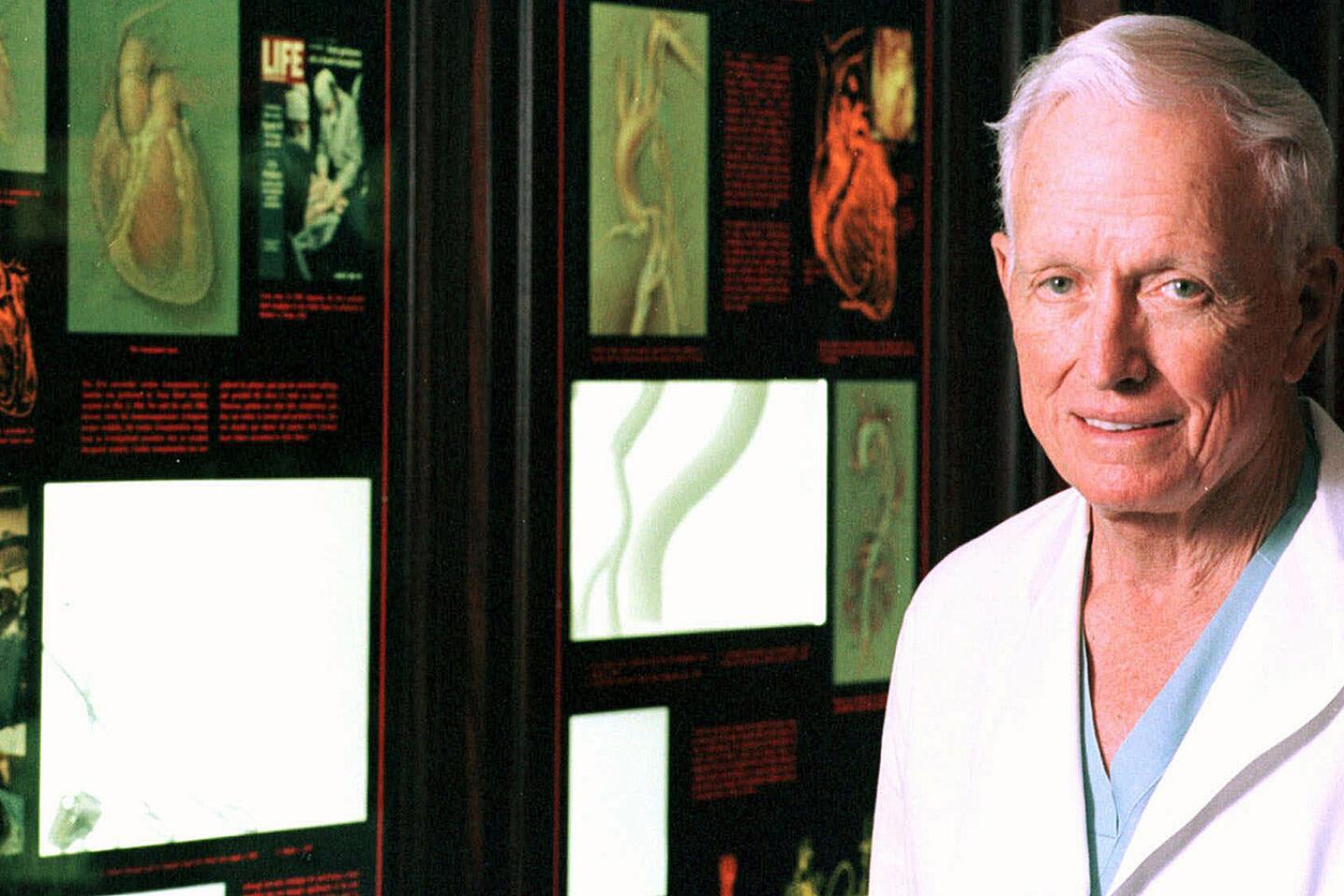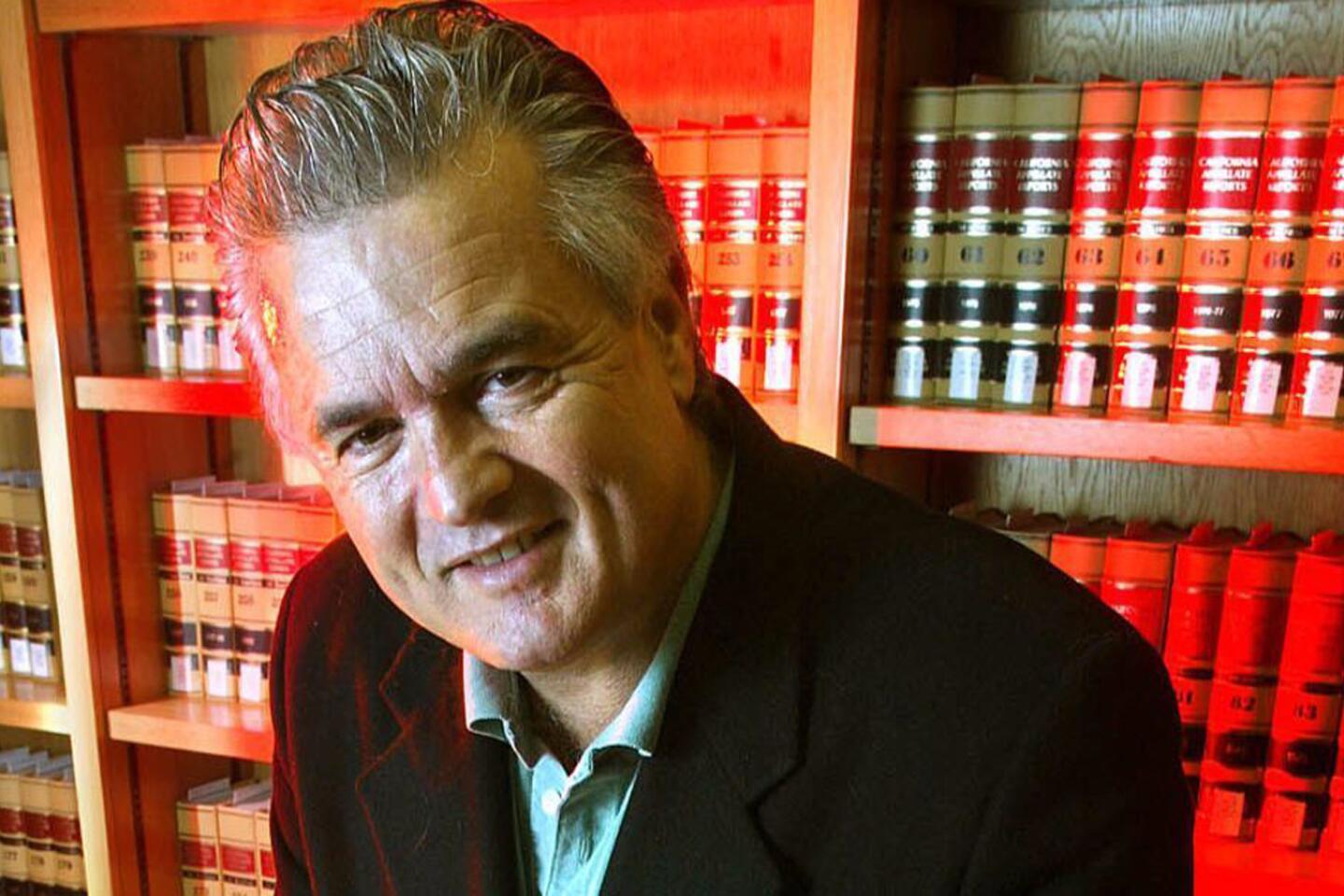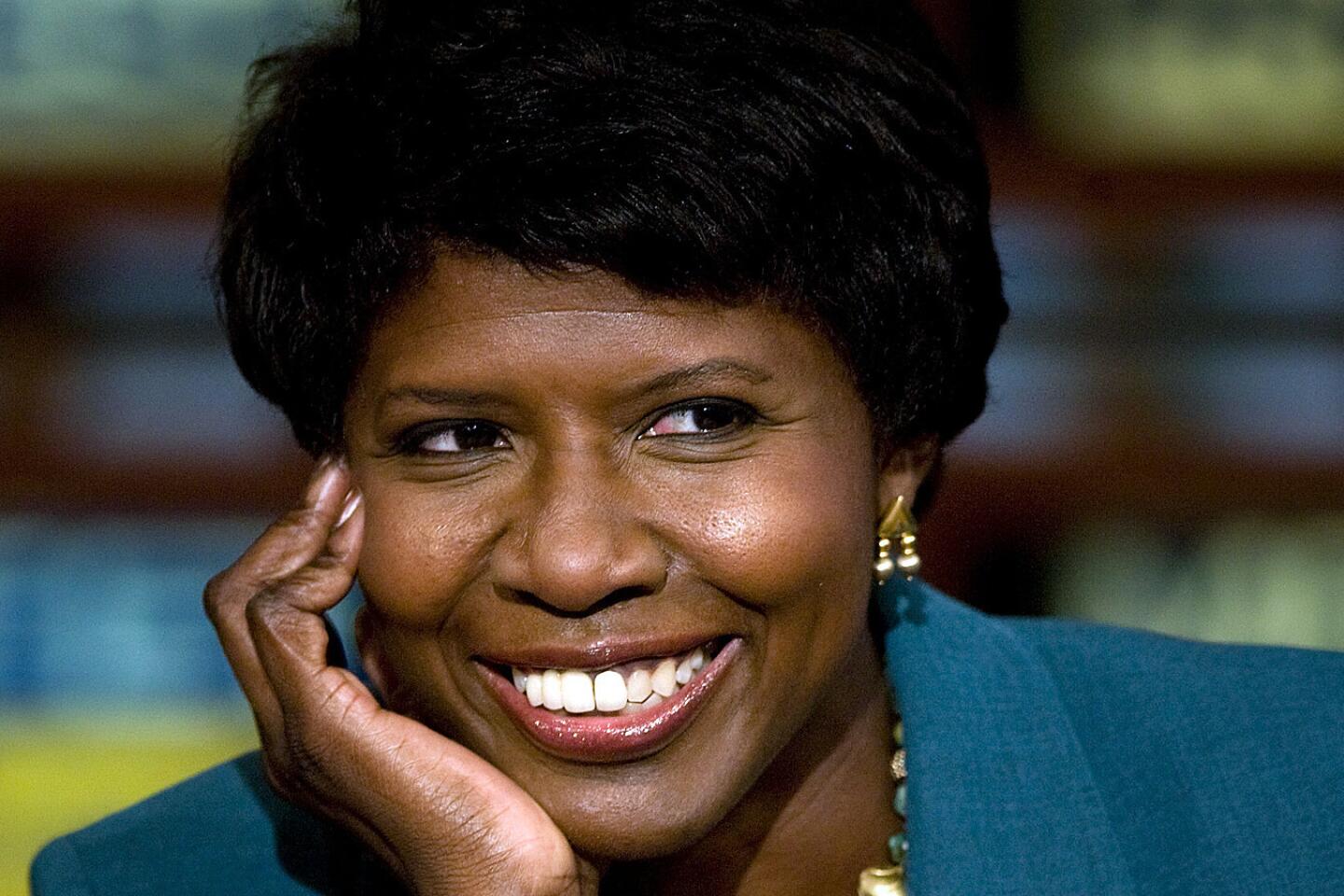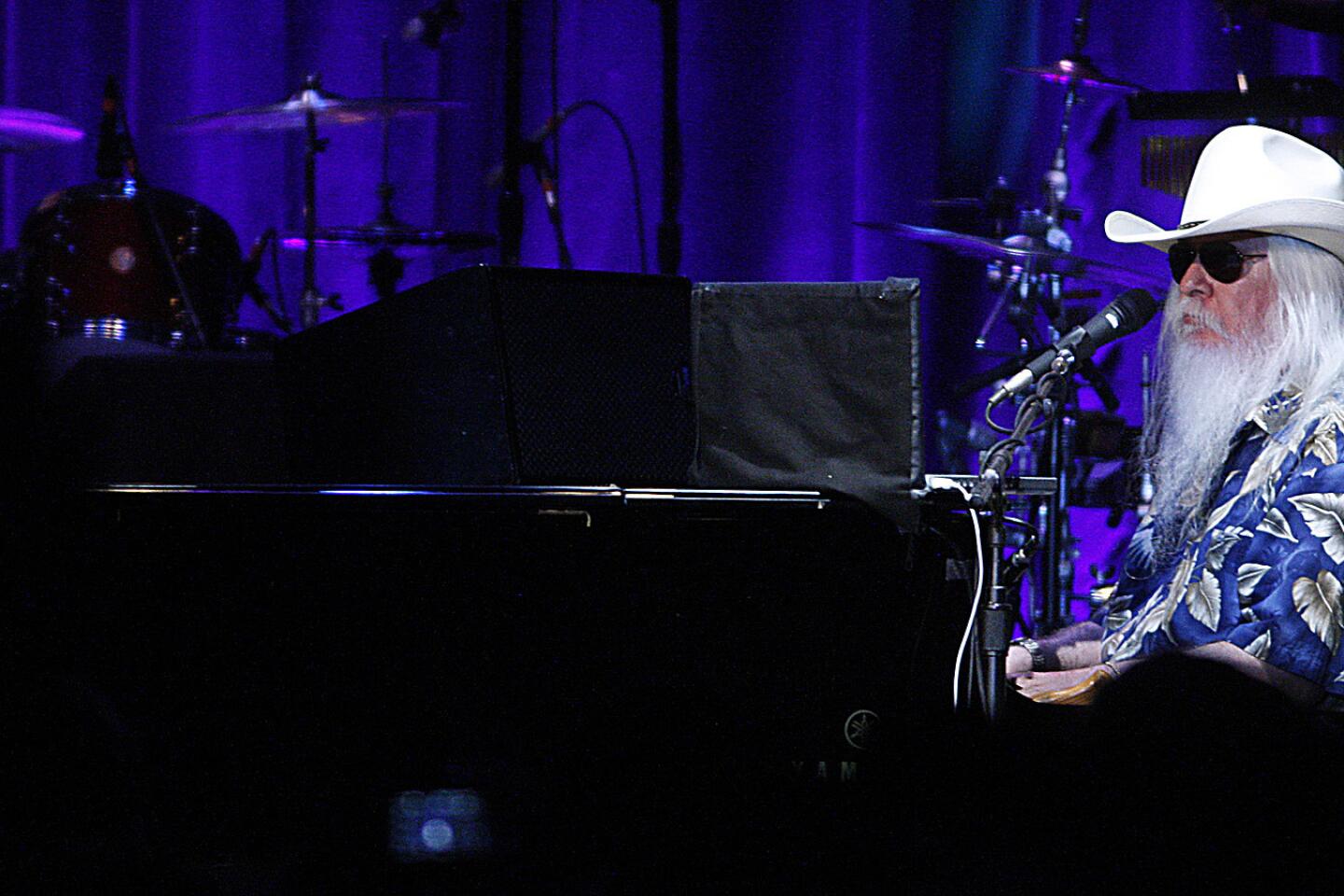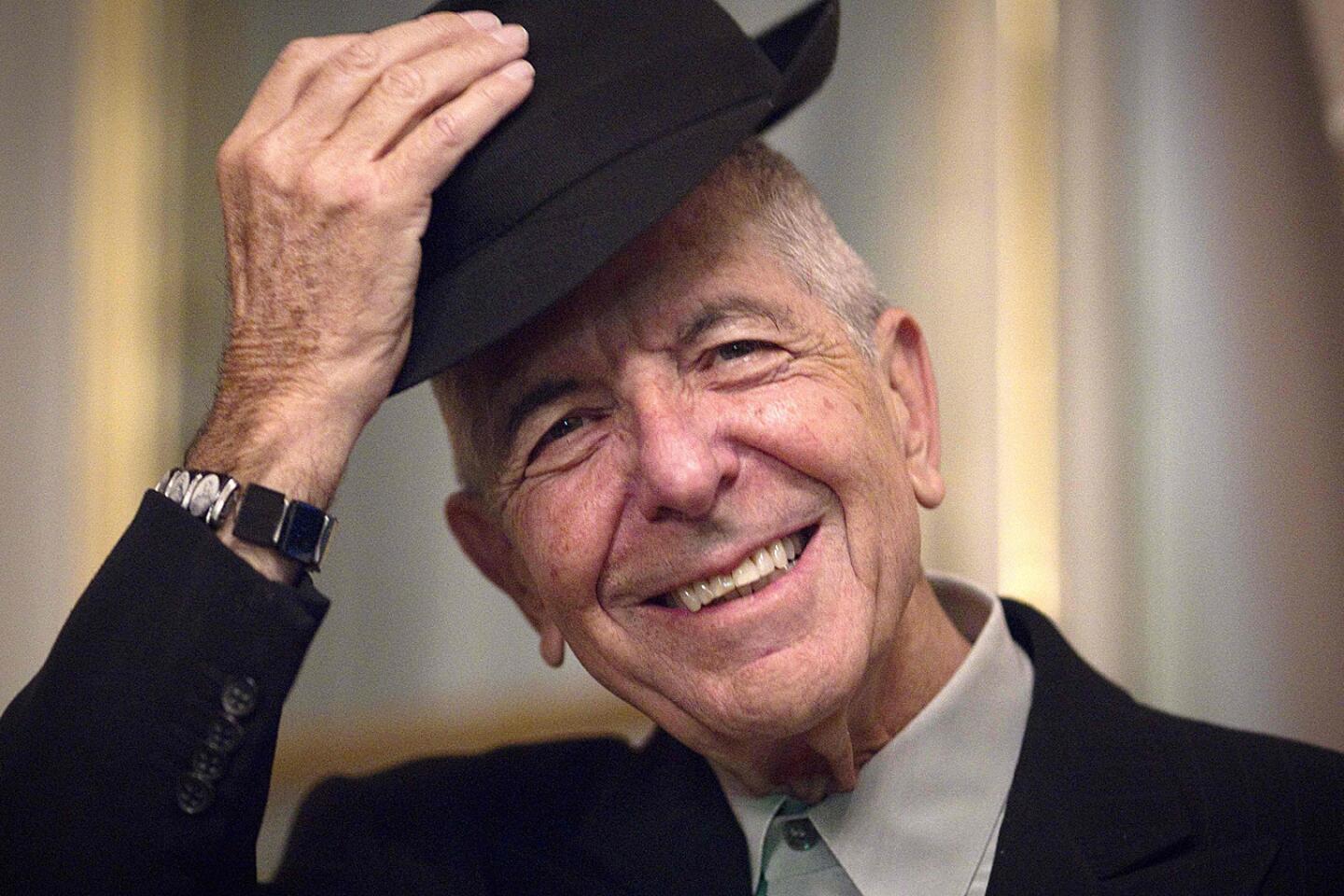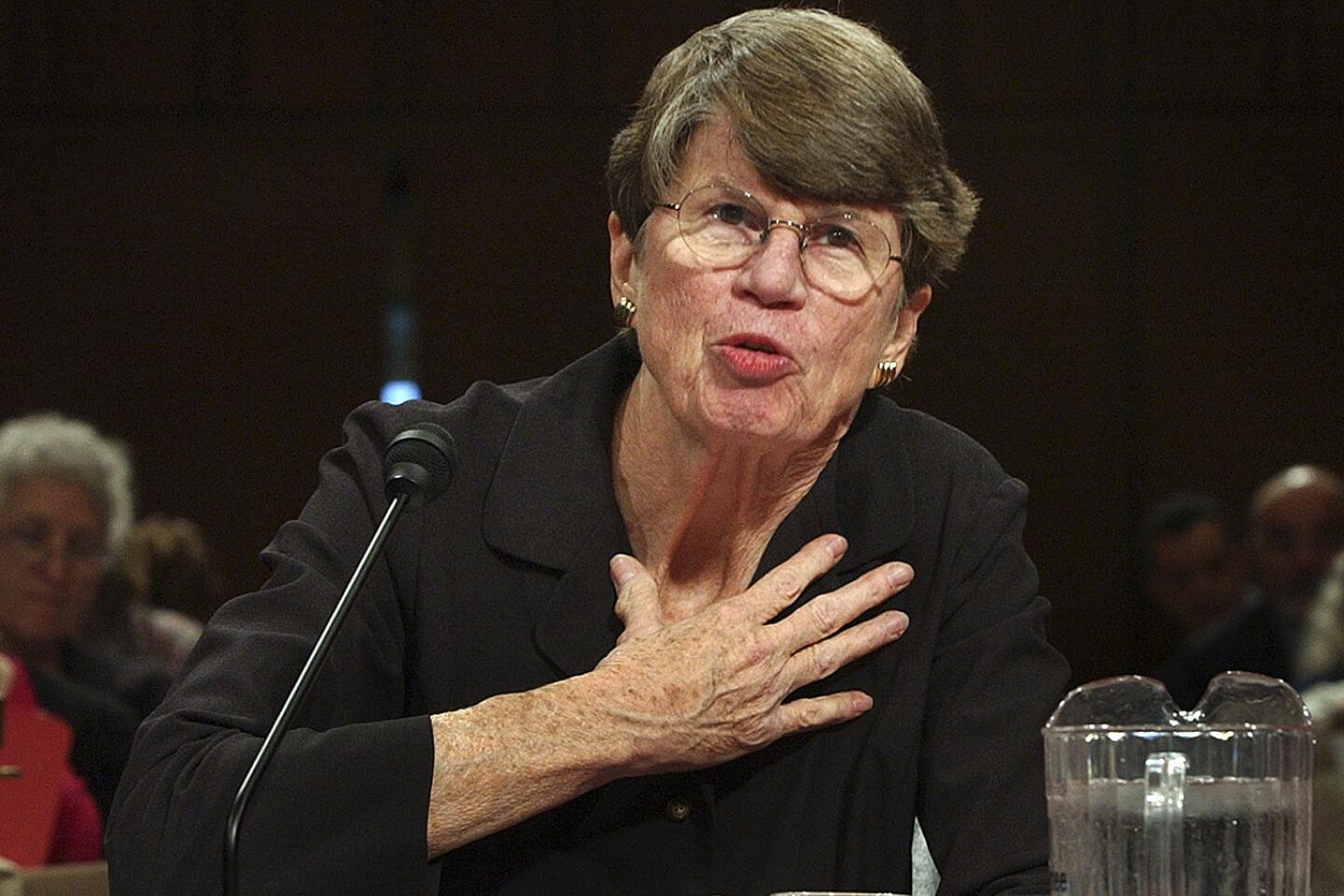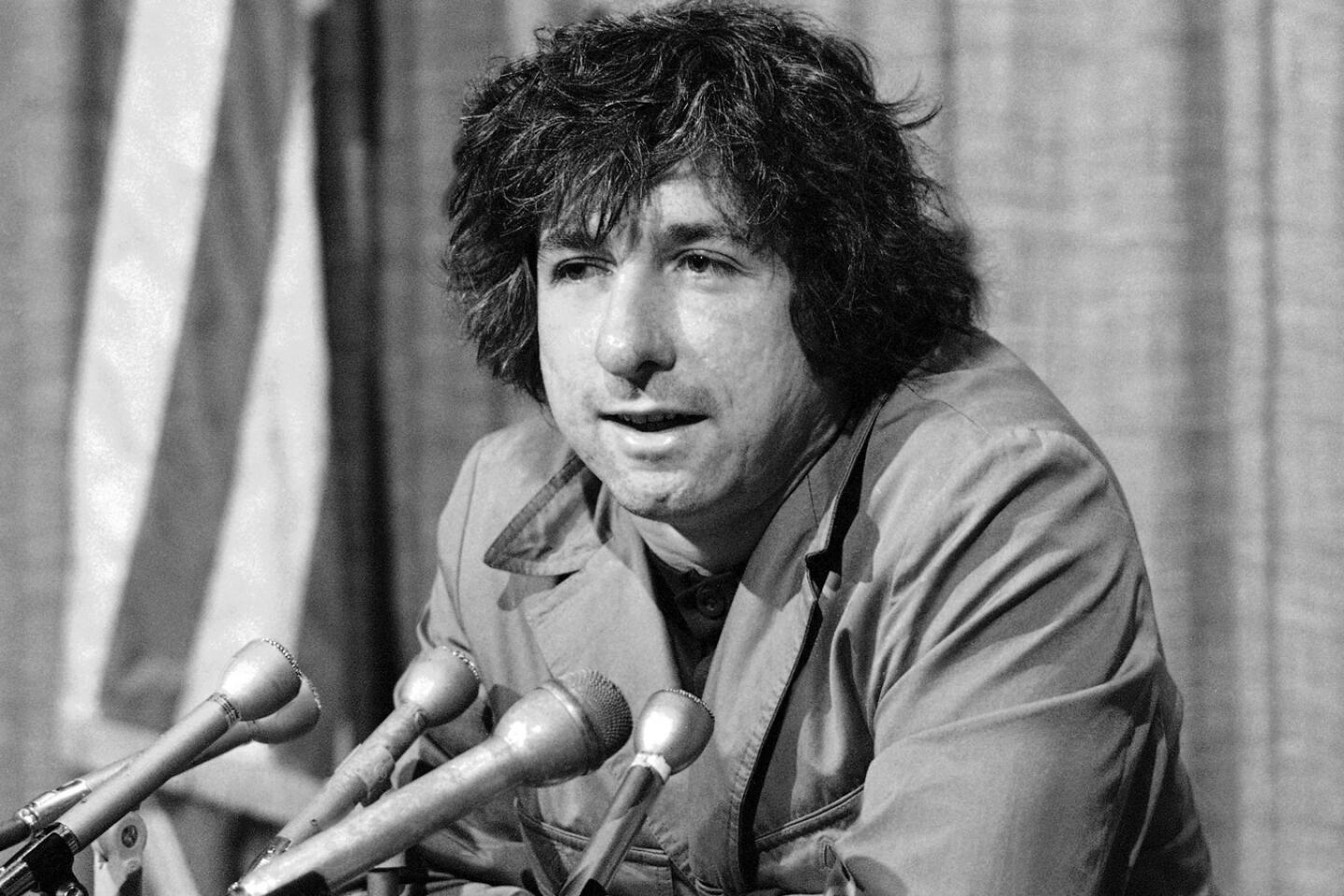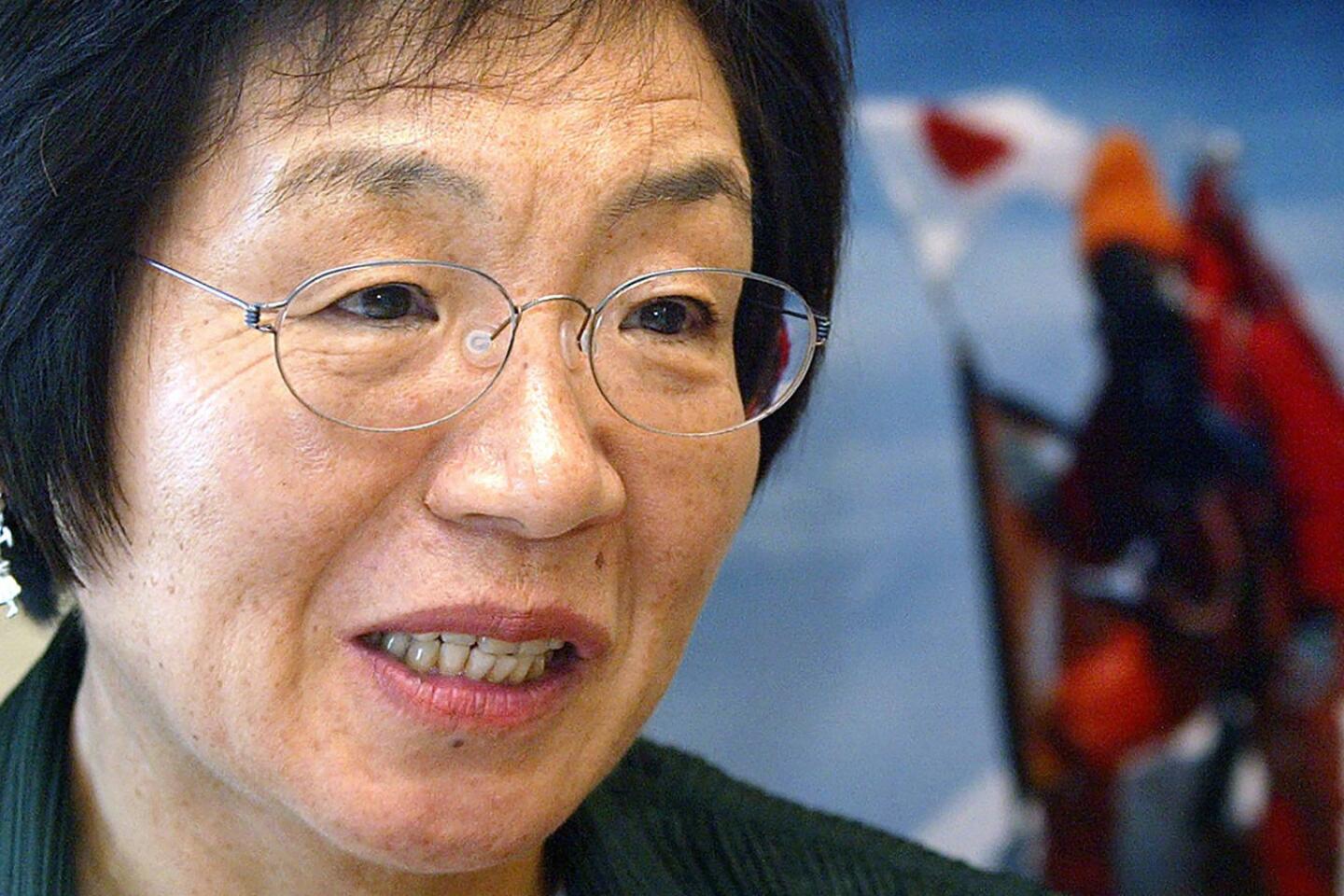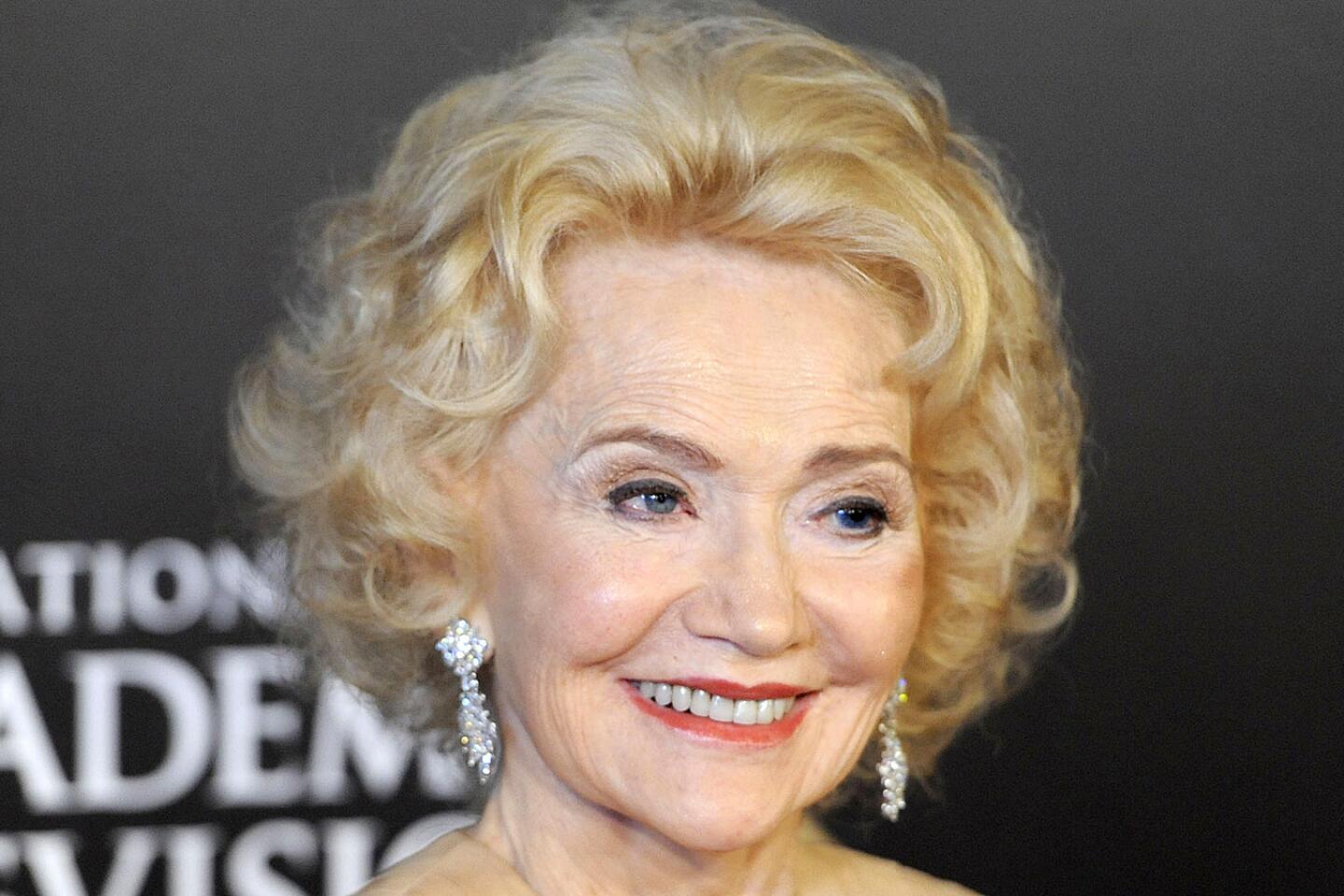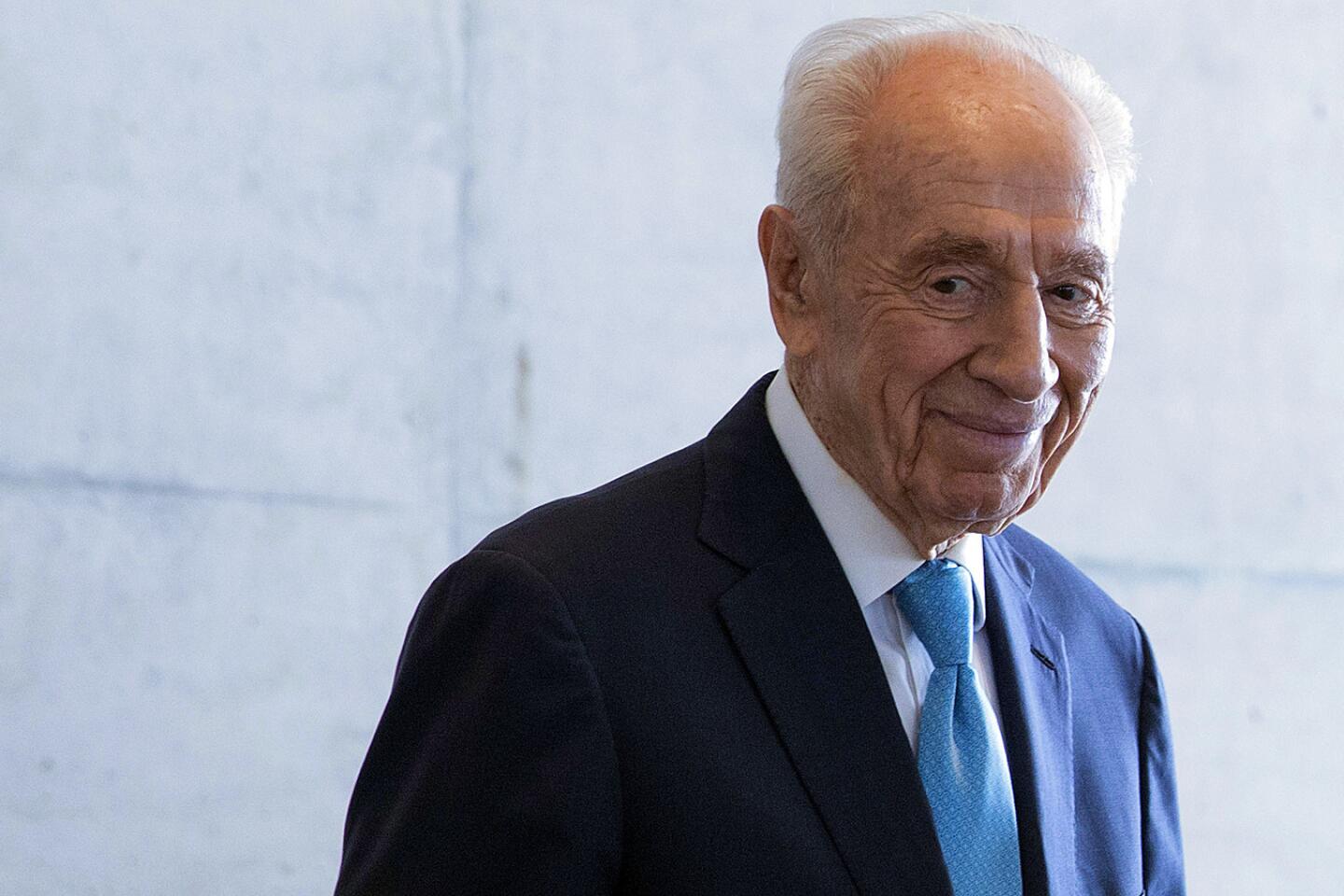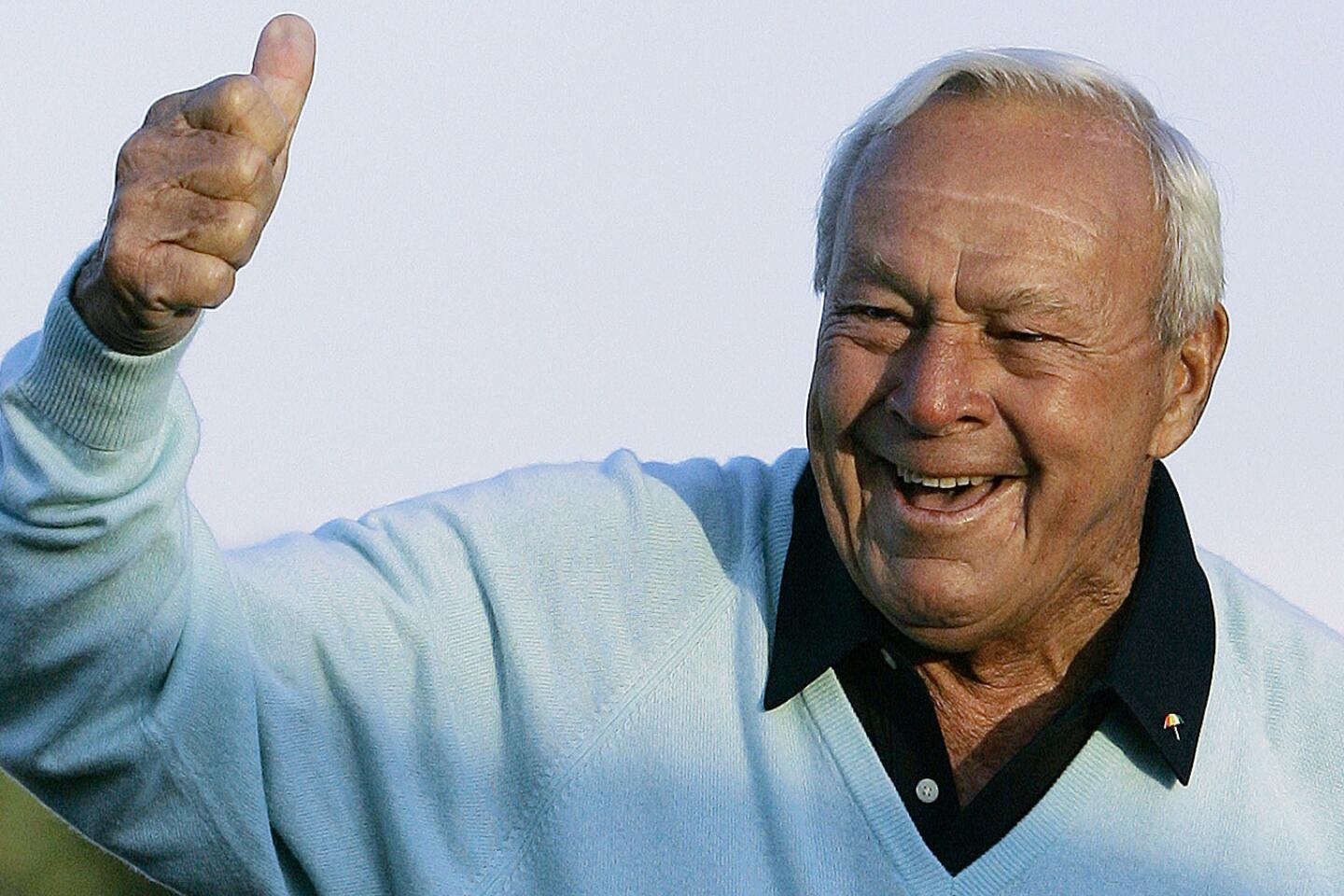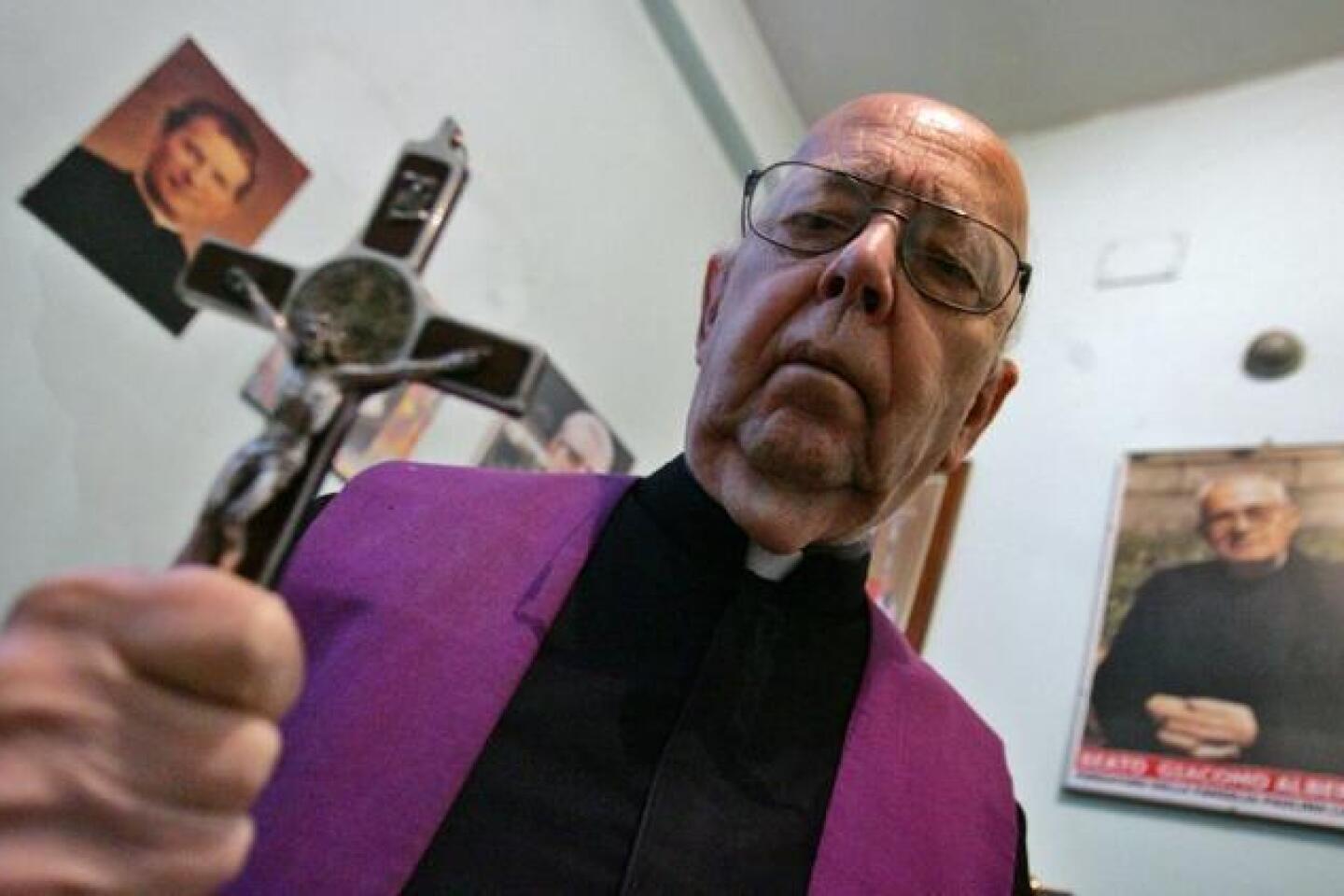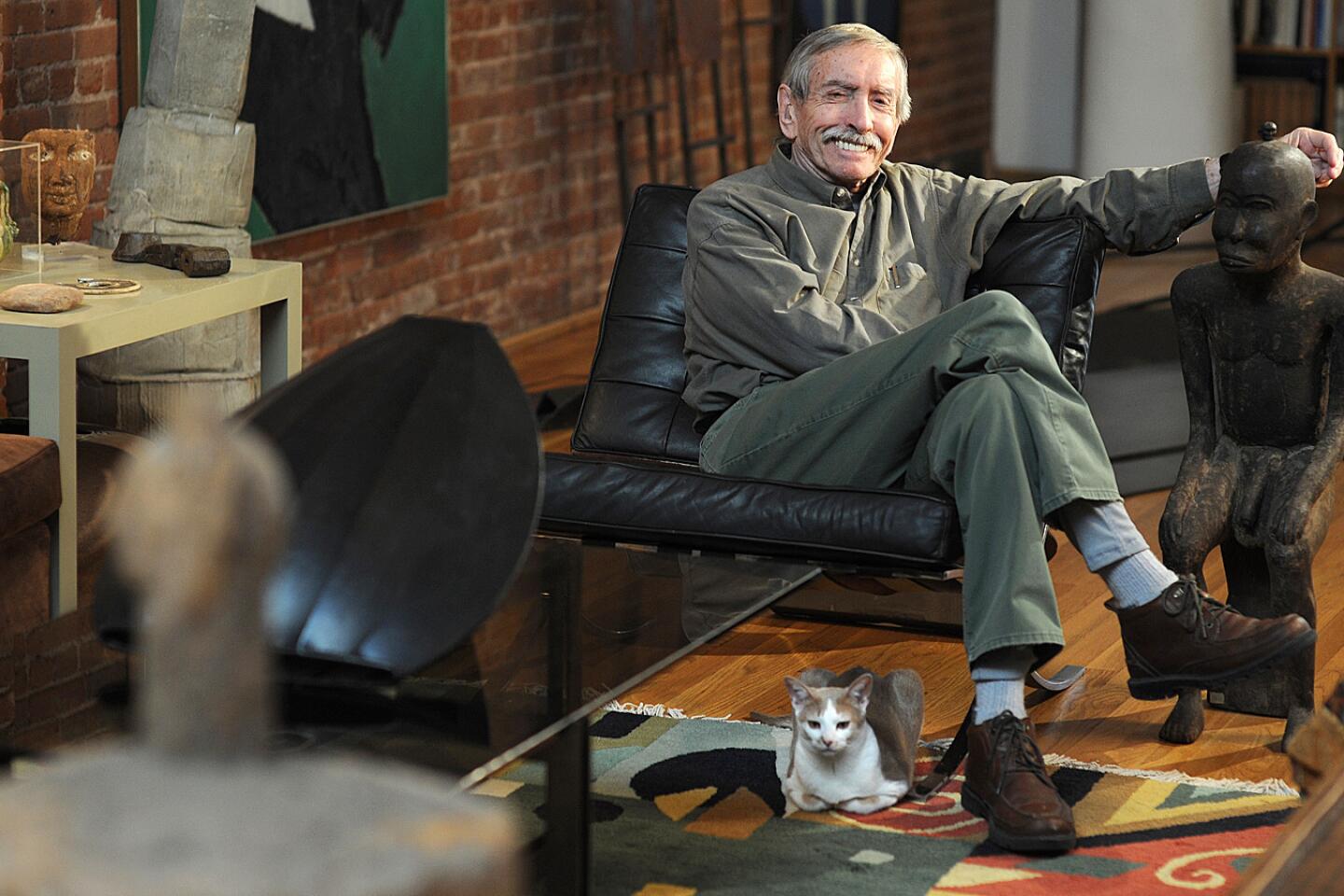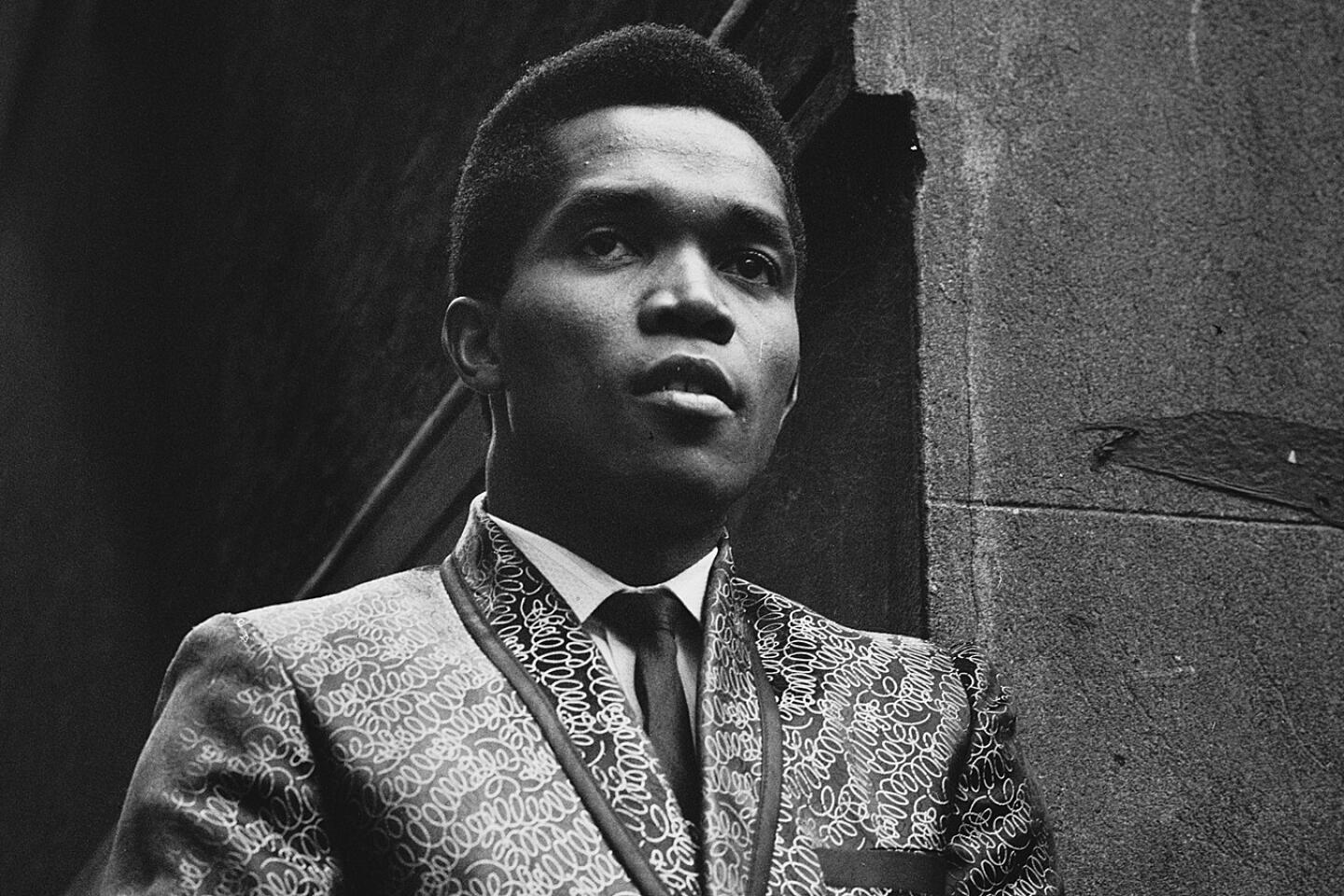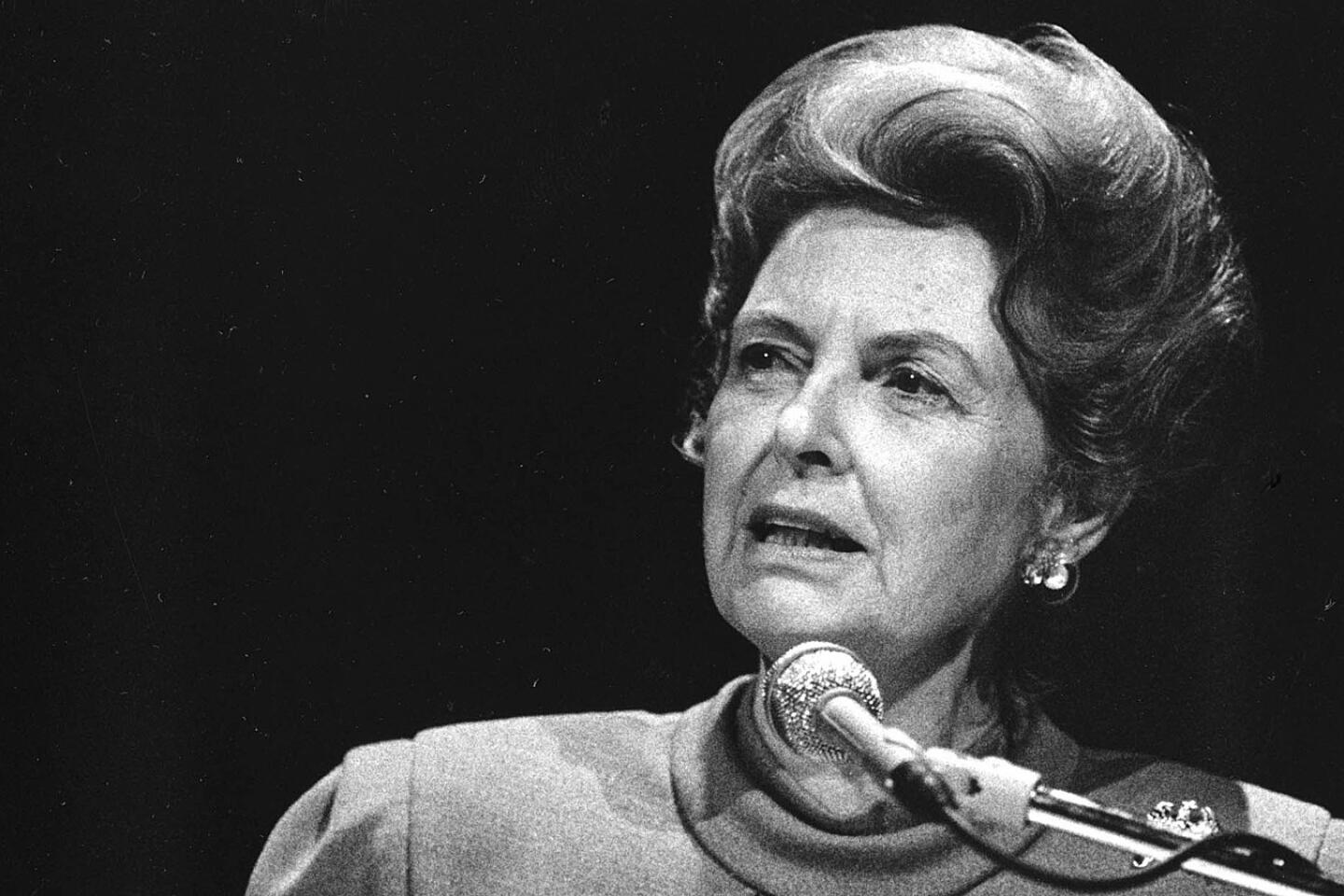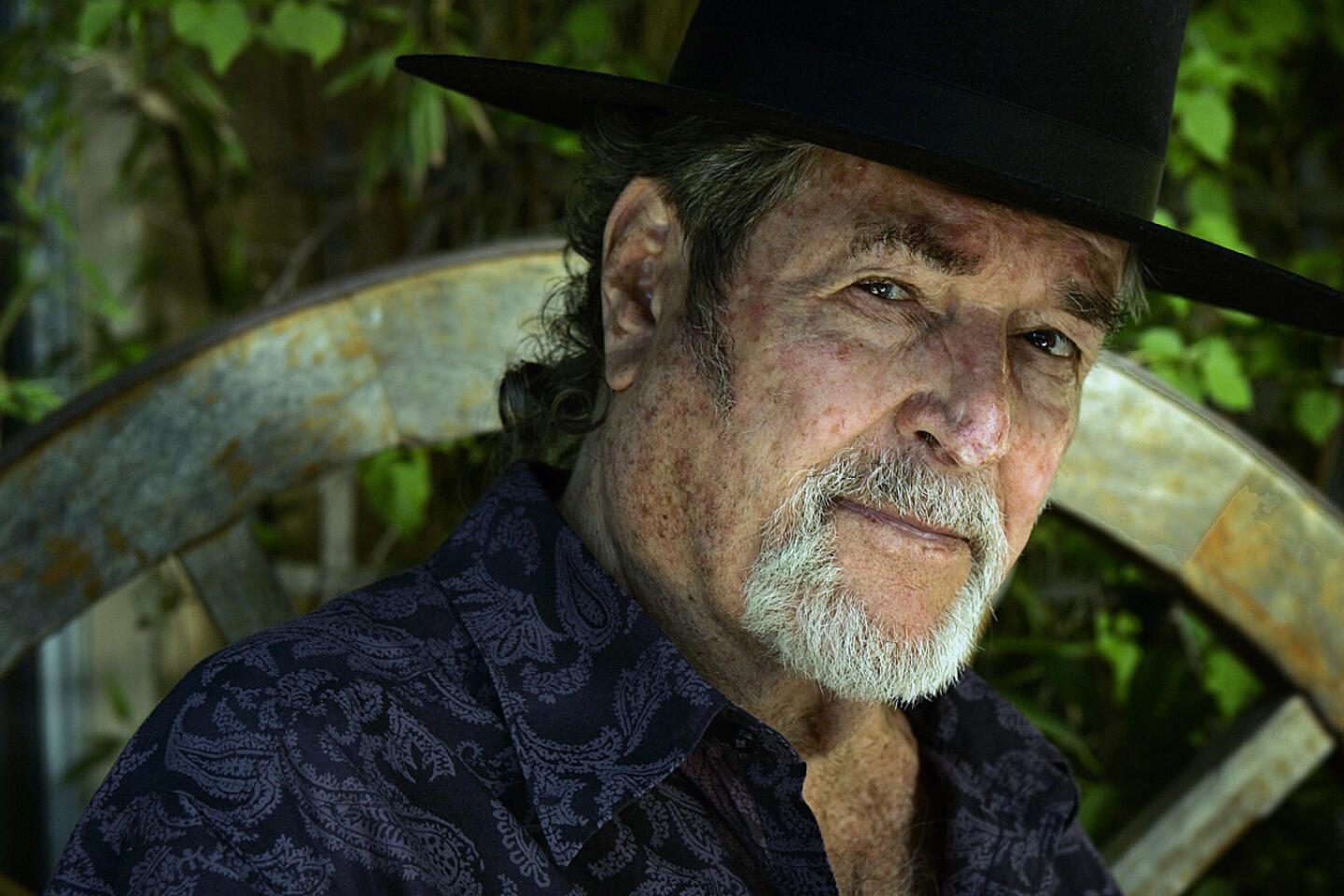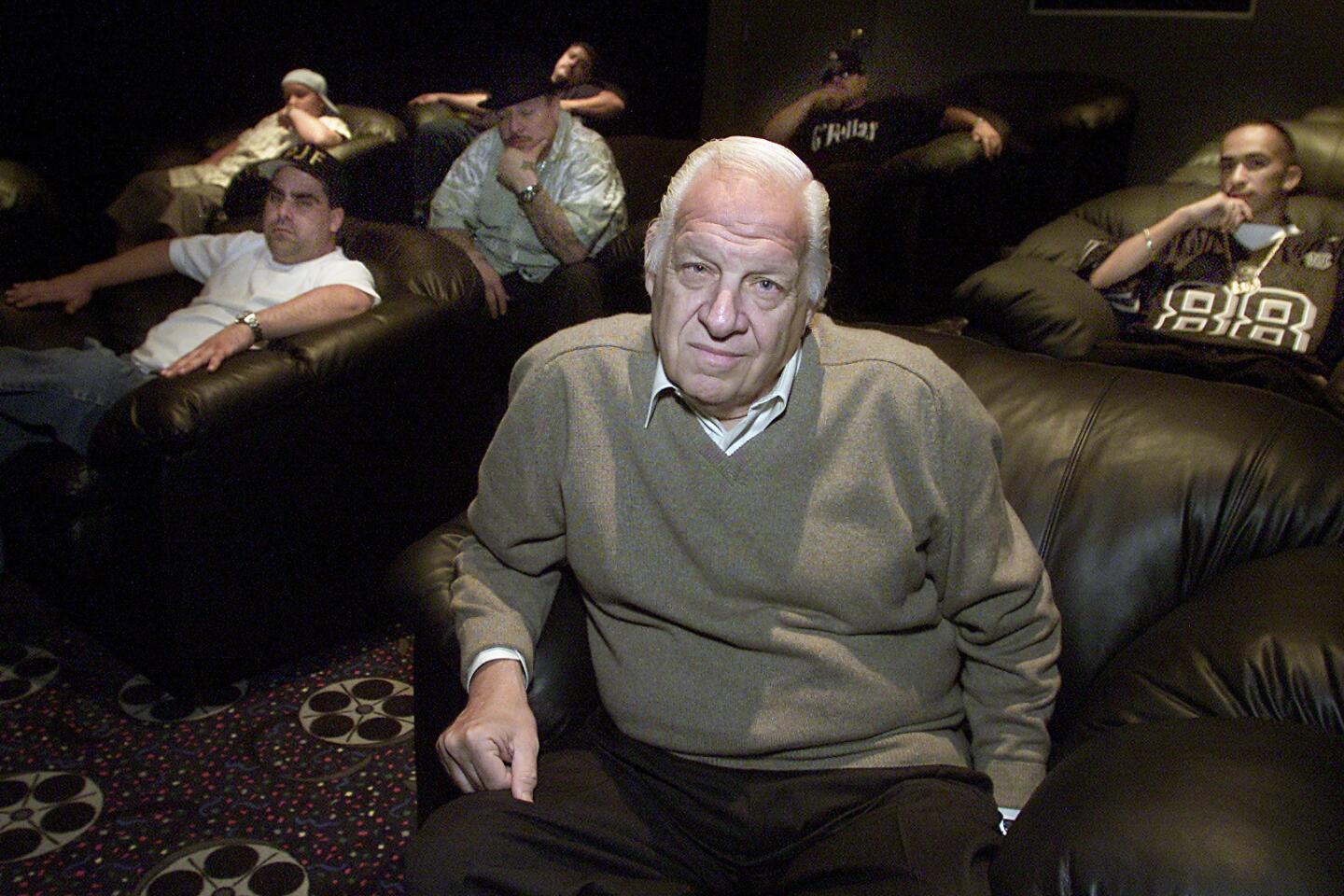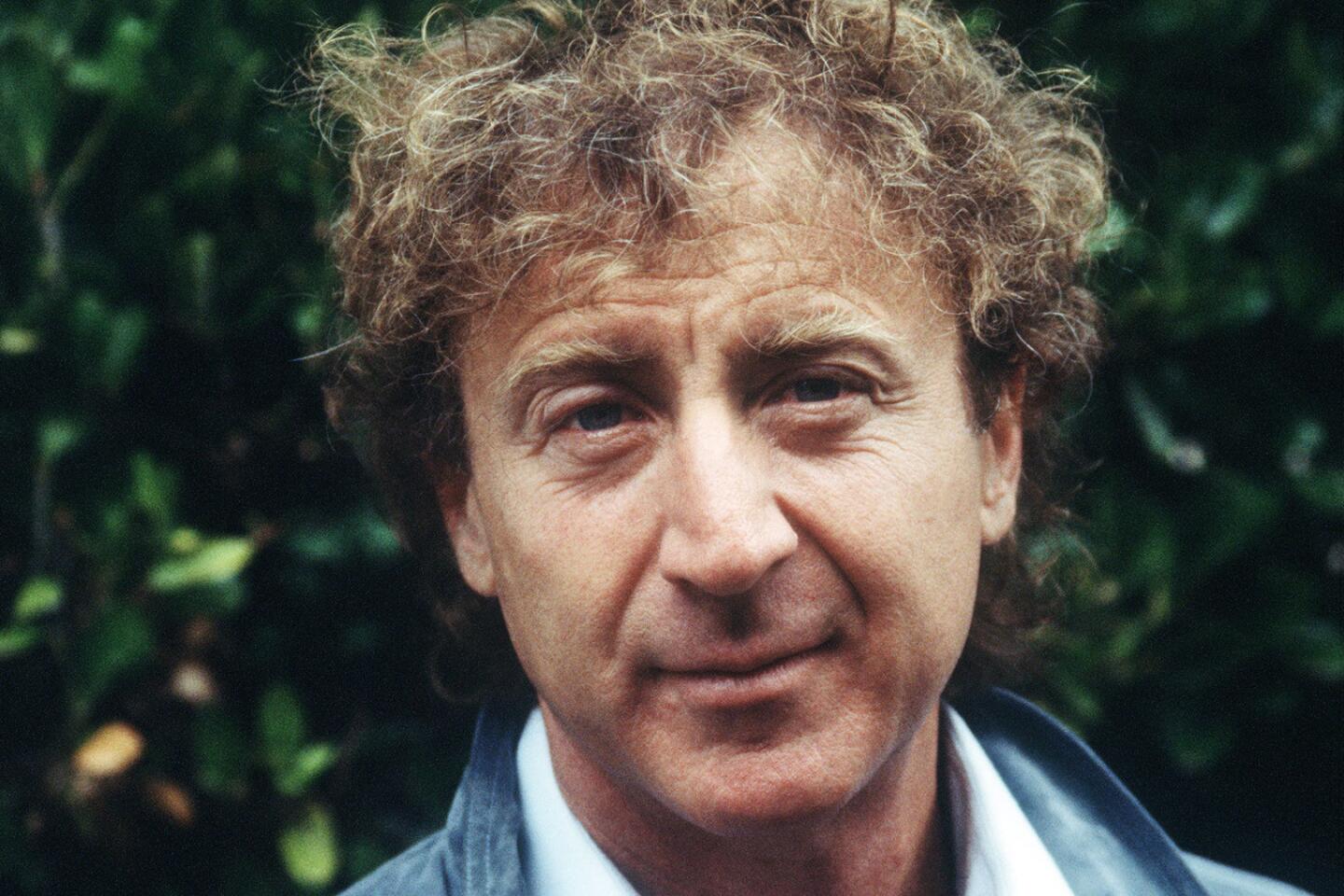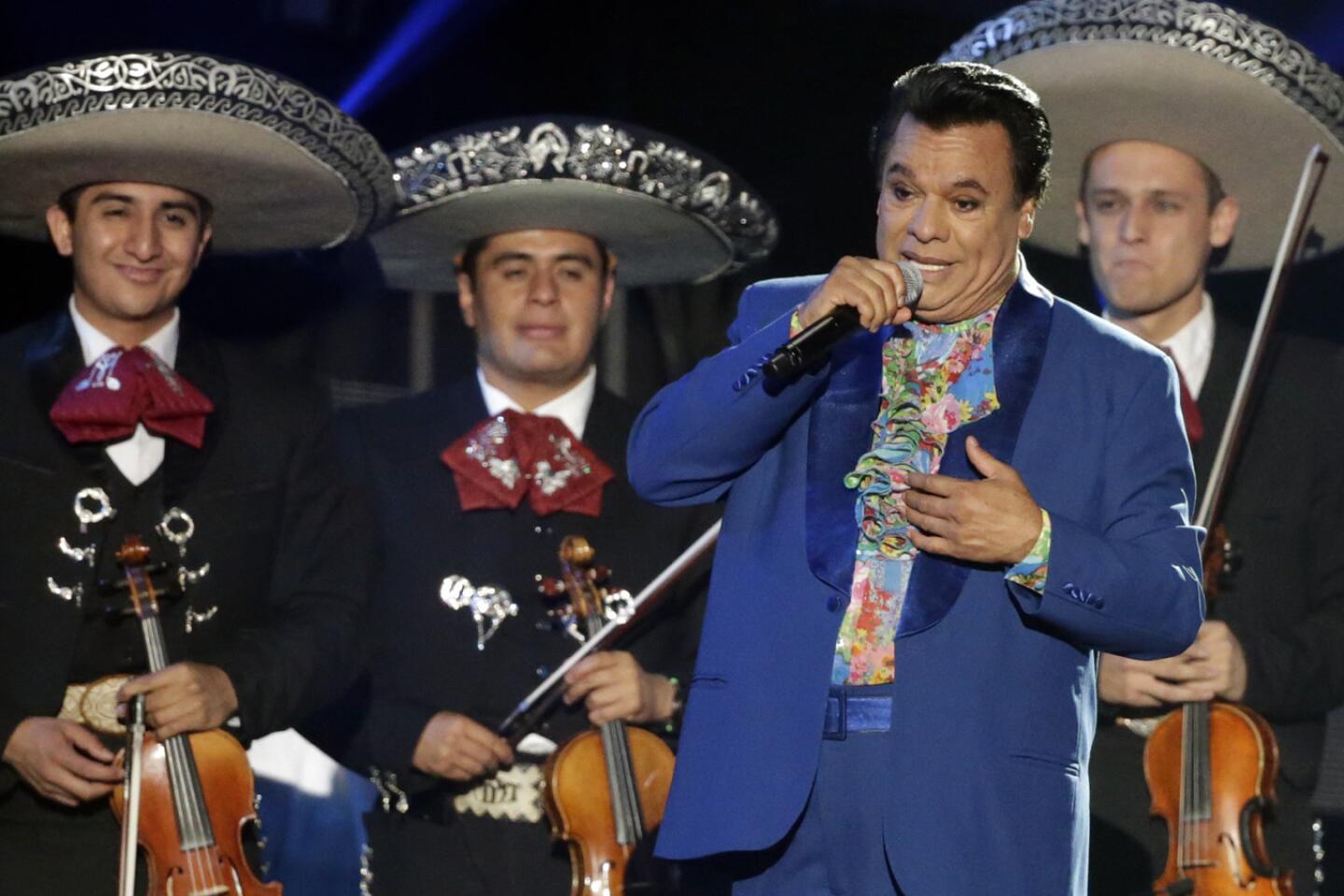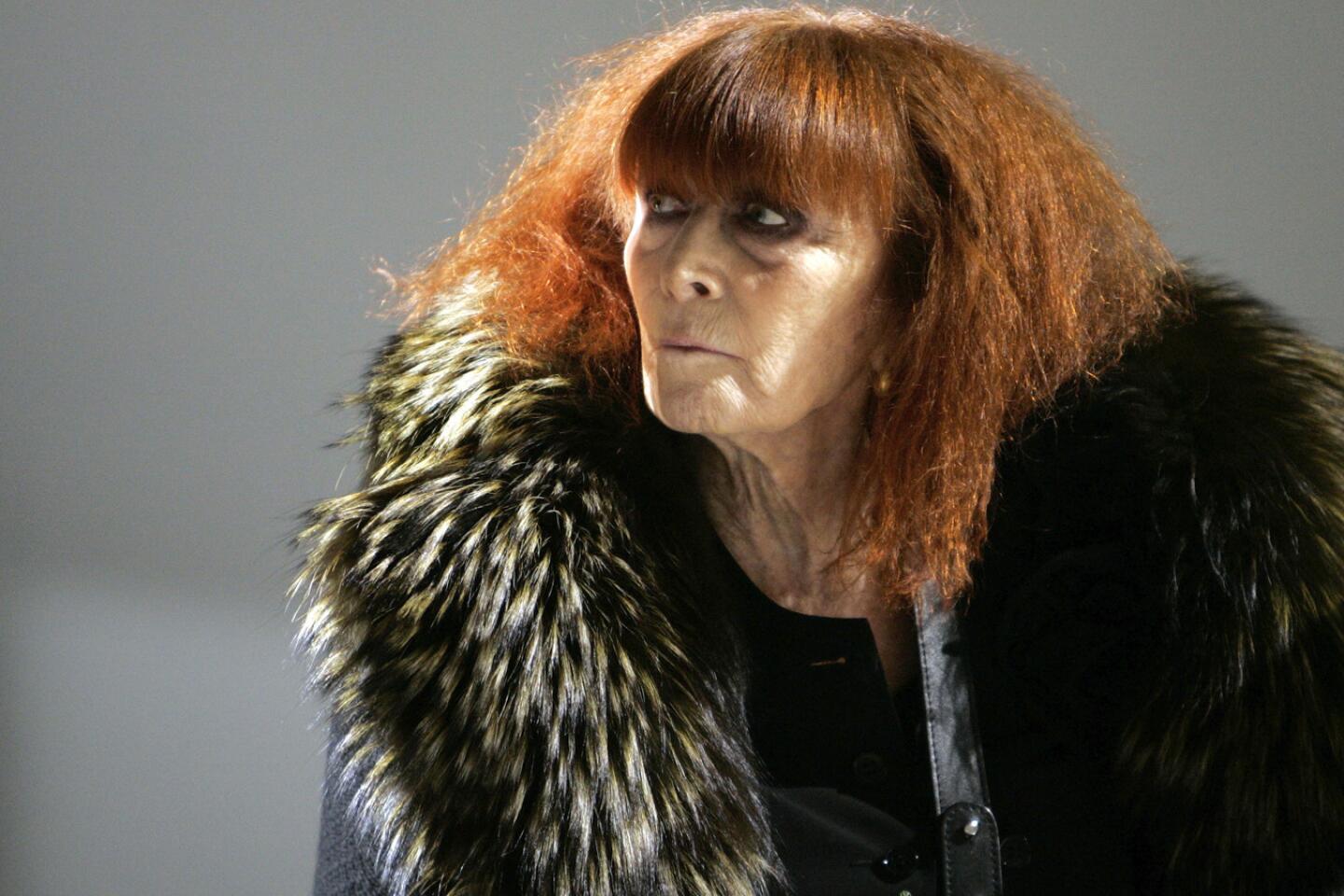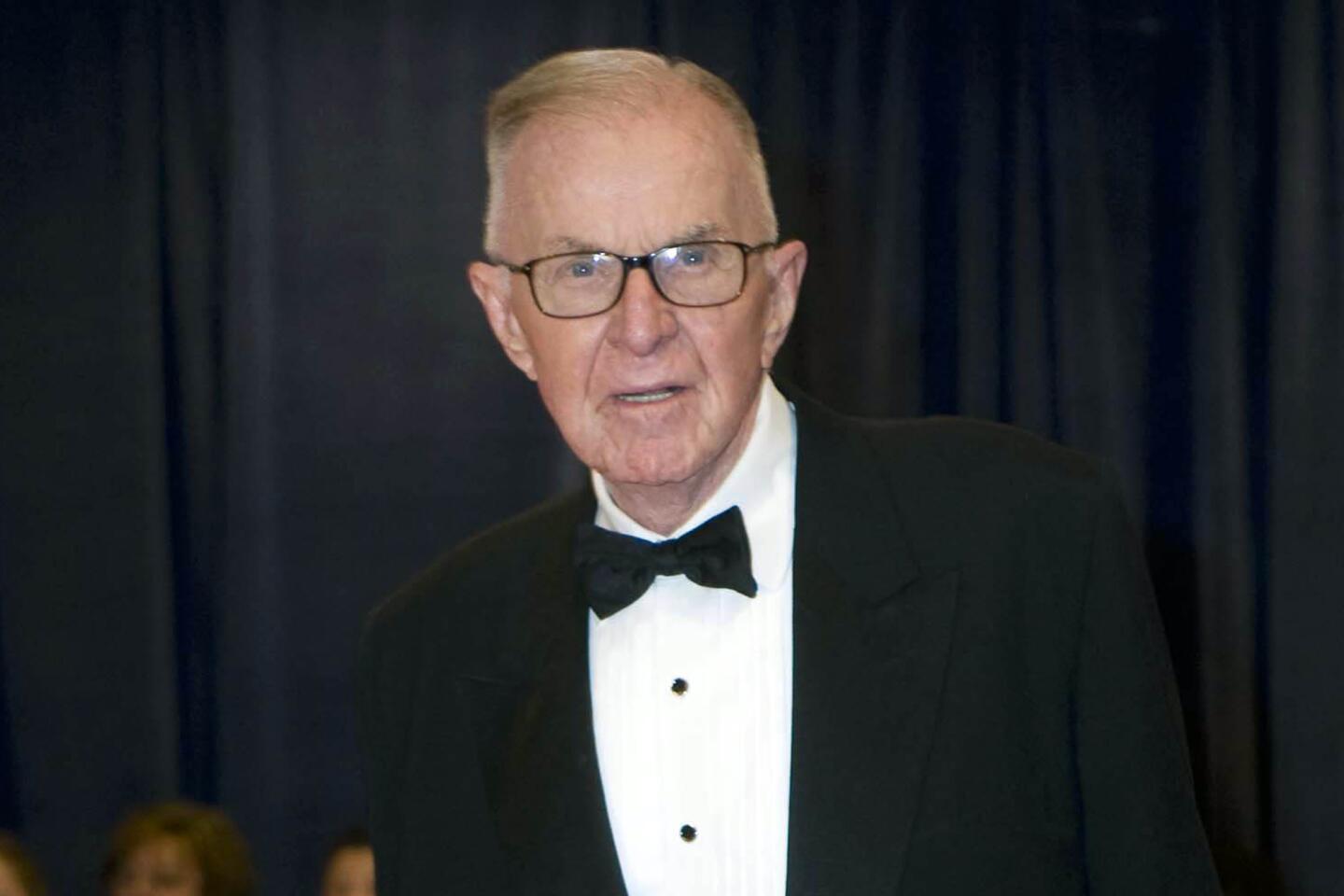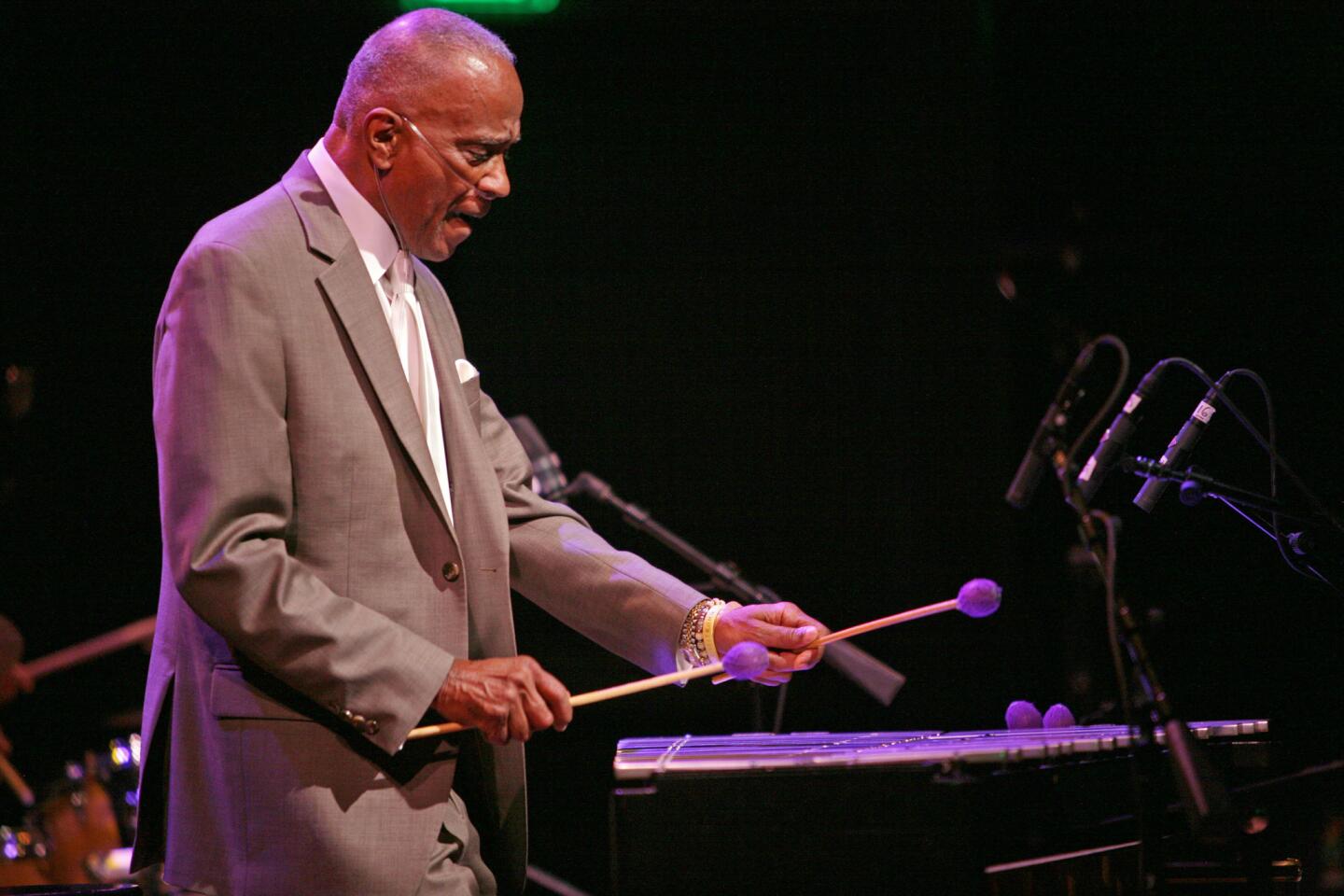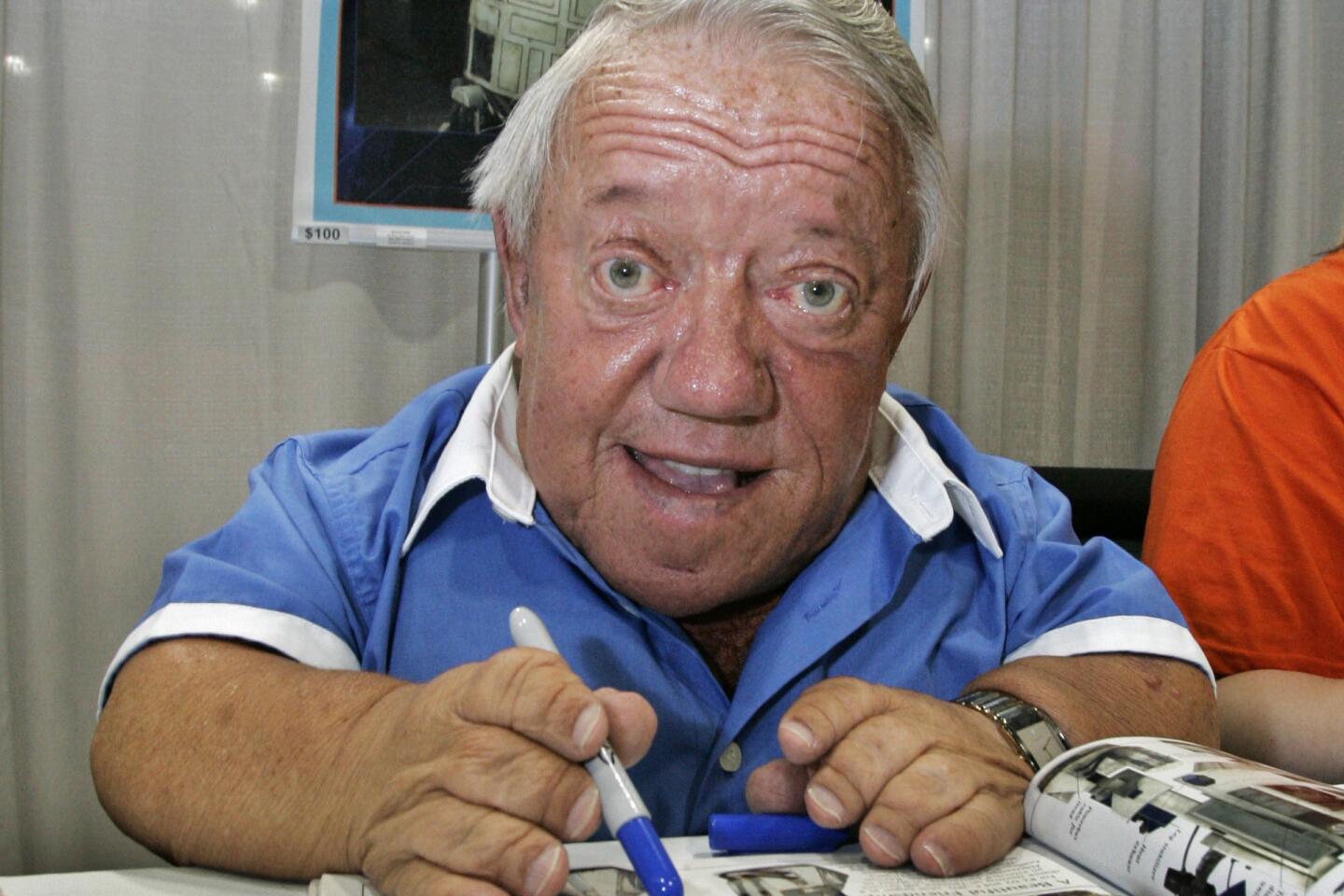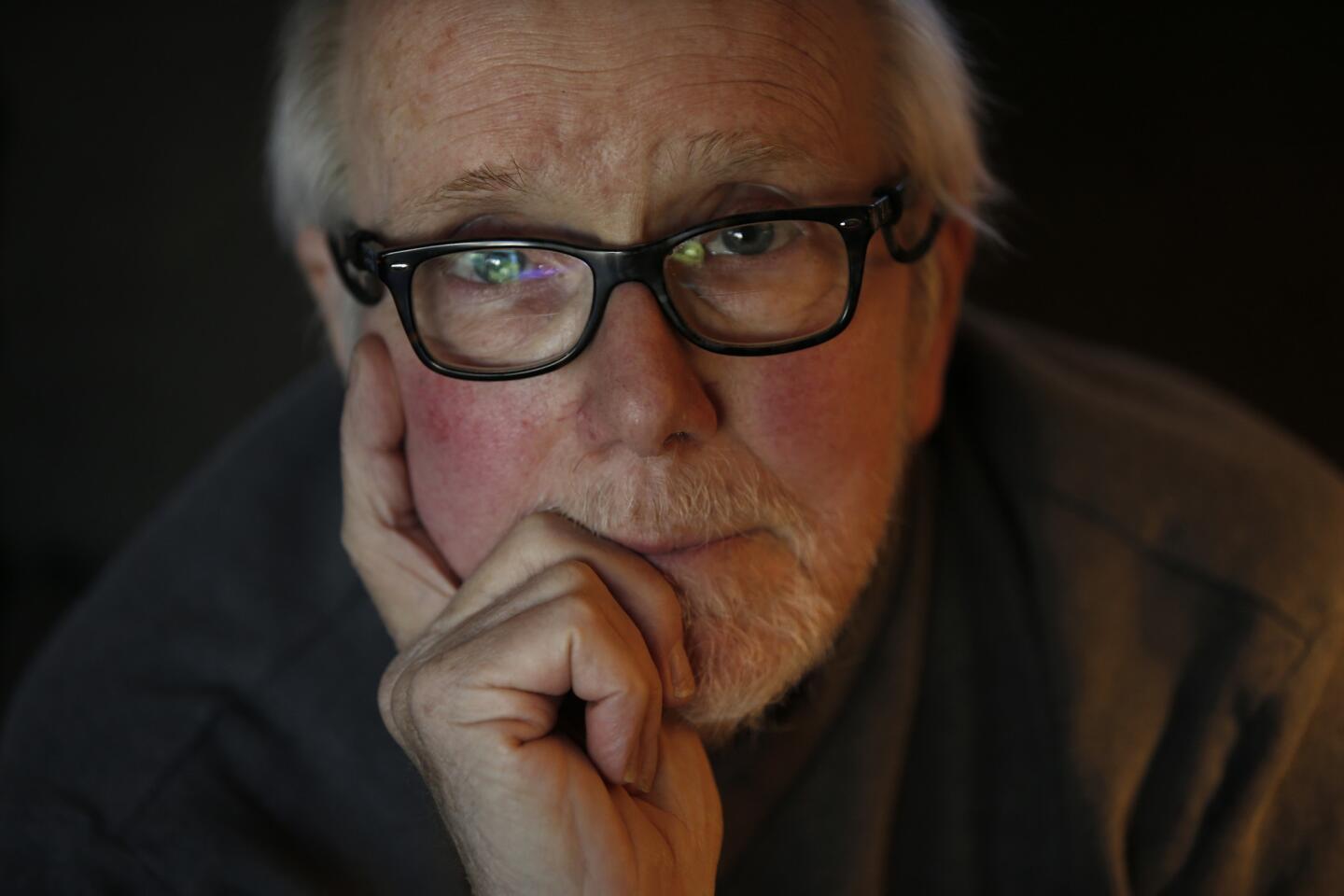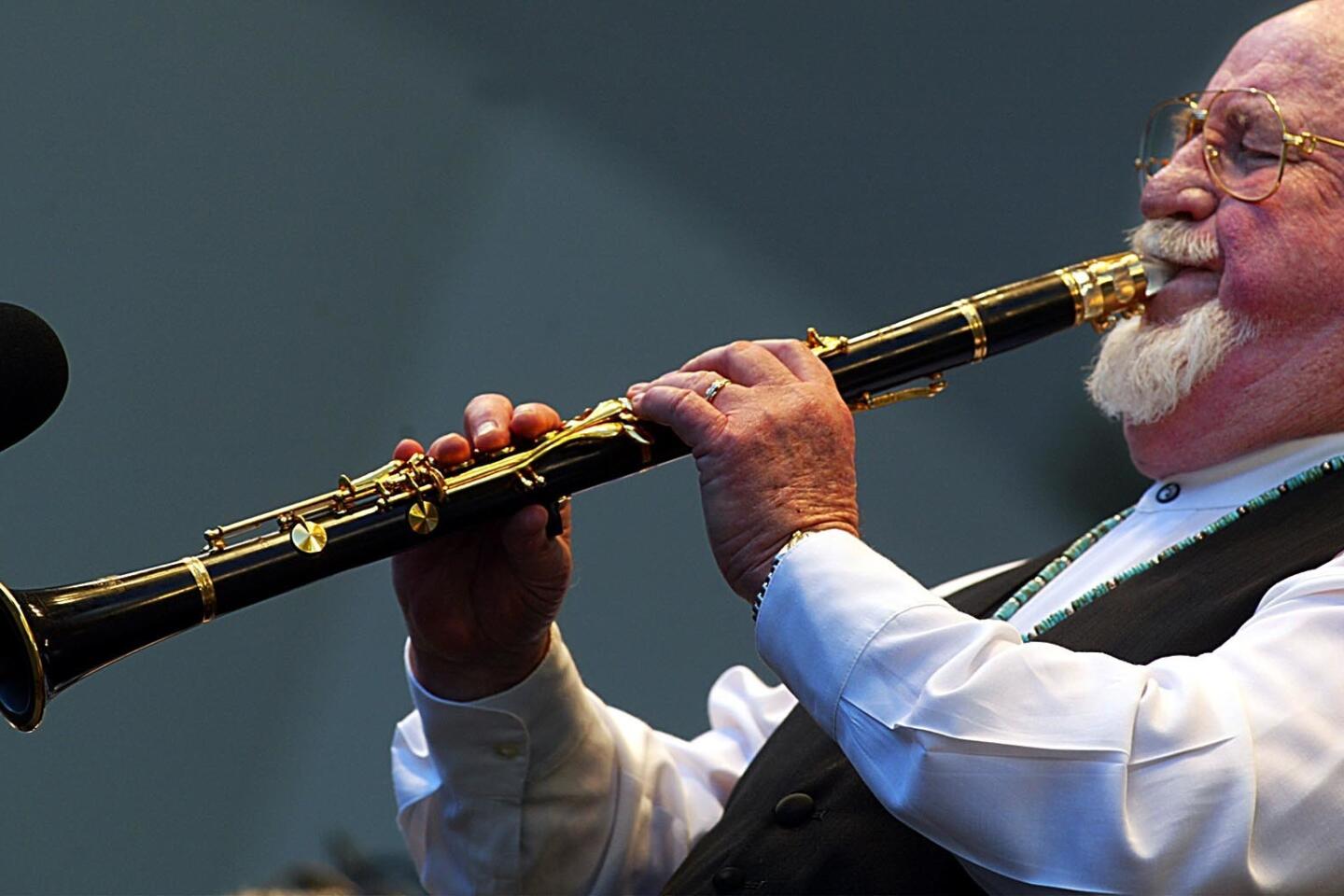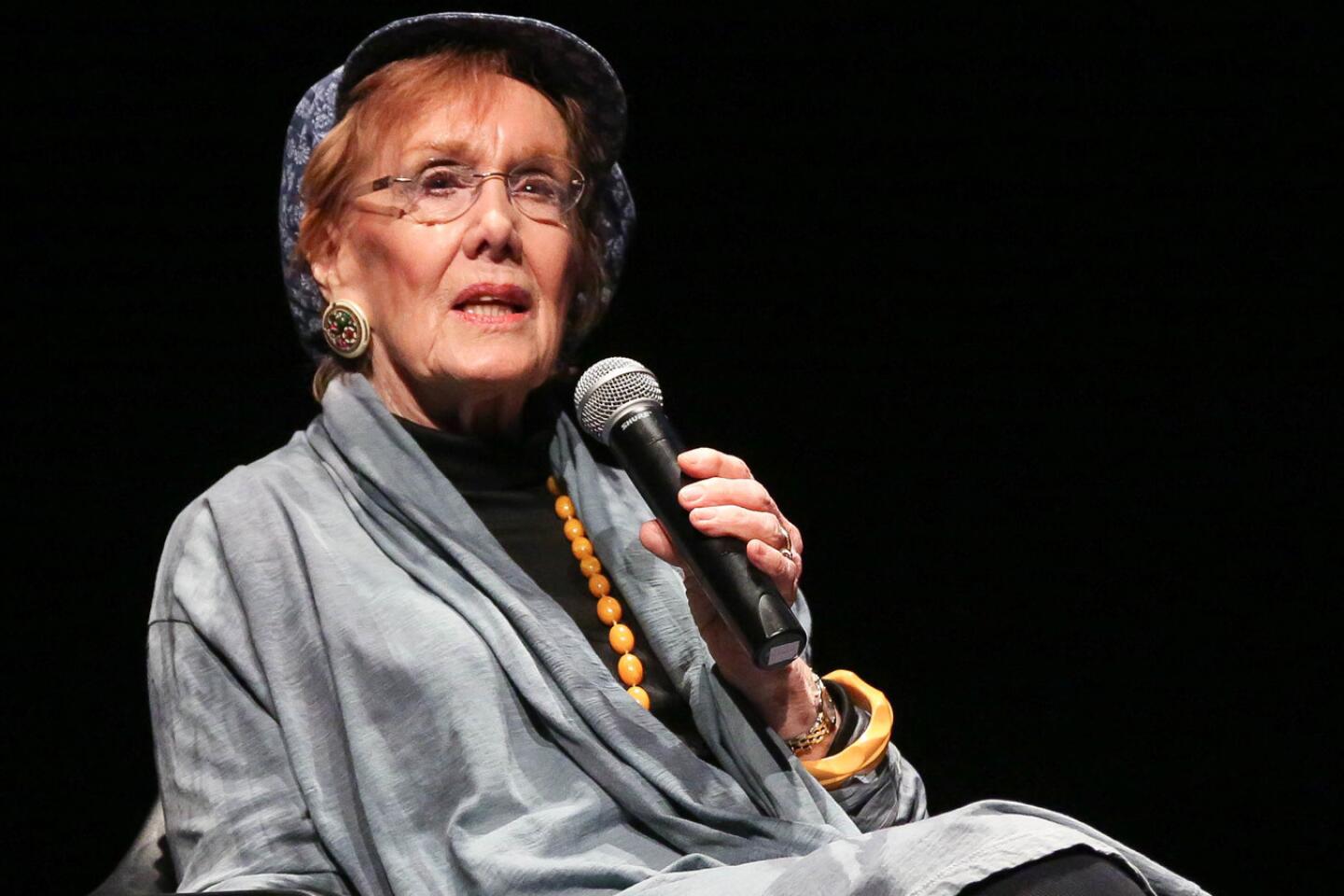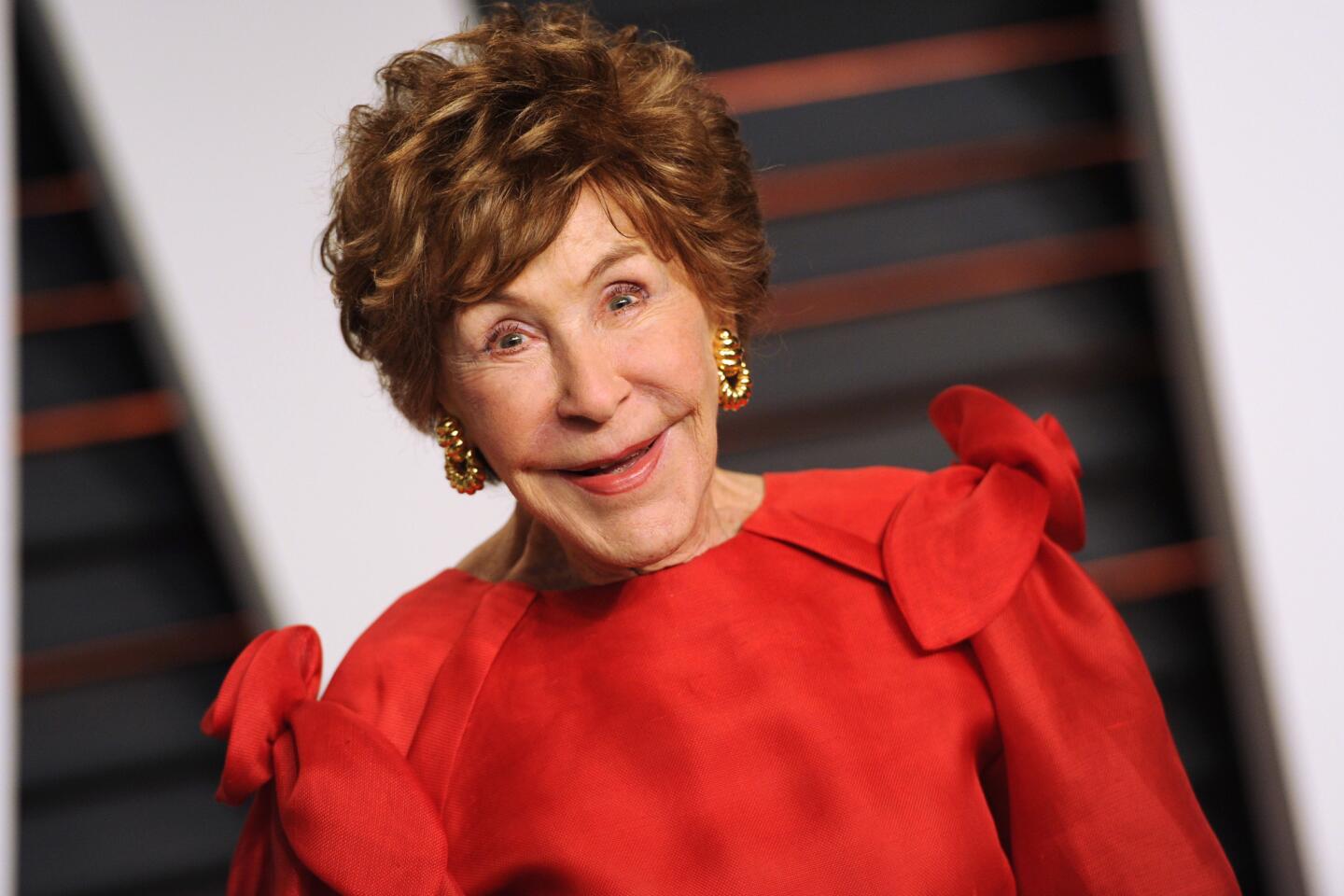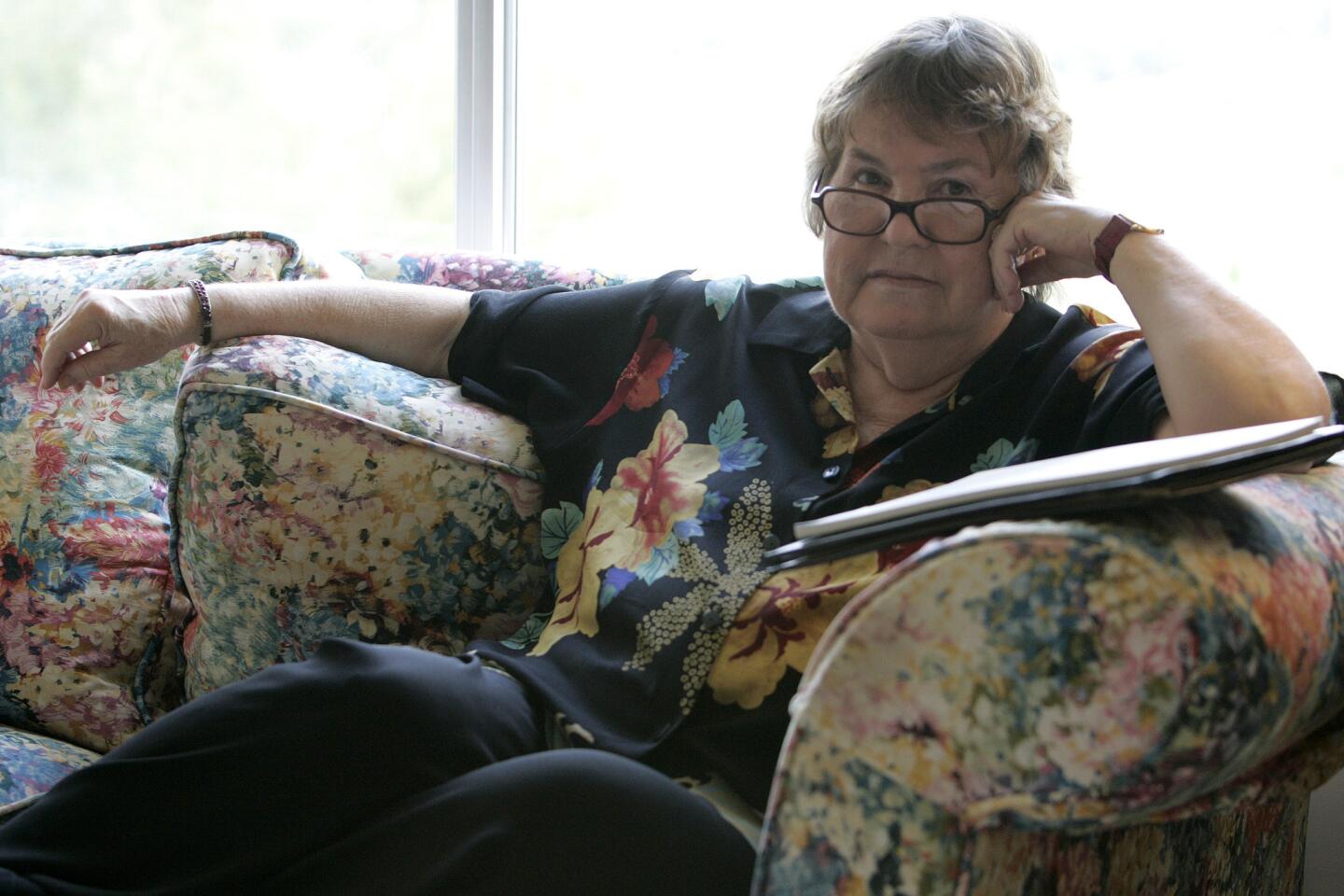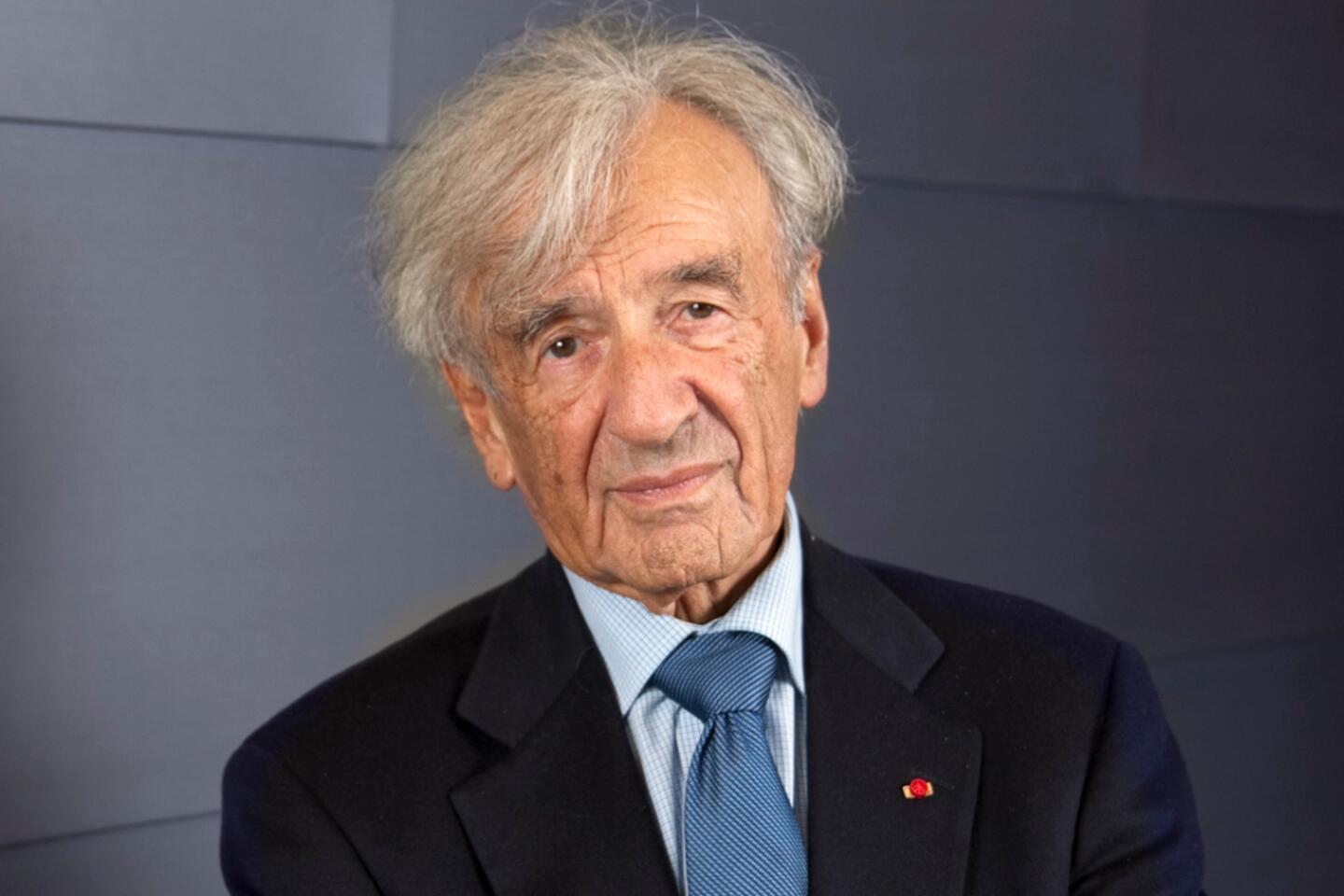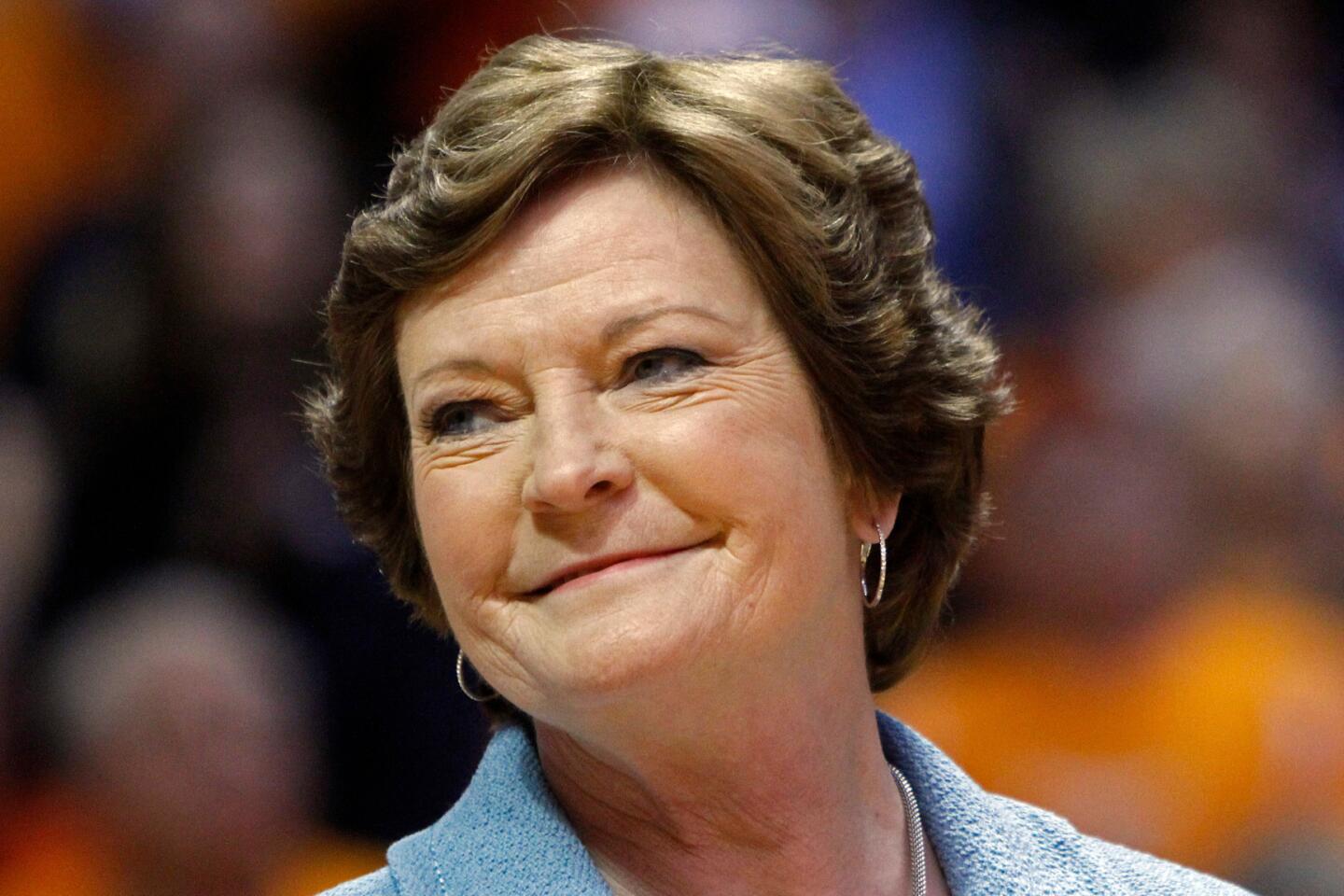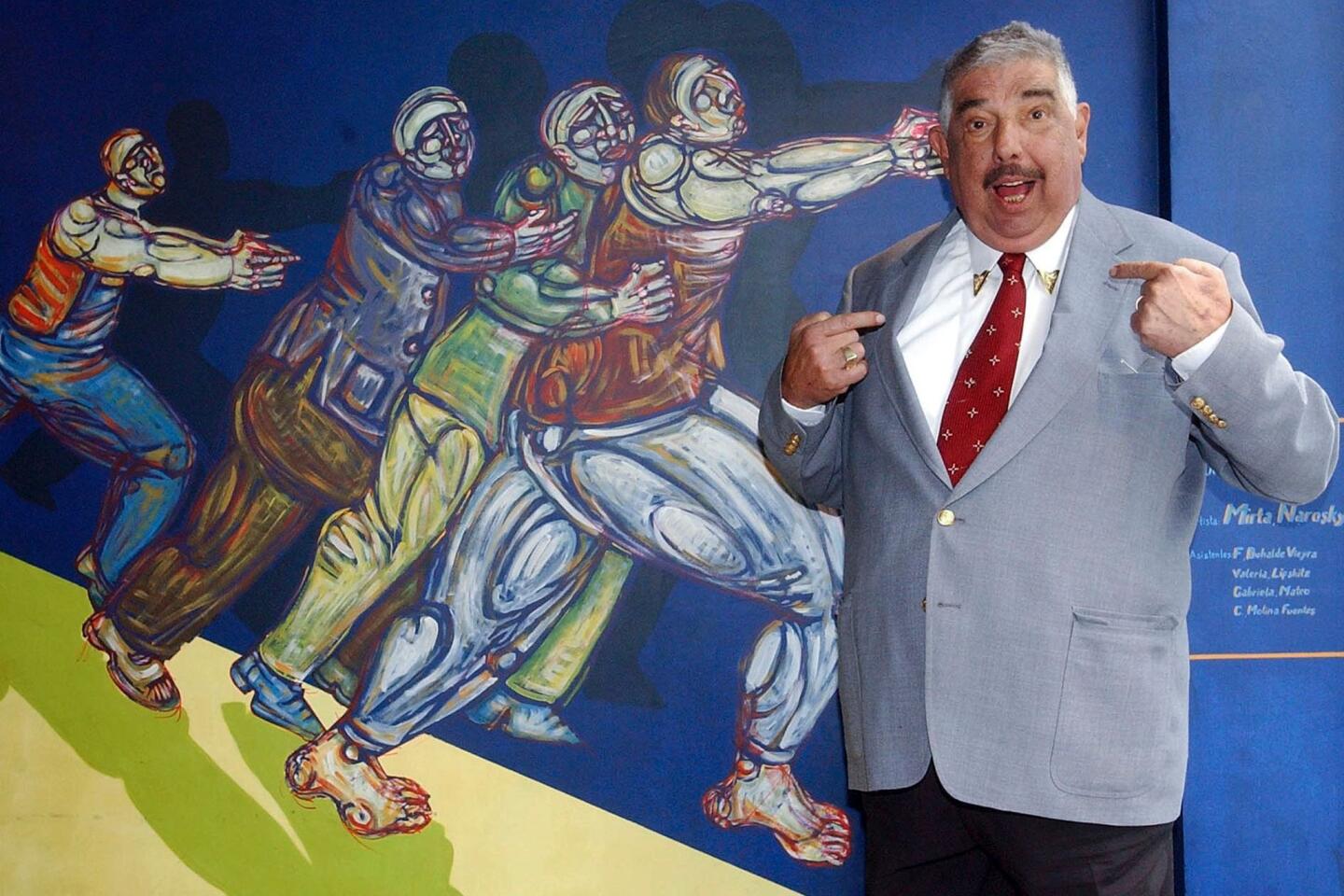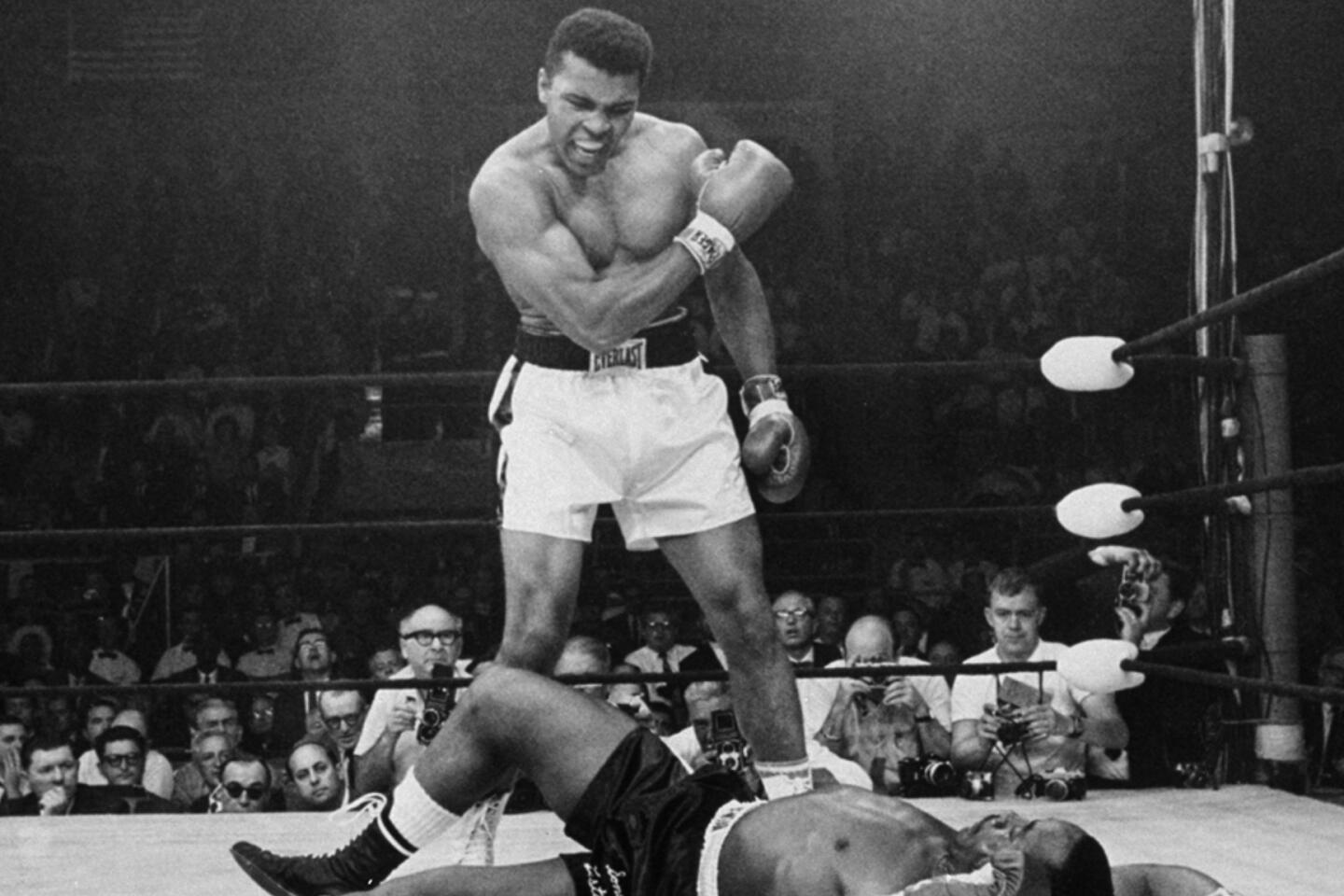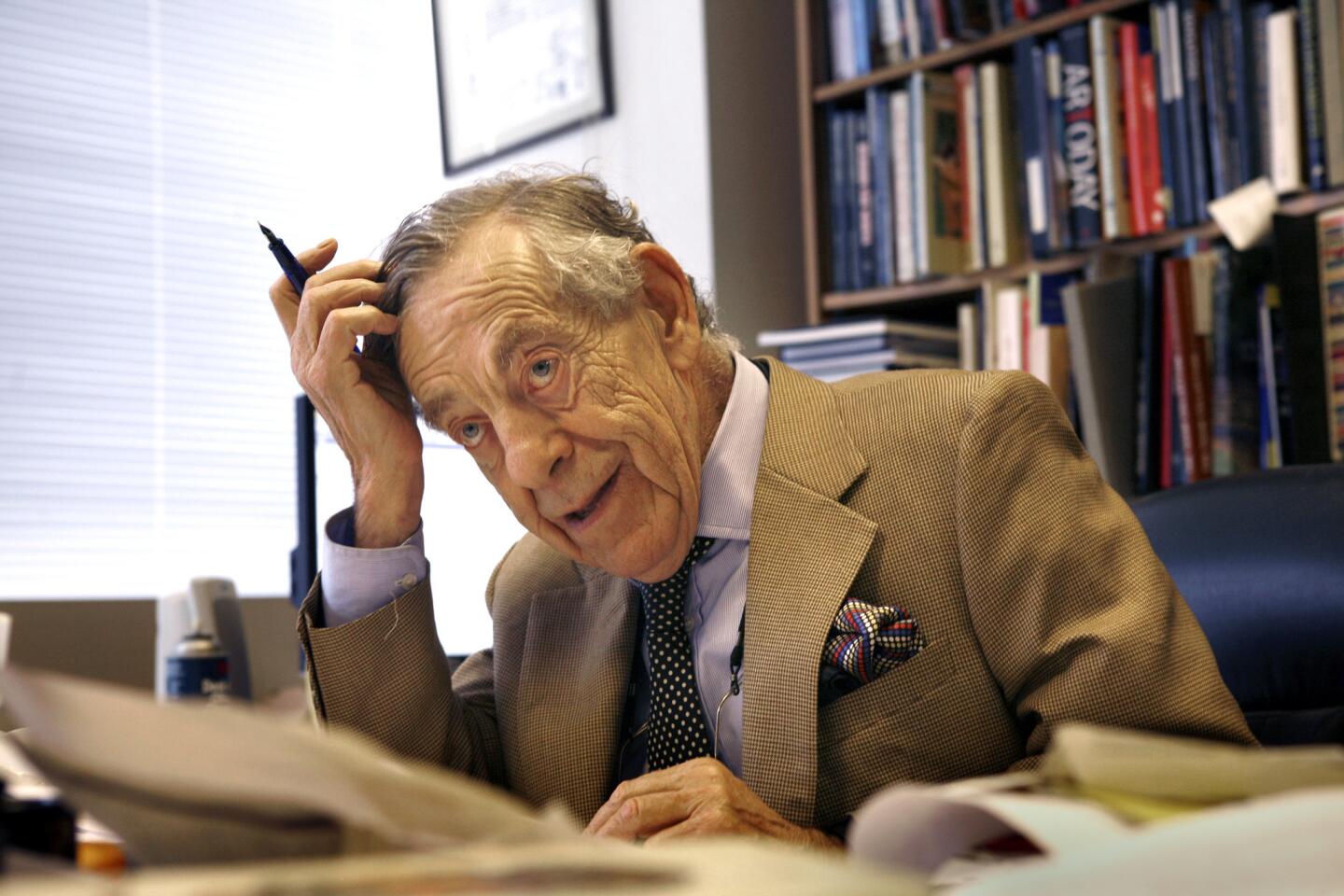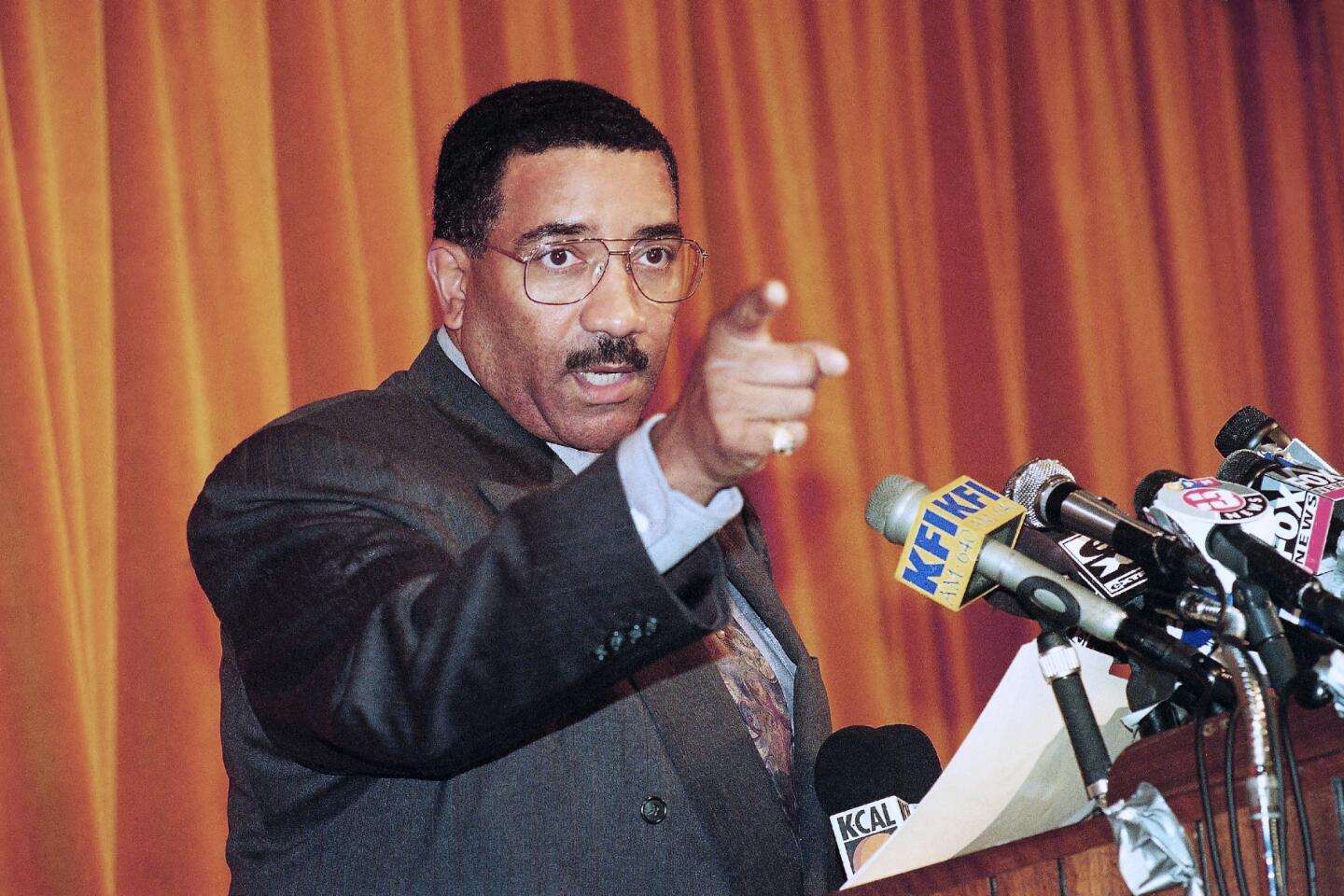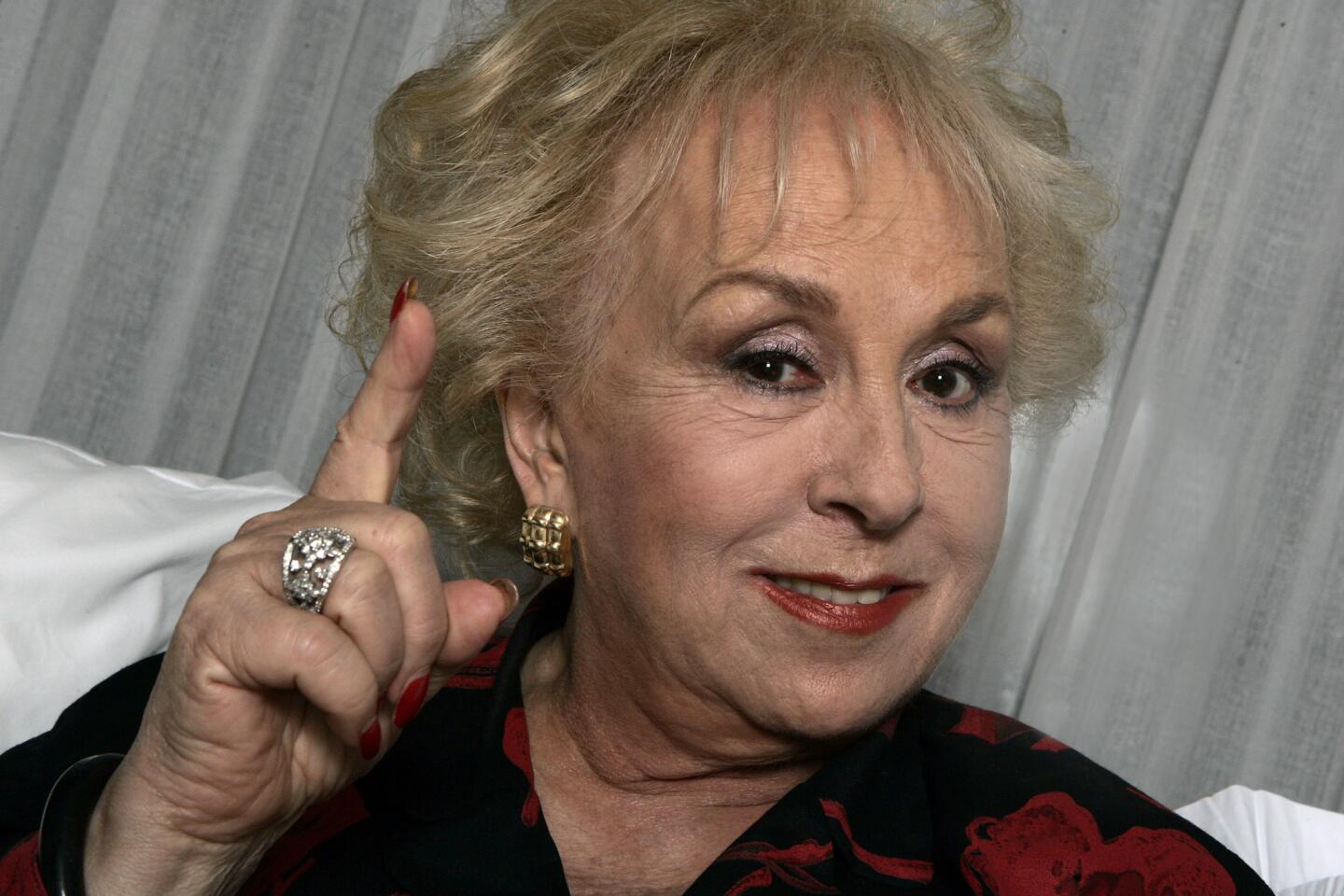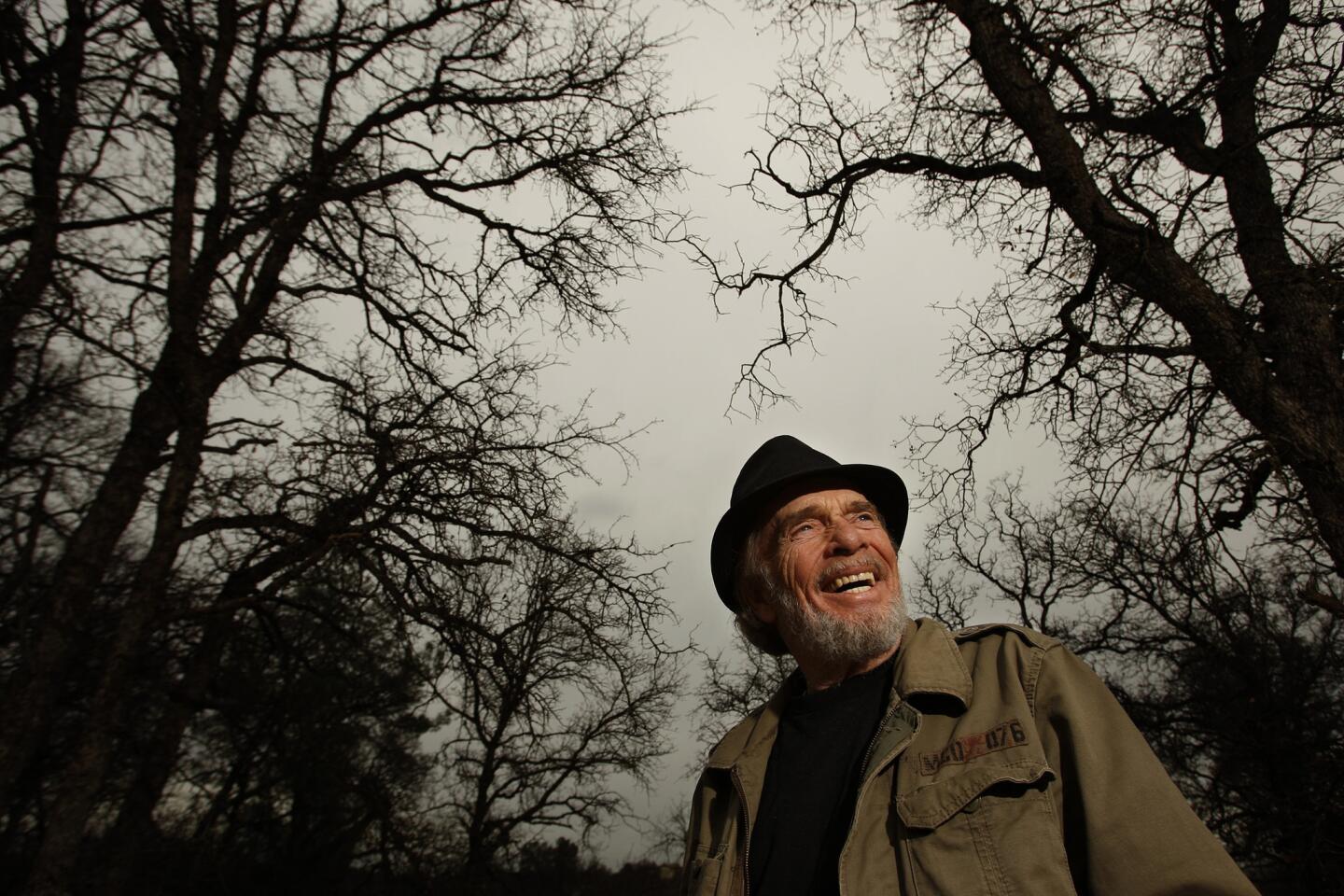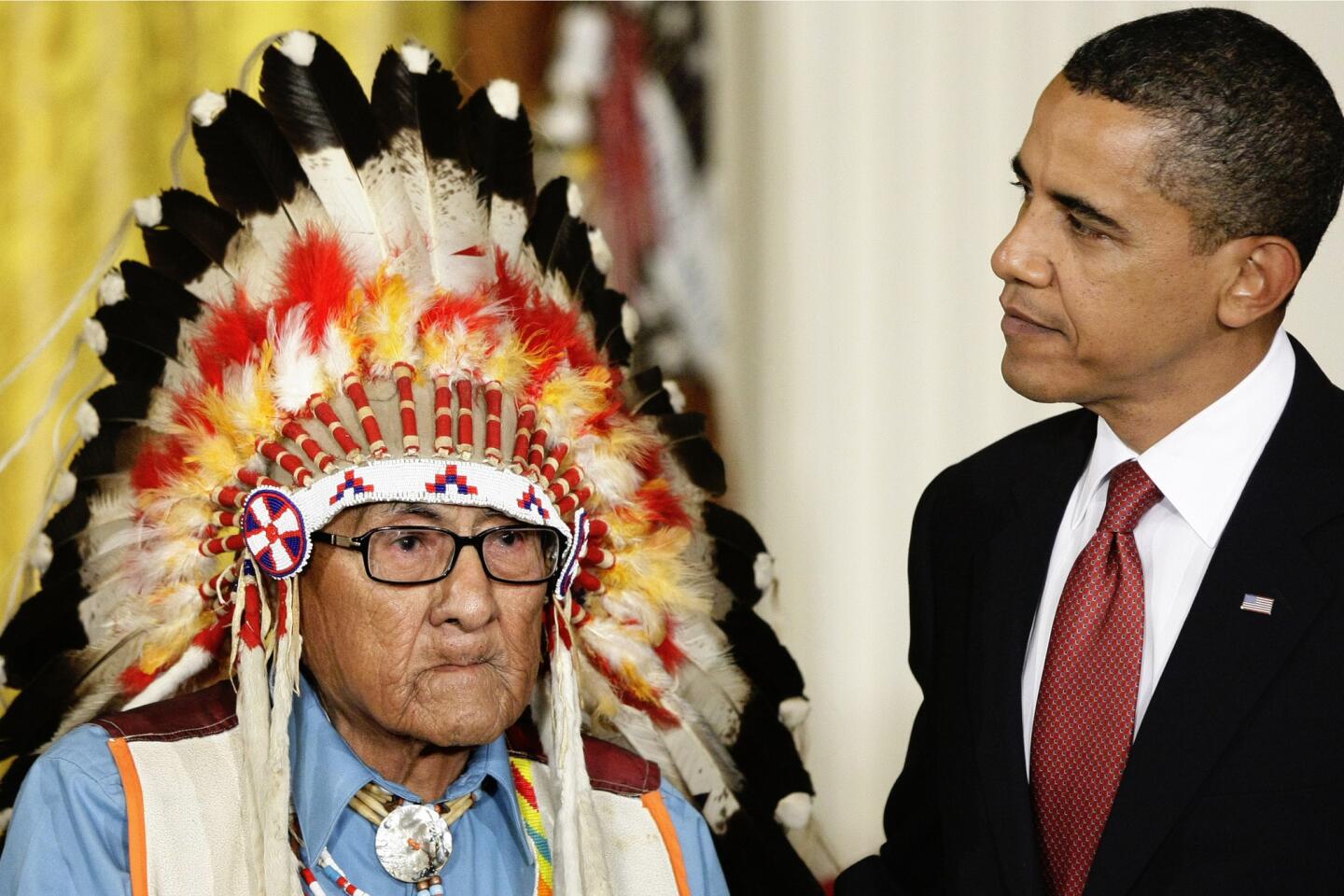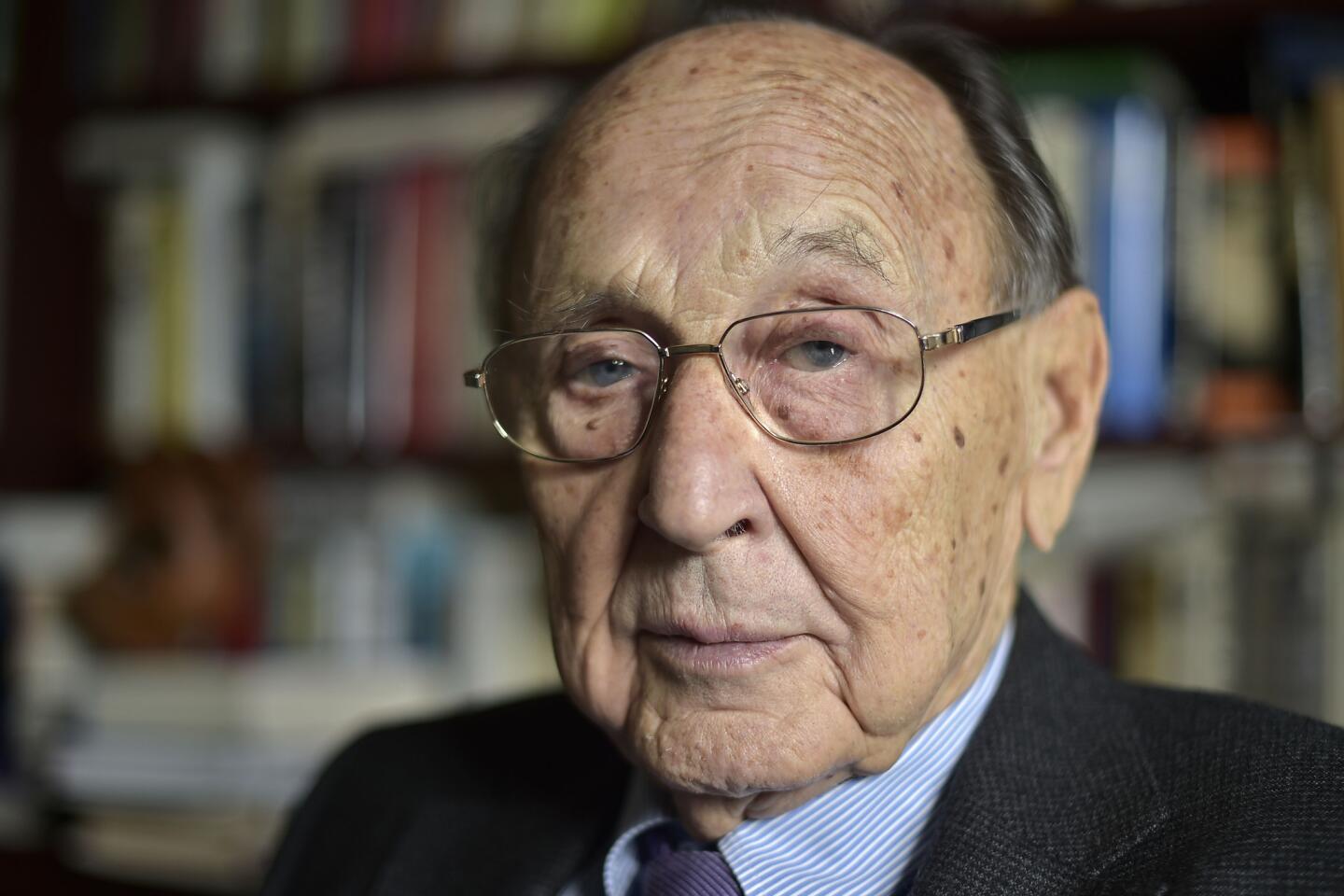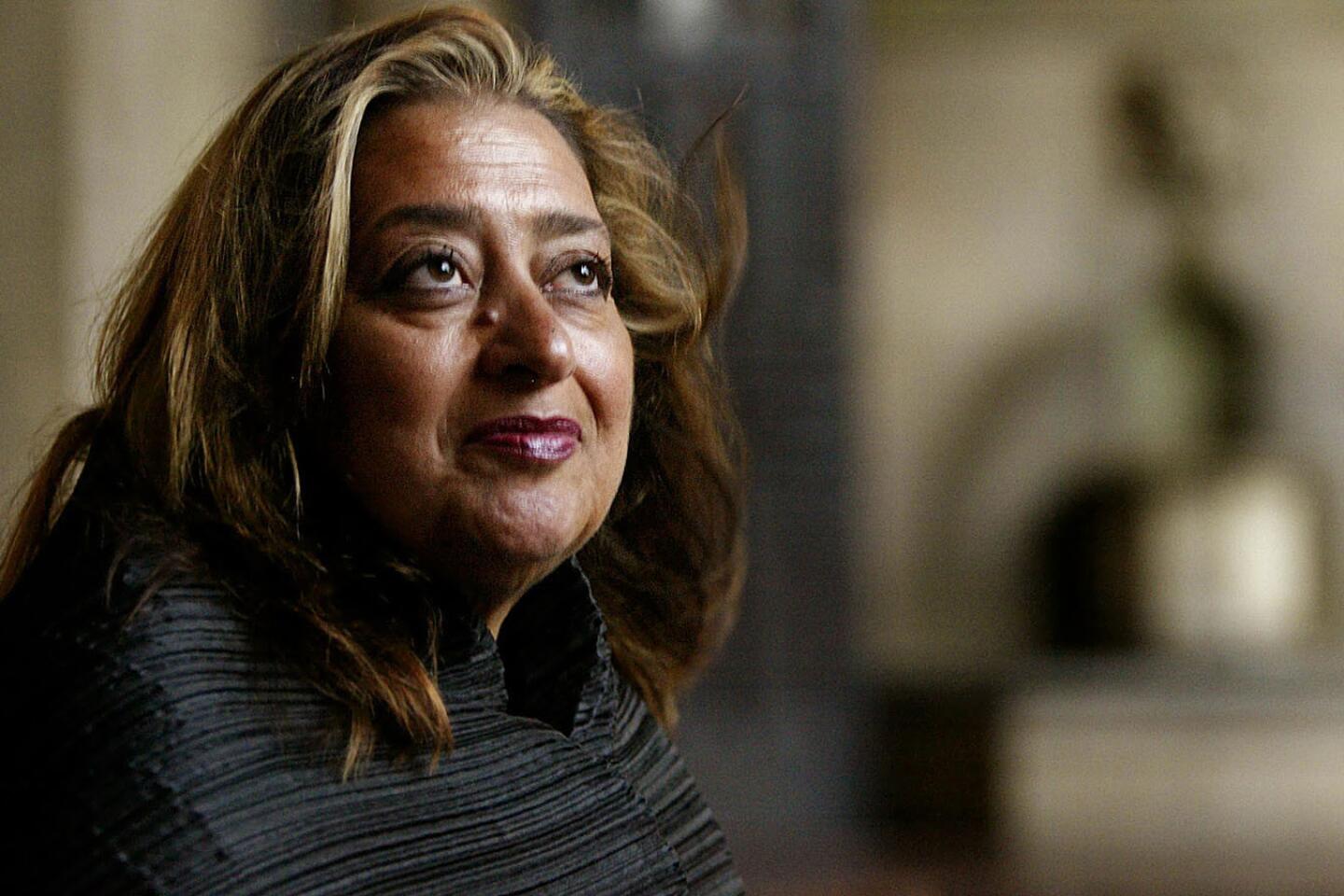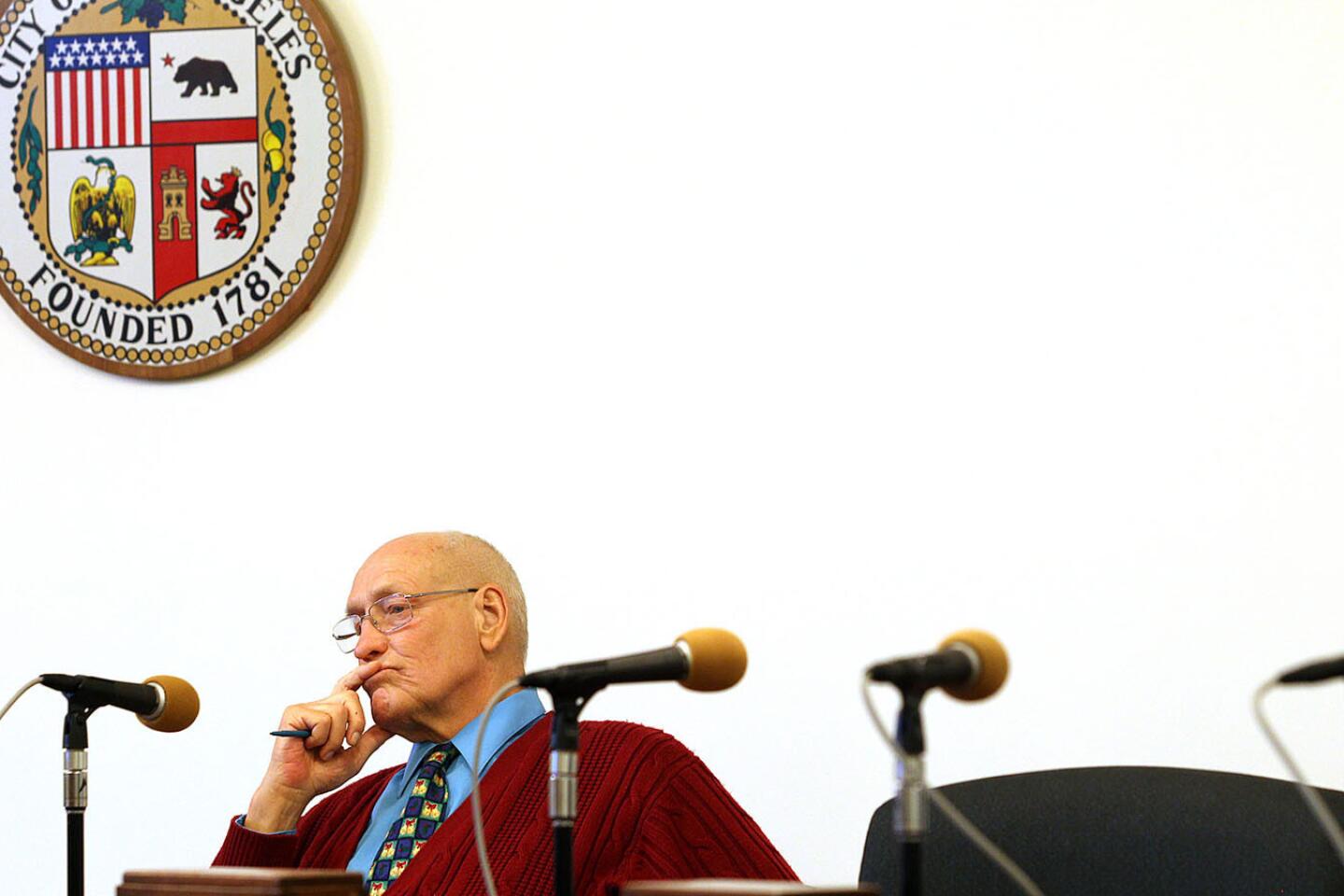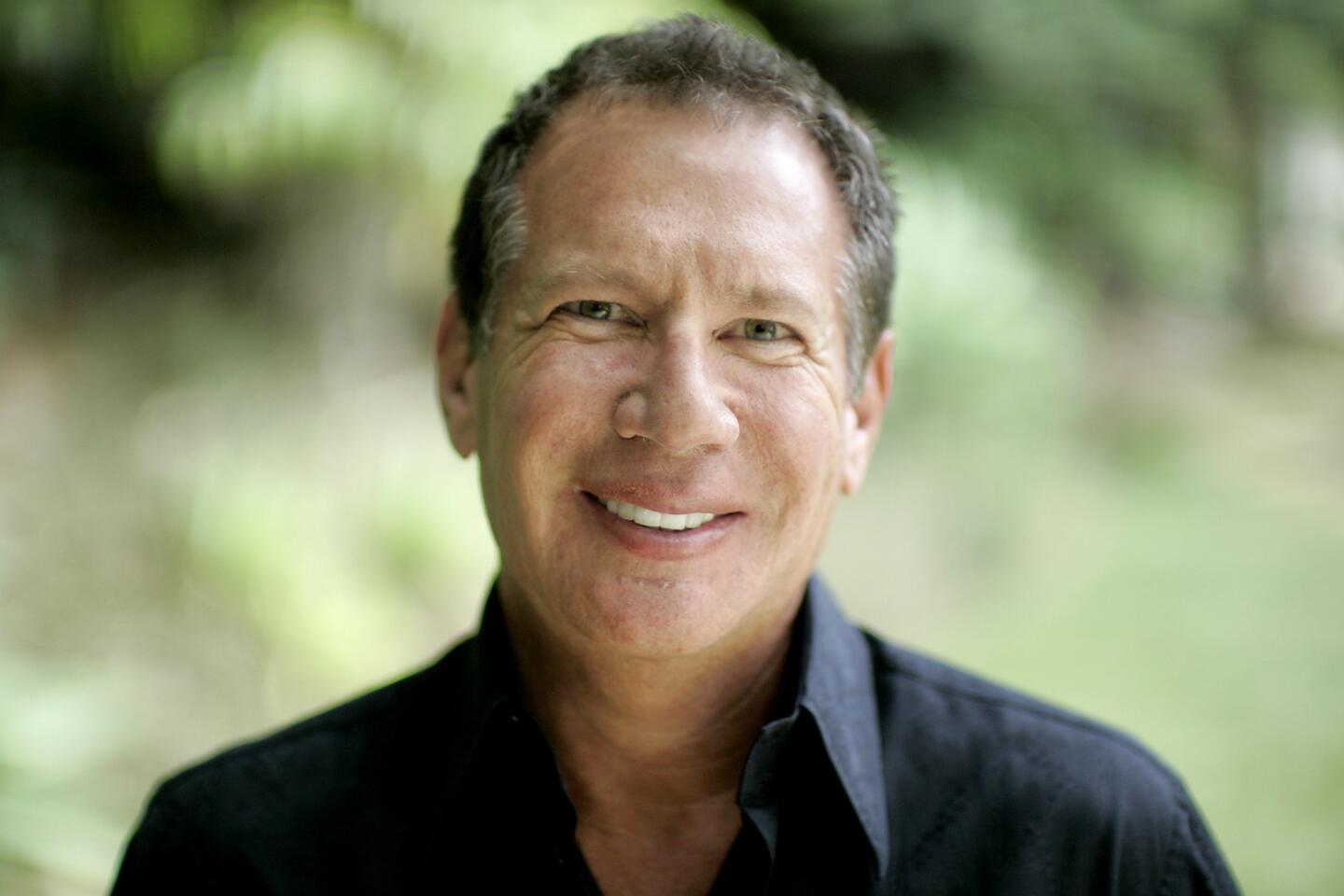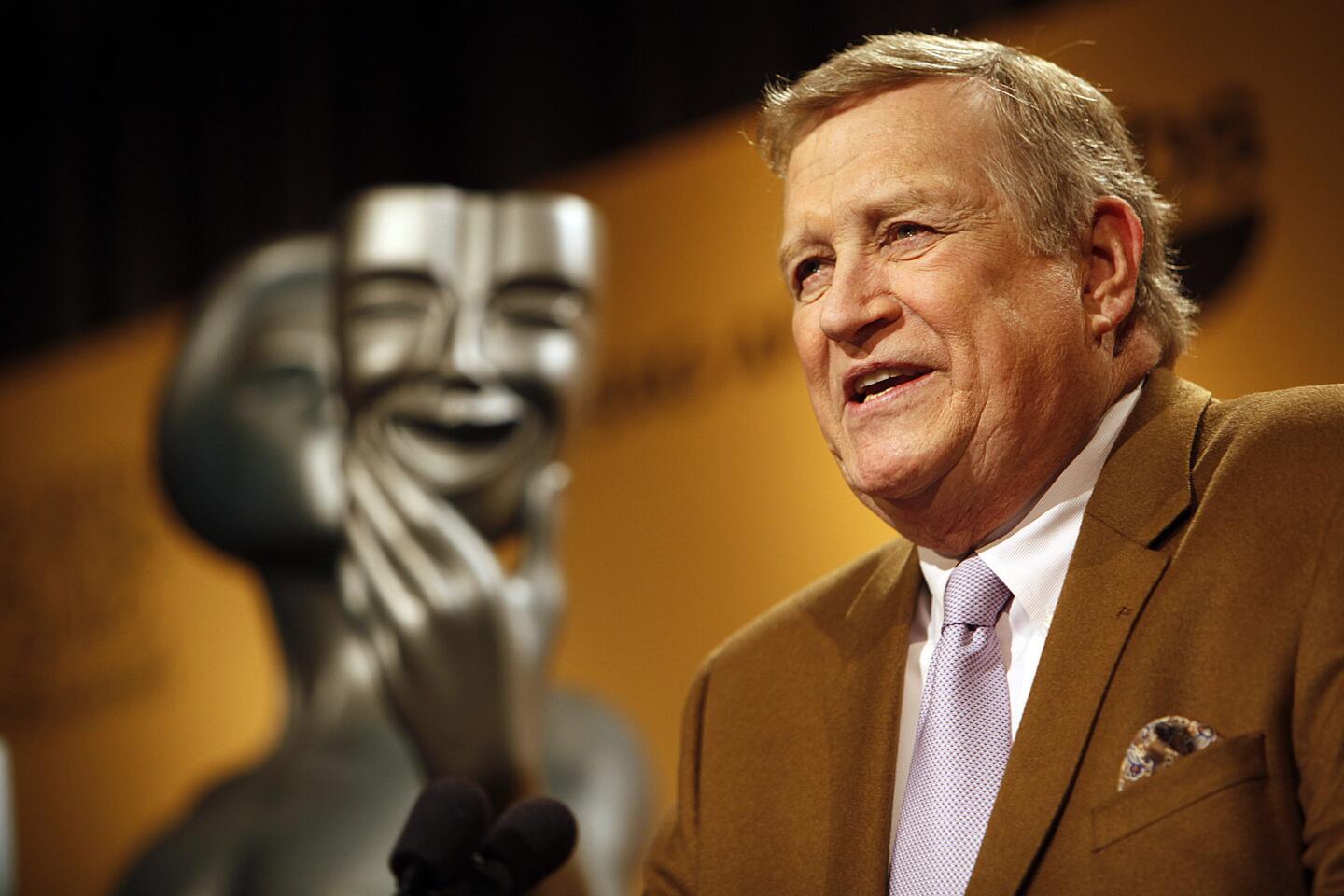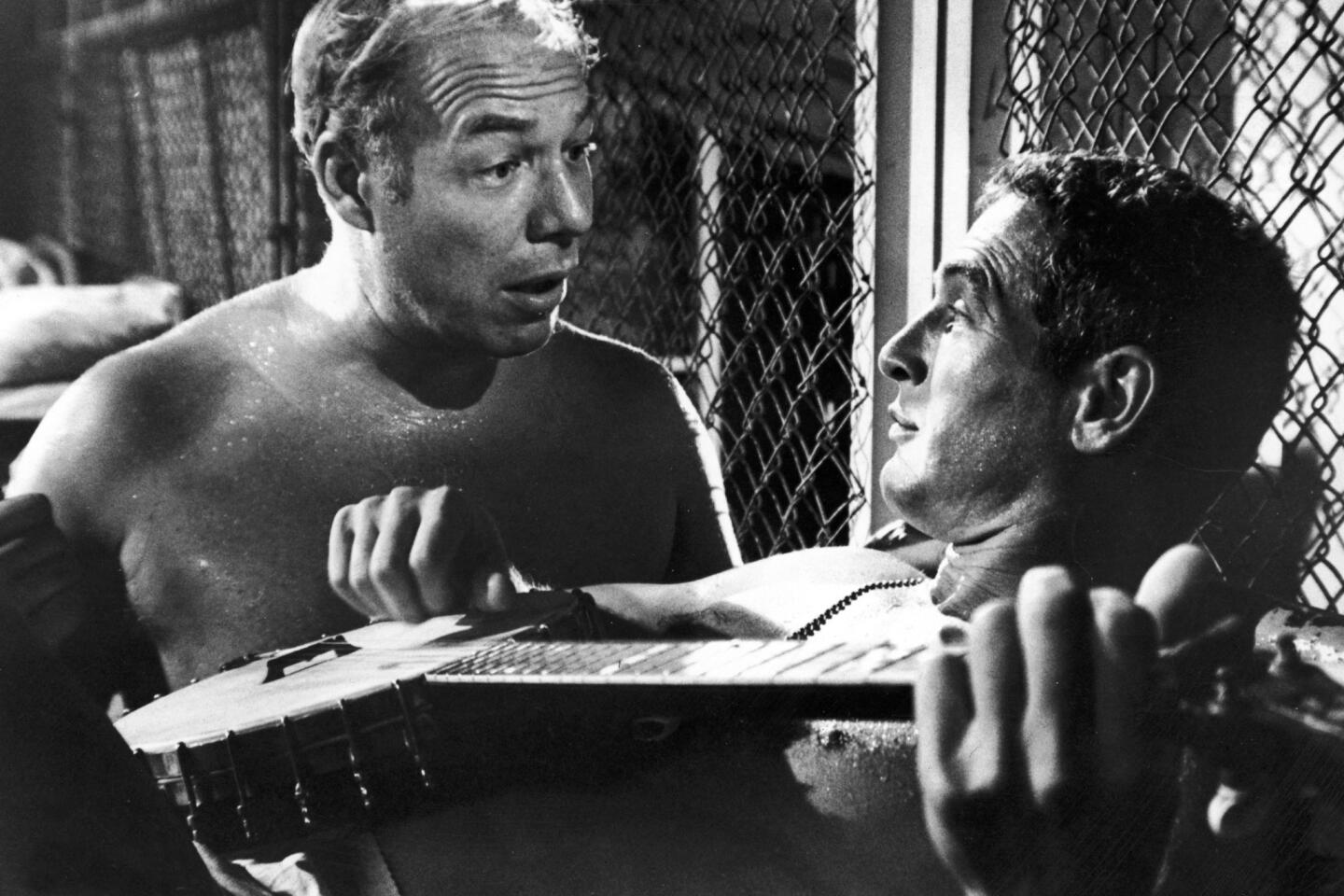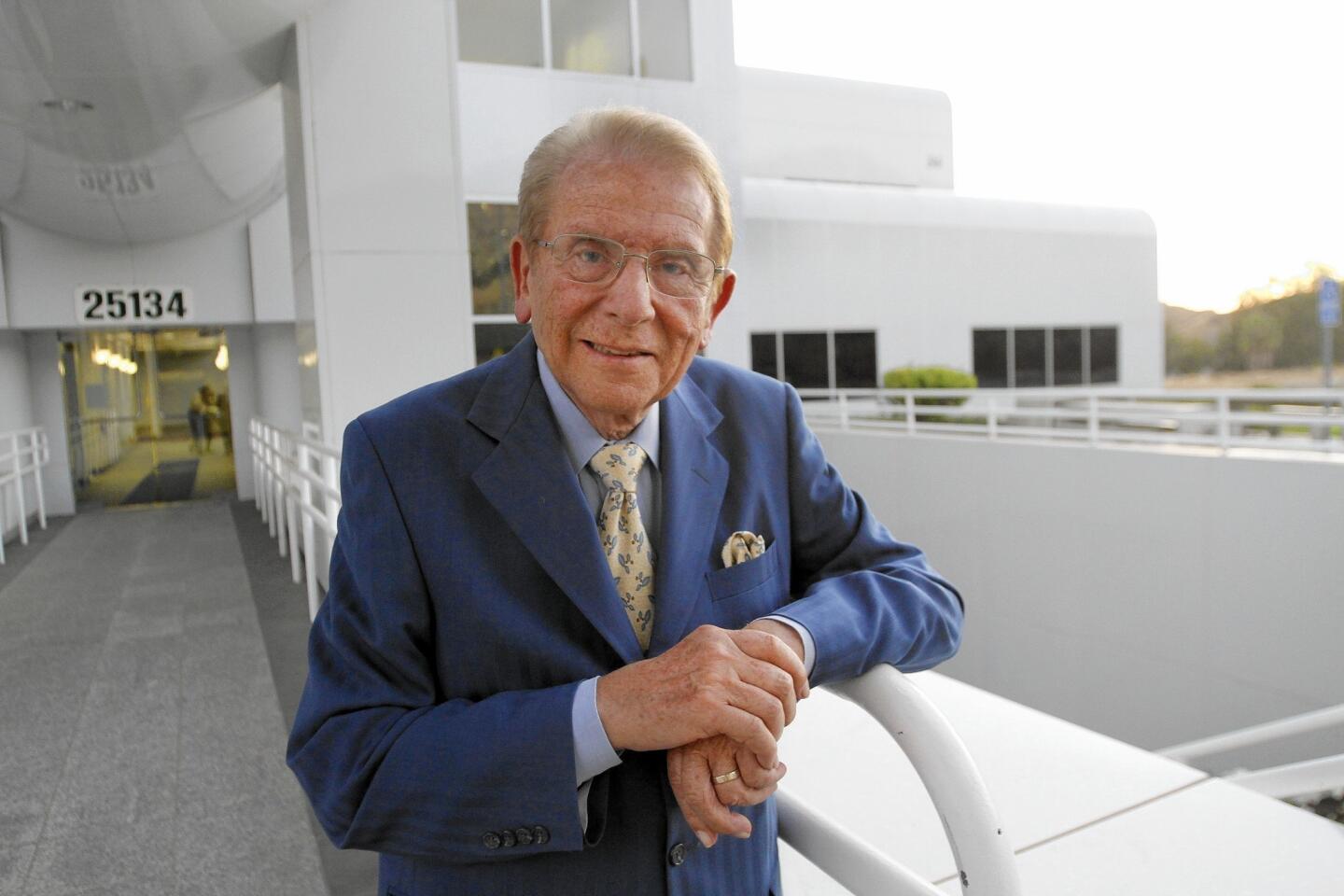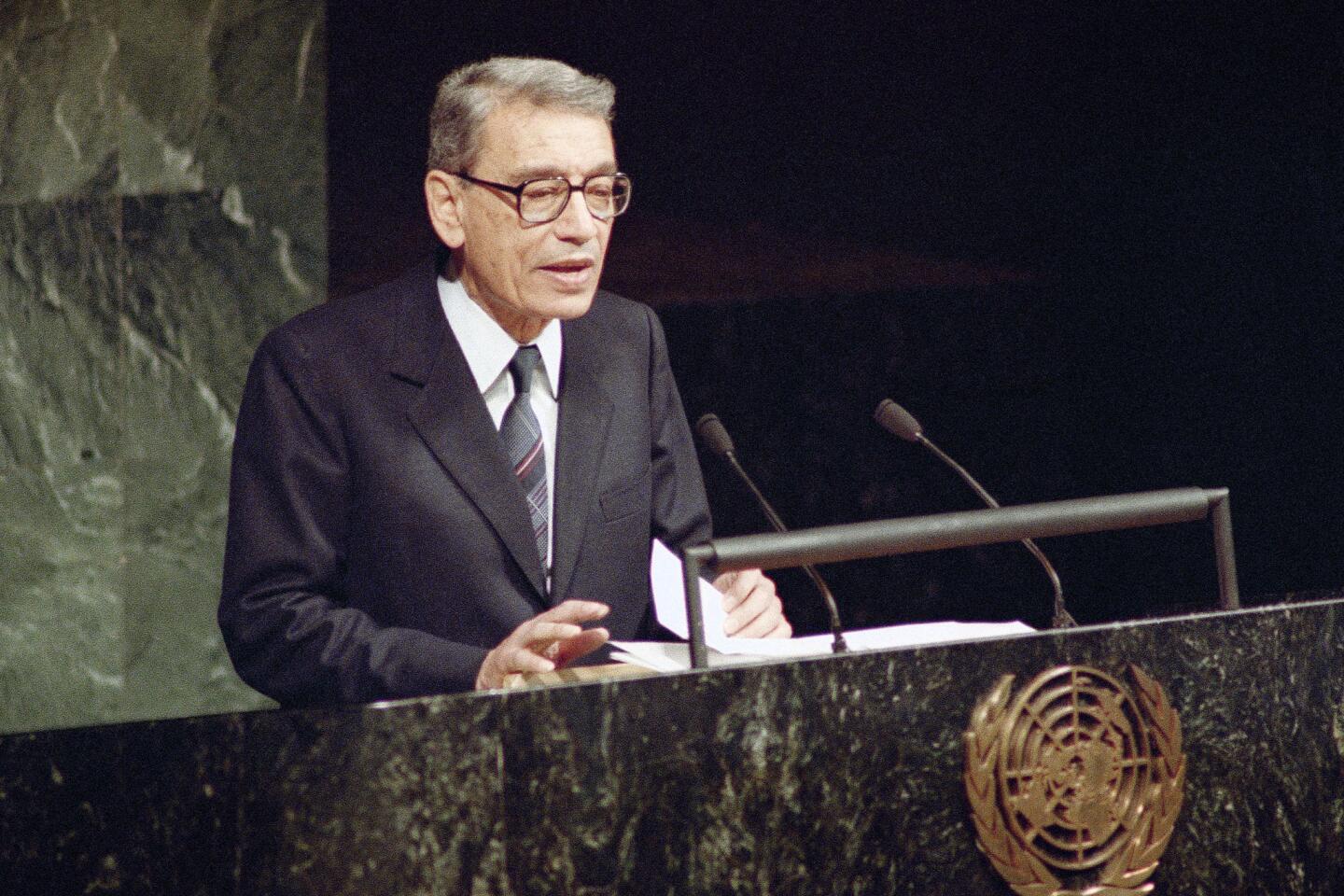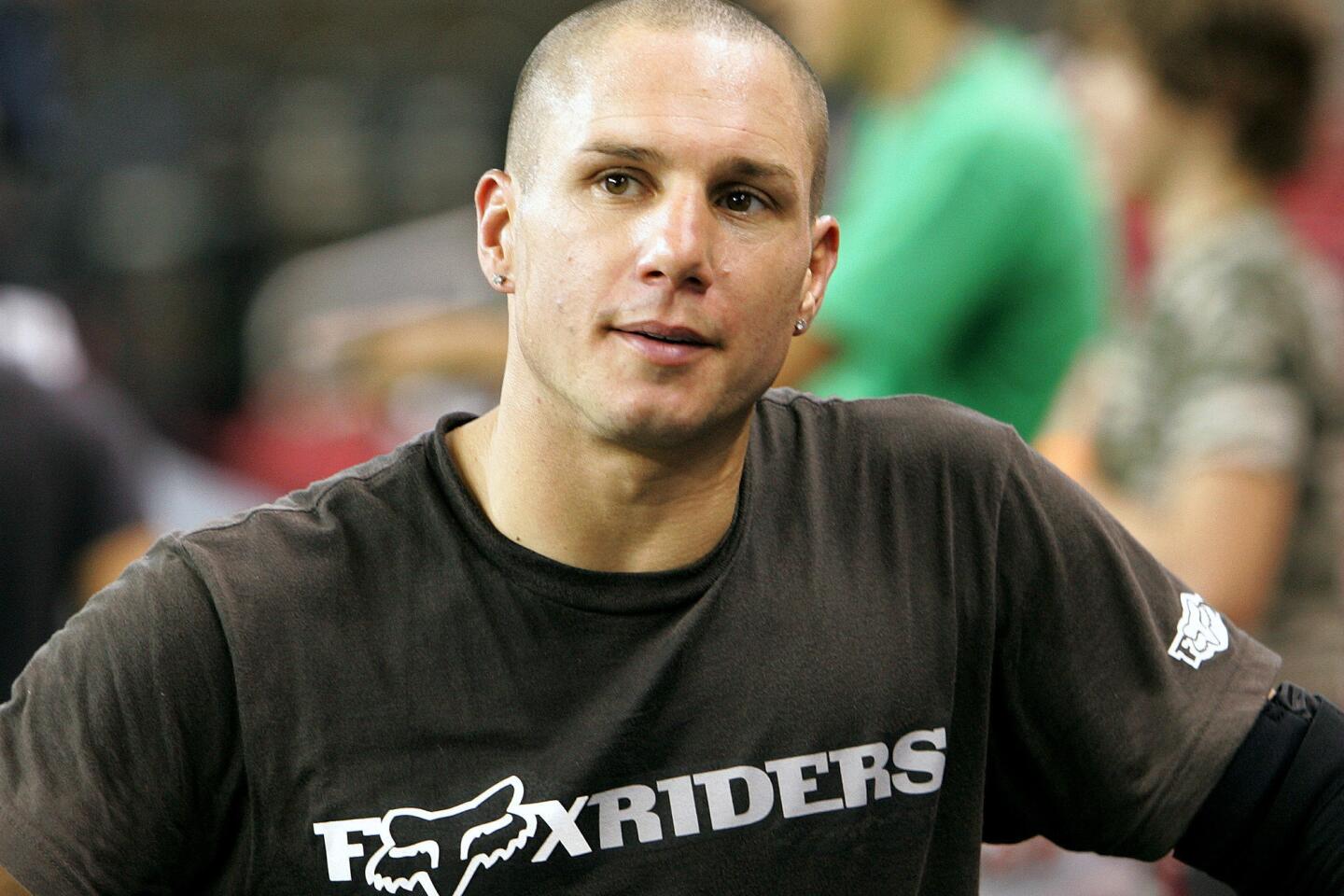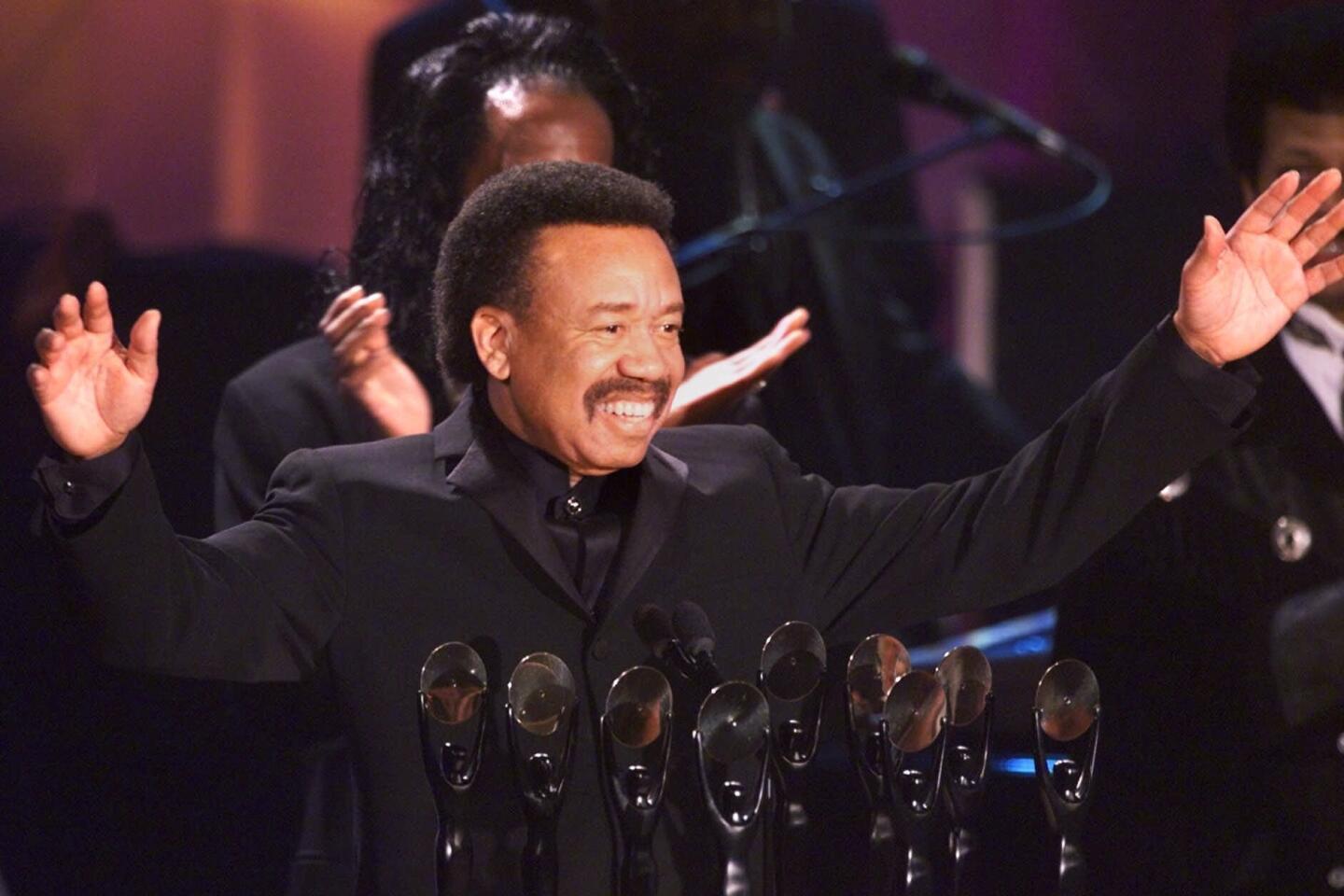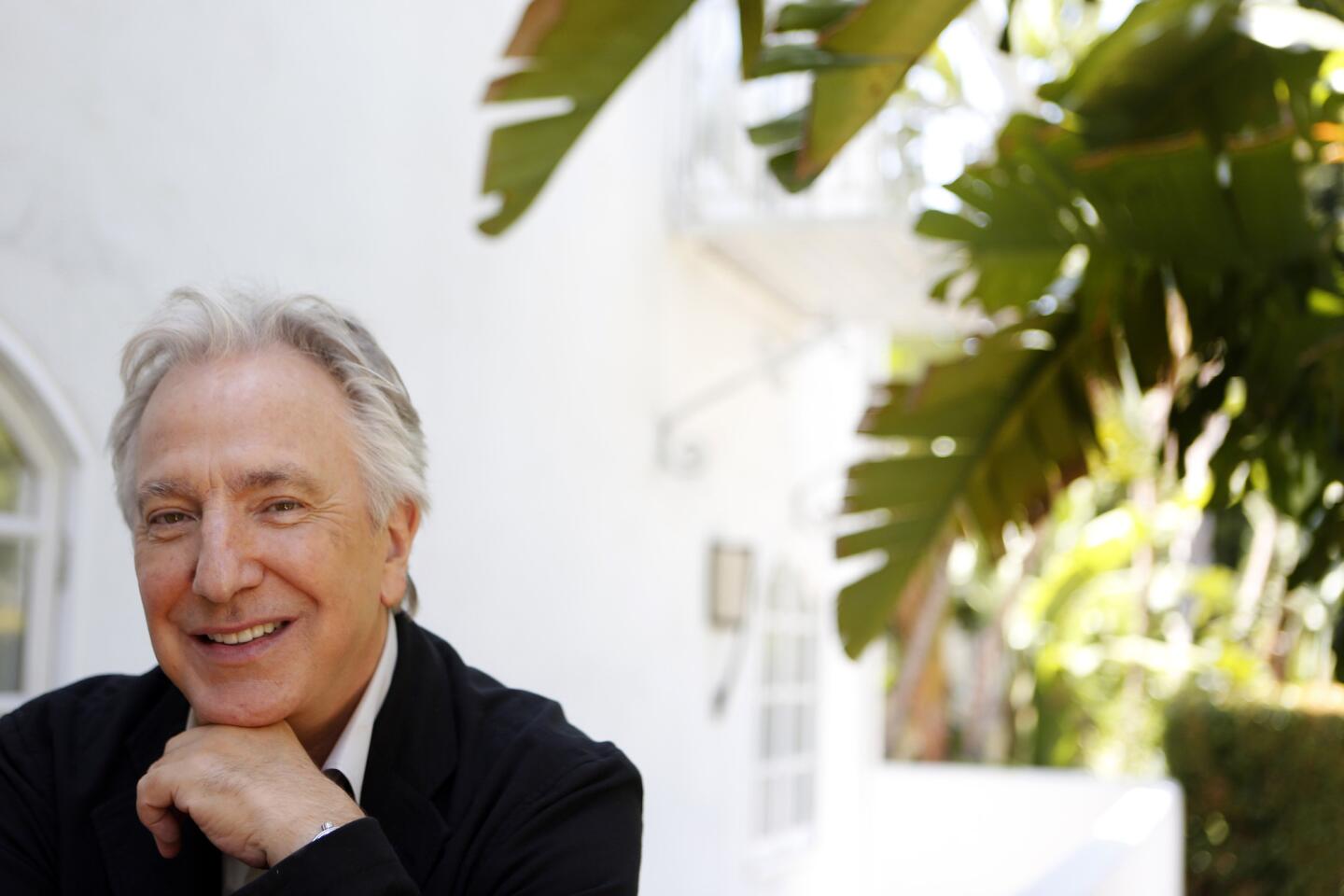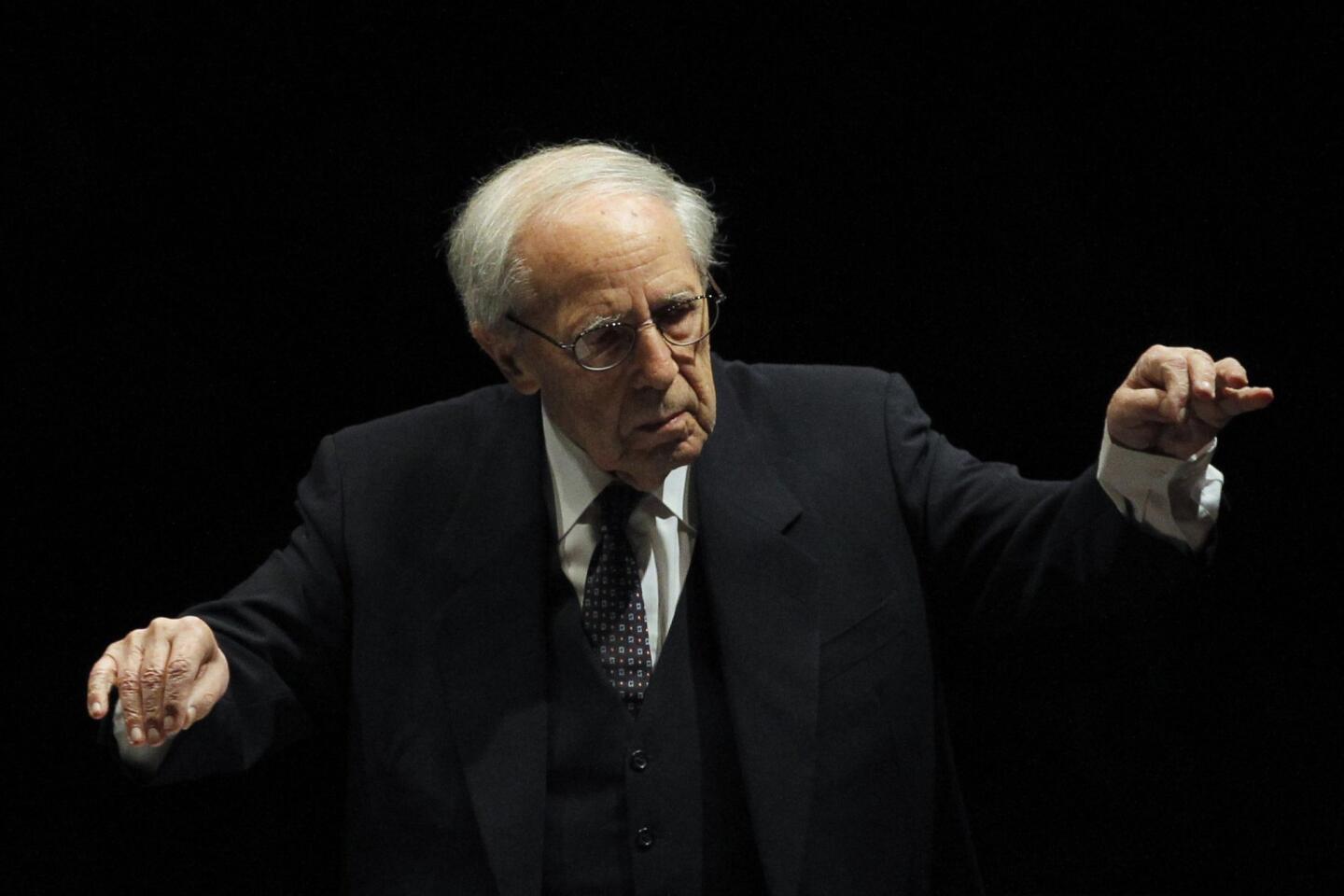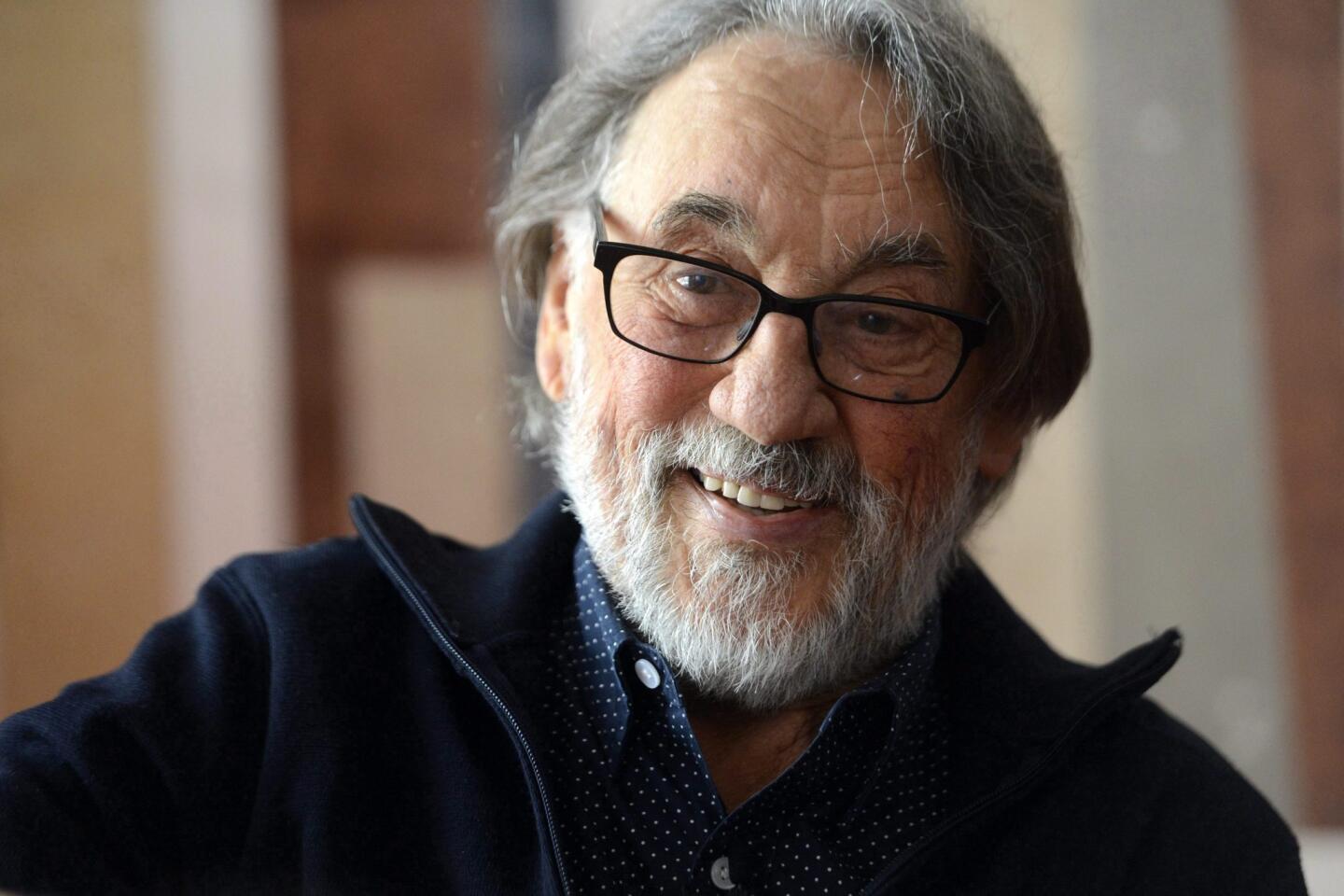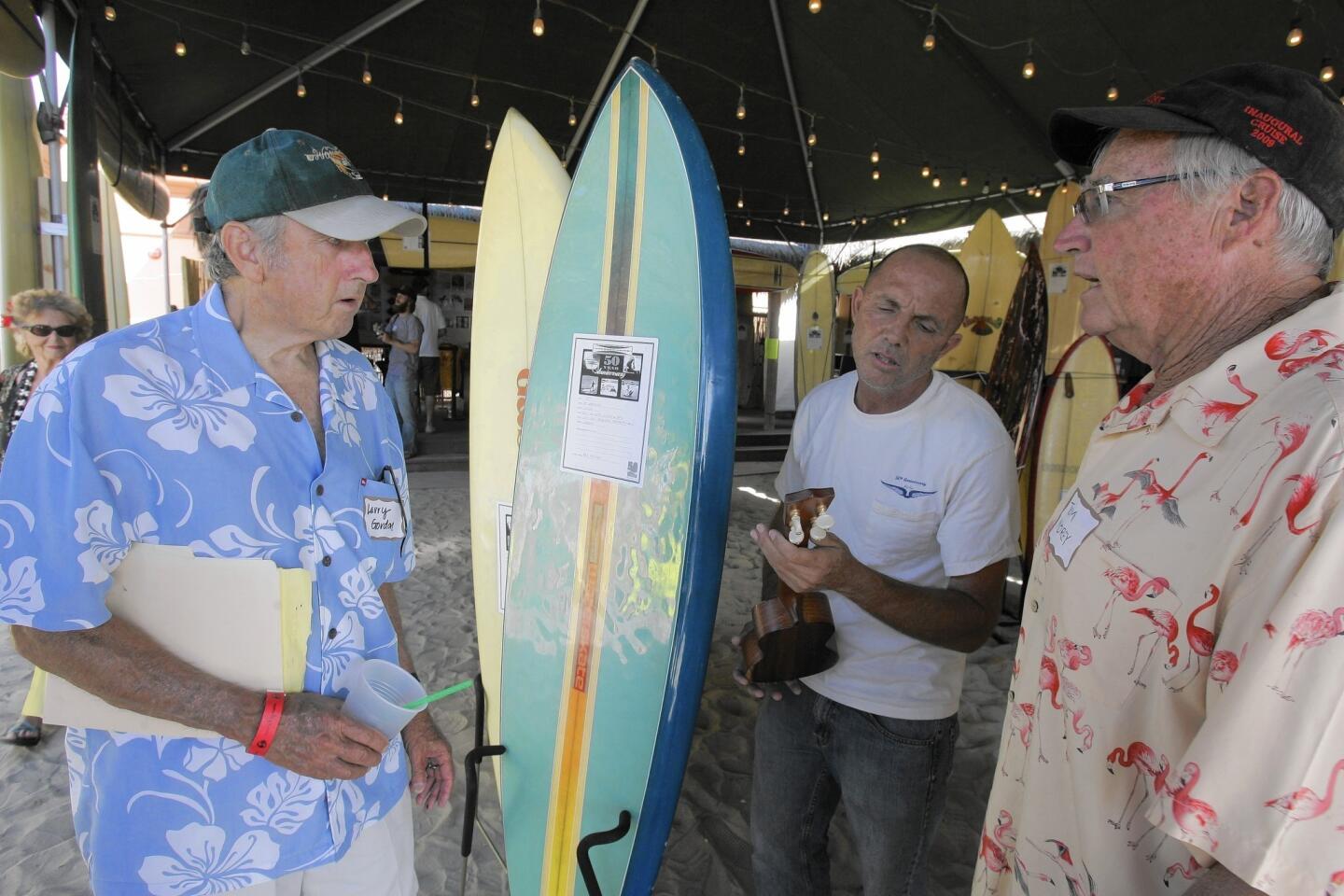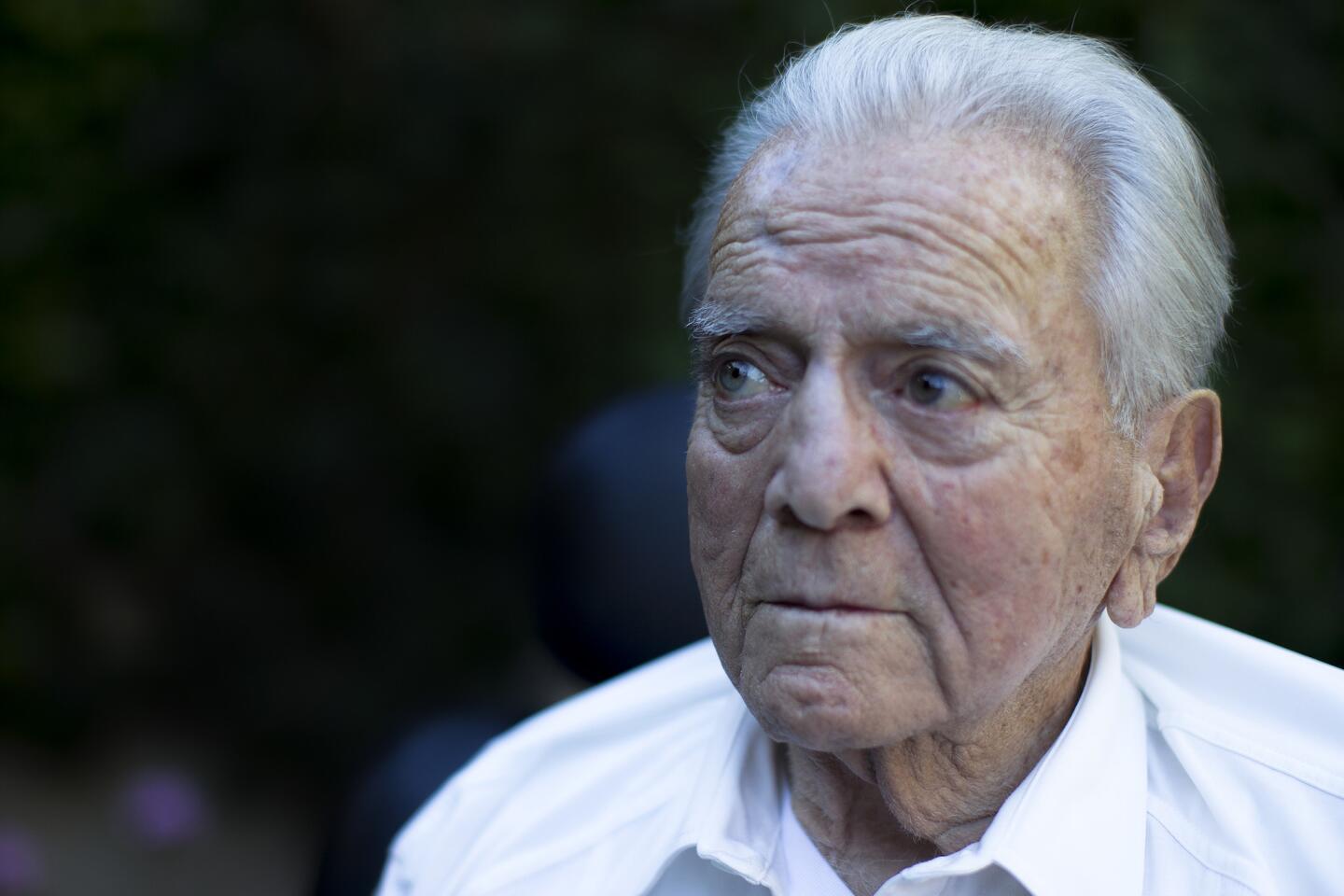Through it all, the songs still flowed.
Over decades of trouble, fame, and more trouble, Merle Haggard never stopped making up songs. The country-music star seemed afflicted with a song-writing compulsion, much as Woody Guthrie was.
He penned his first ballads as a child. By later life, he claimed to have written 10,000 of them.
He composed wherever he went, all day long. He was inspired by snippets of conversation, flashes of memory. He drew lyrics from a flower, from the view out a bus window.
He once wrote an entire song during the walk from his limousine to the stage.
Even after Haggard’s fame dimmed, and audiences shrank, he kept writing, kept singing. He said “the best songs feel like they’ve always been here.” He seemed to never tire of unearthing them.
The musician, who sang of his law-breaking Bakersfield youth and whose natural, storytelling lyrics won him a vast following — more than 100 of his songs made the Billboard charts — died Wednesday — his birthday — at his home near Redding. He was 79.
Haggard’s spokeswoman Tresa Redburn said no cause of death had been determined.
Haggard had been in and out of the hospital in recent months battling pneumonia. His son Ben Haggard, a guitarist in his father’s band, said in a statement that Haggard had died surrounded by family and friends. A week ago, he “had told us he was gonna pass on his birthday, and he wasn’t wrong,” the statement said.
A Central Valley native and former San Quentin inmate, Haggard was considered one of the leading artists of Bakersfield’s honky-tonk scene and his stature in the country-music pantheon ranks with that of Hank Williams and Johnny Cash.
His biggest years stretched from the late 1960s to the early 1980s, during which he once had nine consecutive country No. 1 singles. But Haggard’s inborn, relentless creativity never flagged.
He owed some of his fame to conservative anthems, including the combative 1969 release “Okie from Muskogee” which seemed to mock San Francisco’s anti-war hippies.
But patriotic pride and political songs made up only a portion of the vast and diverse Haggard portfolio, which included autobiographical laments, odes to working men and women, drinking songs and love songs. A Times critic described his ballads as “caked with the dust of hard-won experiences.”
In life Haggard was by no means the clean-cut square of the Muskogee song, about which he expressed mixed feelings (though after a hiatus, he eventually resumed singing it).
He had grown up a troublemaker — a teenage runaway who rode the rails and turned petty criminal. Sent to prison after a botched burglary attempt, he was among the inmates who watched Cash perform at San Quentin in 1958.
The experience famously helped turn his life around. But it didn’t exactly straighten him out. Drugs, divorce and bankruptcy dogged his path, long after success came his way.
He was private, cryptic, and, long after his train-hopping days, he was a fanatic for model trains. Neither his songs nor views were predictable. He wrote, for example, “Irma Jackson,” an anti-racist protest song about a love affair between a white man and black woman, the same year he wrote “Okie from Muskogee.” (Capitol Records delayed the release of “Irma Jackson.”)
Many of his songs were blues-tinged and desolate. Often, they evoked the landscapes of California, his lifelong home. He sang of “Tulare Dust” and the Kern River.
“There’s the south San Joaquin where the seeds of the Dust Bowl are found / And there’s a place called Mt. Whitney from where the mighty Kern River comes down” is a typical Haggard lyric, “so simple it is hard to see the craft involved,” Times critic Robert Hilburn wrote.
Simplicity was his creed, Haggard told Hilburn in a 2003 interview. “You’ve got to remember songs are meant to be sung,” he said. “You are not writing poetry.”
Haggard’s scores of plain, rough-livin’ character songs made him a critics’ choice for one of the leading songwriters of his generation; Hilburn once claimed only Willie Nelson rivaled him among living songwriters in the country tradition.
But Haggard was also famous for his rich baritone singing voice. The voice dipped, broke and warbled with despair. It gave vocal form to the electric Fender-guitar twanginess of what came to be known as the “Bakersfield Sound” — that made-in-California genre calculated to cut through the noisy din of Bakersfield bars.
Haggard took singing very seriously. He spoke as a man seeking to master difficult maneuvers. He recounted efforts to hone his voice to approach the authenticity and restless inflection of his idol, country singer Lefty Frizzell.
Eventually, his style would prove so influential that the Haggard sound became a standard country sound. Randy Travis, Garth Brooks, George Strait, Mark Chesnutt and Clint Black are just a few of the artists whose style recalls Haggard’s.
Despite this, Haggard in late middle age struggled as new waves of country-pop passed him by.
He lamented the absence of seriousness in this music, and condemned what he saw as the “bubble-gum side.”
To him, country music remained what it had ever been: “An art form,” he called it.
Merle Haggard performances
Merle Ronald Haggard was born April 6, 1937, in Oildale, near Bakersfield, the youngest of three children of James Frances and Flossie Mae Haggard. His parents were Dust Bowl refugees from Oklahoma who set up house in a converted boxcar. But Haggard fared better than many fellow migrants because his father had regular work with the railroads.
Haggard described his mother as socially ambitious. His early life contains a telling hint of middle-class aspiration: He took violin lessons as a child. Later, he would play an able fiddle.
Otherwise, young Haggard claimed that he was not encouraged in music. He had always composed, he said. He described his childhood self staring out of classroom windows, making up songs. Haggard recalled an uncle telling his mother, “if you want that boy to amount to anything, you better take that guitar out of his hands.”
After his father died suddenly when he was 9, Haggard ran away. He jumped on freight cars, and spent time in a home for delinquent boys. By 13, he was singing in bars. By 17, he had married a waitress, Leona Hobbs. But he was in jail for auto theft at the birth of their child, the first of four.
Then Haggard broke into a bar, wound up in jail and tried to escape, and in 1958 was sentenced to six to 15 years in San Quentin, where Cash’s performance prompted him to form a prison band.
This real-life narrative would become a classic trope of country music. “Mama Tried,” considered by some critics to be Haggard’s greatest song, is a fairly straight autobiographical account of his road to San Quentin.
Its indelible chorus — “I turned 21 in prison doin’ life without parole” — exaggerates his sentence; paroled after less than three years, Haggard was able to unfurl his musical gifts under state supervision.
He worked briefly as a ditch digger and pursued gigs in Bakersfield bars, where a new country-rockabilly music scene was gaining popularity. Its high priest was Haggard’s predecessor and early collaborator Buck Owens, whose ex-wife, singer Bonnie Owens, Haggard would marry after divorcing Leona.
Haggard joined Wynn Stewart’s band. The popularity of his rendition of Stewart’s “Sing a Sad Song” (1963) was a premonition of future success.
Haggard was an ardent fan of Jimmie Rodgers and Bob Wills. He had talent. He had hawkeyed good looks. But he also had, like them, a strong sense of craft. Over the next few years, he would produce a startling string of hits — 13 Billboard country Top 10 singles by the end of the decade.
These songs established his stardom. Several became virtual country standards. “The Bottle Let Me Down,” “Sing Me Back Home,” “Mama Tried,” “Okie from Muskogee,” and “Workin’ Man Blues” were all produced from 1966 to 1969.
“Okie’s” overt right-wing political message, delivered at the height of Vietnam War protests — and “The Fightin’ Side of Me,” a subsequent, even angrier swipe at the anti-war movement — made Haggard a darling of conservatives. Richard Nixon sent him a congratulatory letter; then California Gov. Ronald Reagan pardoned him and segregationist George Wallace sought his endorsement for president.
Though sincere in his conservative views, Haggard was uncomfortable with his political role. He referred to himself as “dumb as a rock” for writing “Okie,” though he defended the emotions behind it.
Much later, he would lament the Vietnam-era’s stark political divide, and the legacy of bitterness he said it left.
Meanwhile, the bouncy “Okie” song went on to have life of its own. It was covered by, among others, left-populist folk singer Phil Ochs, who (intended irony aside) gave it surprising soulful depths.
By the ‘70s, the Bakersfield Sound had tilted the country music industry west, away from Nashville. Times writer Peter H. King summed up the phenomenon with three nouns: “Buck and Merle and Bakersfield.”
Haggard produced hits steadily over the next two decades; 38 of his songs would be Billboard country No. 1 singles. Reiterating the underdog themes of his early music in the 1970s, he produced the recession ballad “If We Make It Through December” in 1973. He joined forces with Nelson to sing “Pancho and Lefty” in 1983, and won a Grammy in 1984 for “That’s the Way Love Goes.” He was inducted into the Country Music Hall of Fame in 1994.
------------
For the Record
11:24 a.m.: An earlier version of this story incorrectly titled one of Merle Haggard’s ballads. It is “If We Make It Through December,” not “If I Make It Through December.”
------------
He expressed gratitude for the favorable turn of his life after prison. But his living of it remained jagged. The marriage with Bonnie Owens didn’t last, and neither did two subsequent marriages. Haggard drank — and wrote songs about it. The 1980 hit, “I Think I’ll Just Stay Here and Drink” was one of them. He made tens of millions of dollars, and lost them. He had trouble with the IRS, and declared bankruptcy in 1993, the same year he married his fifth wife, Theresa Lane.
He stuck to a grueling touring schedule. He was driven perhaps by money woes but also by demons. By his own admission, he had trouble settling down. His friends worried about him.
He aged and country music changed. The hits ebbed. But the songs still flowed. Haggard had two more children with Lane, who lived with him at a 168-acre ranch outside Redding in the Lake Shasta area.
In 2000, he released the album “If I Could Only Fly” to critical praise.
In 2002, he published the second of two autobiographies, and released a stinging song about the Iraq war during President George W. Bush’s term. This song was a contrast to the Main Street-pride spirit of “Okie.”
Haggard said he did not vote for President Obama, but he spoke glowingly of his election — and, of course, wrote a song about it. He also defended Obama against conservative attacks and called the president’s right-wing critics “almost criminal.”
1/61
Wong’s masterly touch brought a poetic quality to Disney’s “Bambi” that has helped it endure as a classic of animation. The pioneering Chinese American artist influenced later generations of animators. Full obituary
(Peter Brenner / Handout) 2/61
After bursting onto the scene opposite Gene Kelly in the classic 1952 musical “Singin’ in the Rain,” Reynolds became America’s Sweetheart and a potent box office star for years. Her passing came only one day after her daughter, Carrie Fisher, died at the age of 60. Reynolds was 84. Full obituary
(John Rooney / Associated Press) 3/61
George Michael, the English singer-songwriter who shot to stardom in the 1980s as half of the pop duo Wham!, went on to become one of the era’s biggest pop solo artists with hits such as “Faith” and “I Want Your Sex.” He was 53. Full obituary
(Francois Mori / Associated Press) 4/61
The thoracic surgeon came up with an anti-choking technique in 1974. So simple it could be performed by children, the eponymous maneuver made Heimlich a household name. He was 96. Full obituary
(Al Behrman / Associated Press) 5/61
The hugely popular south Indian actress later turned to politics and became the highest elected official in the state of Tamil Nadu. She was 68. Full obituary
(AFP / Getty Images) 6/61
Best known for her portrayal of Carol Brady on “The Brady Bunch,” Henderson
portrayed an idealized mother figure for an entire generation. Her character was the center of the show, cheerfully mothering her brood in an era when divorce was becoming more common. She was 82. Full obituary
(Jay L. Clendenin / Los Angeles Times) 7/61
Dubbed “Dr. Wonderful” by the media, the Texas surgeon performed the first successful heart transplant in the United States and the world’s first implantation of a wholly artificial heart. He also founded the Texas Heart Institute in Houston. He was 96. Full obituary
(David J. Phillip / Associated Press) 8/61
The prominent Los Angeles attorney went from defending his father, a powerful mob boss, to representing celebrities, corrupt businessmen, drug kingpins and the so-called Hollywood Madam, Heidi Fleiss. He was 70. Full obituary
(Ken Hively / Los Angeles Times) 9/61
The award-winning journalist wrote for the Washington Post and the New York Times before becoming an anchor of public television news programs “PBS NewsHour” and “Washington Week.” Her career also included moderating the vice presidential debates in 2004 and 2008. She was 61. Full obituary
(Brendan Smialowski / Getty Images) 10/61
Instantly recognizable for his long white mane and a rich, hearty voice, Russell sang, wrote and produced some of rock ‘n’ roll’s top records. His hits included “Delta Lady,” “Roll Away the Stone,” “A Song for You” and “Superstar.” He was 74. Full obituary
(Luis Sinco / Los Angeles Times) 11/61
The singer-songwriter’s literary sensibility and elegant dissections of desire made him one of popular music’s most influential and admired figures for four decades. Cohen is best known for his songs such as “Hallelujah,” “Suzanne” and “Bird on the Wire.” He was 82. Full obituary
(Joel Saget / AFP / Getty Images) 12/61
Reno was the first woman to serve as United States attorney general. Her unusually long tenure began with a disastrous assault on cultists in Texas and ended after the dramatic raid that returned Elian Gonzalez to his Cuban father. She was 78. Full obituary
(Dennis Cook / Associated Press) 13/61
The 1960s radical was in the vanguard of the movement to stop the Vietnam War and became one of the nation’s best-known champions of liberal causes. He was 76. Full obituary
(George Brich / Associated Press) 14/61
Tabei was the first woman to climb Mount Everest in 1975. In 1992, she also became the first woman to complete the “Seven Summits,” reaching the highest peaks of the seven continents. She was 77. Full obituary
(AFP / Getty Images) 15/61
Nixon was the creative force behind the popular soap operas “One Life to Live” and “All My Children.” She was a pioneer in bringing serious social issues, like racism, AIDS and prostitution, to daytime television. She was 93. Full obituary
(Chris Pizzello / Associated Press) 16/61
The former Israeli president was one of the founding fathers of Israel. The Nobel peace prize laureate was an early advocate of the idea that Israel’s survival depended on territorial compromise with the Palestinians. He was 93. Full obituary
(AFP / Getty Images) 17/61
A seven-time professional major tournament champion, Palmer revolutionized sports marketing as it is known today, and his success contributed to increased incomes for athletes across the sporting spectrum. He was 87. Full obituary
(David J. Phillip / Associated Press) 18/61
Known as the Vatican’s exorcist, Amorth, a Roman Catholic priest, helped promote the ritual of banishing the devil from people or places. He was 91. Full obituary
(AFP / Getty Images) 19/61
The American playwright was known for works such as “The Zoo Story,” “The Sandbox,” “Who’s Afraid of Virginia Woolf?” and “A Delicate Balance.” He was awarded the Pulitzer Prize for drama three times. He was 88. Full obituary
(Jennifer S. Altman / For the Times) 20/61
The ska pioneer and Jamaican music legend recorded thousands of records, including such hits as “Al Capone” and “Judge Dread.” He helped ignite the ska movement in England, and later helped carry it into the rock-steady era in the mid-1960s. He was 78. Full obituary
(Larry Ellis / Getty Images) 21/61
Known as “the first lady of anti-feminism,” Schlafly was a political activist who galvanized grass-roots conservatives to help defeat the Equal Rights Amendment and, in ensuing decades, effectively push the Republican Party to the right. She was 92. Full obituary
(Christine Cotter / Los Angeles Times) 22/61
O’Brian helped tame the Wild West as the star of TV’s “The Life and Legend of Wyatt Earp” and was the founder of a long-running youth leadership development organization. “Wyatt Earp” became a top 10-rated series and made O’Brian a household name. He was 91. Full obituary
(Ricardo DeAratanha / Los Angeles Times) 23/61
Jerry Heller, the early manager of N.W.A, was an important and colorful personality in the emerging West Coast rap scene in the 1980s. Heller was 75. Full obituary
(Lori Shepler / Los Angeles Times) 24/61
Two-time Oscar nominee Gene Wilder brought a unique blend of manic energy and world-weary melancholy to films as varied as 1971’s children’s movie “Willy Wonka & the Chocolate Factory” and the 1980 comedy “Stir Crazy.” He was 83. Full obituary
(AFP / Getty Images) 25/61
The beloved top-selling Mexican singer wooed crowds on both sides of the border with ballads of love and heartbreak for more than four decades. He was 66. Full obituary
(Wilfredo Lee / Associated Press) 26/61
Known as the “queen of knitwear,” Sonia Rykiel became a fixture of Paris’ fashion scene, starting in 1968. French President Francois Hollande praised her as “a pioneer” who “offered women freedom of movement.” She was 86. Full obituary
(Thibault Camus / Associated Press) 27/61
The conservative political commentator hosted the long-running weekly public television show “The McLaughlin Group” that helped alter the shape of political discourse since its debut in 1982. He was 89. Full obituary
(Kevin Wolf / Associated Press) 28/61
Best-known for his post-bop recordings for Blue Note Records in the 1960s and 1970s, the inventive jazz vibraphonist played with a litany of jazz greats as both bandleader and sideman during a career spanning more than 50 years. He was 75. Full obituary
(Scott Chernis / Associated Press) 29/61
The British actor, who was 3-foot-8, gave life to the “Star Wars” droid R2-D2, one of the most beloved characters in the space-opera franchise and among the most iconic robots in pop culture history. He was 81. Full obituary
(Reed Saxon / Associated Press) 30/61
For many in L.A., Folsom was the face of the Parent Teacher Student Assn., better known as the PTSA or PTA. He served as the official and unofficial watchdog over the Los Angeles Unified School District and wrote about his experiences in his blog. He was 69. Full obituary
(Mark Boster / Los Angeles Times) 31/61
Fountain combined the Swing Era sensibility of jazz clarinetist Benny Goodman with the down-home, freewheeling style characteristic of traditional New Orleans jazz to become a national star in the 1950s as a featured soloist on the “The Lawrence Welk Show.” He was 86. Full obituary
(Luis Sinco / Los Angeles Times) 32/61
Lowery was a pioneer in efforts to help people suffering from poverty, addiction and mental illness move out of tents and cardboard boxes on Los Angeles’ sidewalks and into supportive housing. She was 70. Full obituary
(Lawrence K. Ho / Los Angeles Times) 33/61
Nixon, a Hollywood voice double, can be heard in place of the leading actresses in such classic movie musicals as “West Side Story,” “The King and I” and “My Fair Lady.” She was 86. Full obituary
(Rob Kim / AFP/Getty Images) 34/61
The department store heir’s widow was a socialite and philanthropist who hobnobbed with the world’s elite, epitomized high fashion and was best friends with former first lady Nancy Reagan. She was 93. Full obituary
(Evan Agostini / Associated Press) 35/61
The author and teacher was long established as a leading literary figure of Southern California. Her works include “Golden Days,” “There Will Never Be Another You” and her memoir “Dreaming, Hard Luck and Good Times in America.” She was 82. Full obituary
(Ricardo DeAratanha / Los Angeles Times) 36/61
The Nazi concentration camp survivor won the Nobel in 1986 for his message “of peace, atonement and human dignity.” “Night,” his account of his year in death camps, is regarded as one of the most powerful achievements in Holocaust literature. He was 87. Full obituary
(Allen J. Schaben / Los Angeles Times) 37/61
One of the greatest basketball coaches of any gender or generation, Summitt spent 38 years as coach of the University of Tennessee women’s basketball team before dementia forced her early retirement. She was 64. Full obituary
(Wade Payne / Associated Press) 38/61
The iconic New York Times fashion photographer darted around New York on a humble bicycle to cover the style of high society grand dames and downtown punks with equal verve. He was 87. Full obituary
(Mark Lennihan / Associated Press) 39/61
Aguirre was best known for his portrayal of the towering “Profesor Jirafales,” the likable and often disrespected giraffe teacher on the 1970s-era hit show “El Chavo del Ocho.” The screwball comedy helped usher in an era of edgier comedy in Mexico and elsewhere. Aguirre was 82. Full obituary
(AFP / Getty Images) 40/61
The three-time heavyweight boxing champion’s brilliance in the ring and bravado outside it made his face one of the most recognizable in the world. He was 74. Full obituary
(John Rooney / Associated Press) 41/61
Like Walter Cronkite and Edward R. Murrow, the CBS newsman became part of a group of journalists who set the tone for storytelling on television. He was on “60 Minutes” for 46 years, holding the longest tenure on prime-time television of anyone in history. He was 84. Full obituary
(Carolyn Cole / Los Angeles Times) 42/61
The first African American chief of the Los Angeles Police Department, Williams steadied the agency in the tumultuous wake of the 1992 riots but was distrusted as an outsider by many officers and politicians. He was 72. Full obituary
(Nick Ut / Associated Press) 43/61
Best known for her role as Marie Barone on “Everybody Loves Raymond,” Roberts won four Emmys for her work on that show and one for her work on “St. Elsewhere.” She was 90. Full obituary
(Ken Hively / Los Angeles Times) 44/61
The country music legend sang of his law-breaking Bakersfield youth and penned a stream of No. 1 hits. He owed some of his fame to conservative anthems, including the combative 1969 release “Okie from Muskogee,” which seemed to mock San Francisco’s anti-war hippies. He was 79. Full obituary
(Genaro Molina / Los Angeles Times) 45/61
The acclaimed Native American historian was the last surviving war chief of Montana’s Crow Tribe. President Obama awarded him the Presidential Medal of Freedom in 2009. He was 102. Full obituary
(J. Scott Applewhite / Associated Press) 46/61
Germany’s longest-serving foreign minister brokered an end to the painful 40-year division of his homeland in 1990, but only after persevering for decades through the most tragic and destructive phases of Germany’s 20th century history. He was 89. Full obituary
(Martin Meissner / Associated Press) 47/61
The Iraqi-born British architect was the first woman to win the Pritzker Prize, architecture’s highest honor. She made her mark with buildings such as the London Aquatics Centre, the MAXXI museum for contemporary art in Rome and the innovative Bridge Pavilion in Zaragoza, Spain. She was 65. Full obituary
(Kevork Djansezian / Associated Press) 48/61
The former television talk show host became the first openly gay man to serve on the Los Angeles City Council. He advocated for the homeless, gays and lesbians and other liberal causes. He was 70. Full obituary
(Christina House / For The Times) 49/61
Garry Shandling’s comedic career spanned decades, but he is best known for his role as Larry Sanders, the host of a fictional talk show. His sitcom pushed the boundaries of TV, influencing shows such as “The Office” and “Modern Family.” He was 66. Full obituary.
(Robert Gauthier / Los Angeles Times) 50/61
Ken Howard was president of SAG-AFTRA and an actor known for his role on TV’s ‘The White Shadow.’ He championed the merger of Hollywood’s two largest actors unions, which had a history of sparring. He was 71. Full obituary
(Al Seib / Los Angeles Times) 51/61
The longtime Los Angeles radio disc jockey, whose real name was Art Ferguson, hosted the morning radio show for popular and influential station KHJ-AM in the late 1960s and went on to be a key player in the launch of latter-day powerhouses KROQ-AM and KIIS-FM. He was 71. Full obituary
(Lawrence K. Ho / Los Angeles Times) 52/61
The veteran actor built his early career playing heavies and won an Academy Award in 1968 for his supporting role as the tough Southern prison-camp convict who grew to hero-worship Paul Newman’s defiant title character in “Cool Hand Luke.” He was 91. Full obituary
(Warner Bros. / Getty Images) 53/61
A prolific entrepreneur, Mann over the course of seven decades founded 17 companies in fields ranging from aerospace to pharmaceuticals to medical devices. He was 90. Full obituary
(Kirk McKoy / Los Angeles Times) 54/61
The Egyptian diplomat helped negotiate his country’s landmark peace deal with Israel but then clashed with the United States when he served a single term as U.N. secretary-general. He was 93. Full obituary
(Marty Lederhandler / Associated Press) 55/61
Pro-BMX biker Dave Mirra was one of the most decorated athletes in X Games history. He held the record for the most medals in history with 24. He was 41. Full obituary
(Ed Reinke / Associated Press) 56/61
Maurice White, co-founder and leader of the groundbreaking ensemble Earth, Wind & Fire, was the source for a wealth of euphoric hits in the 1970s and early ‘80s, including ‘Shining Star,’ ‘September,’ and ‘Boogie Wonderland.’ He was 74. Full obituary
(Kathy Willens / Associated Press) 57/61
In a career that encompassed everything from big-budget Hollywood movies to classical theater, Rickman made bad behavior fascinating to watch from “Die Hard” to the “Harry Potter” movies. He was 69. Full obituary
(Francine Orr / Los Angeles Times) 58/61
The composer and former principal conductor of the New York Philharmonic was known for pushing music lovers and the music establishment to let go of the past and embrace new sounds, structures and textures. He was 90. Full obituary
(Christophe Ena / Associated Press) 59/61
The Academy Award winner was revered as one of the most influential cinematographers in film history for his work on classics including “Close Encounters of the Third Kind” and “The Deer Hunter.” He was 85. Full obituary
(Tamas Kovacs / EPA) 60/61
Gordon helped revolutionize surfing with the creation of the foam surfboard. His polyurethane boards were lighter and easier to ride, making surfing accessible -- which helped popularize the sport globally. He was in his 70s. Full obituary
(Charlie Neuman / San Diego Union-Tribune/ZUMA Press) 61/61
The attorney and almond farmer was known for his battle to stop the $68-billion California bullet train project from slicing up his almond orchards -- part of a deeply emotional land war that has drawn in hundreds of farming families from Merced to Bakersfield. He was 92. Full obituary
(Gina Ferazzi / Los Angeles Times) He was, by then, “one of the last damn cowboys left,” a San Francisco Chronicle critic declared. In 2008, Haggard had part of a lung removed, and soon resumed touring.
He had once called his life “a 35-year bus ride.” But the train-hopping Bakersfield desperado had underestimated.
Six decades after his prison days, he was still traveling and performing every few days.
[email protected]
ALSO:
Every album Elvis ever made, and then some, on new 60-CD box set
Gregg Allman band’s tour bus crashes, injuring three, but ‘everyone’s OK’
Cyndi Lauper, Perry Farrell and Michael Stipe pay tribute to David Bowie in New York
Yes, Loretta Lynn is 83, but she has a new album, ‘Full Circle,’ and no plans to retire
